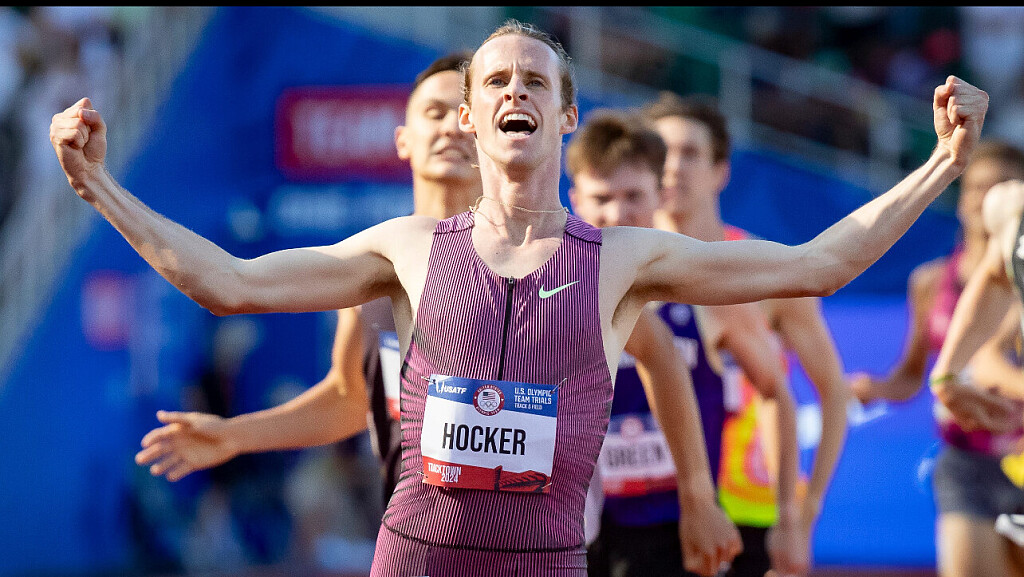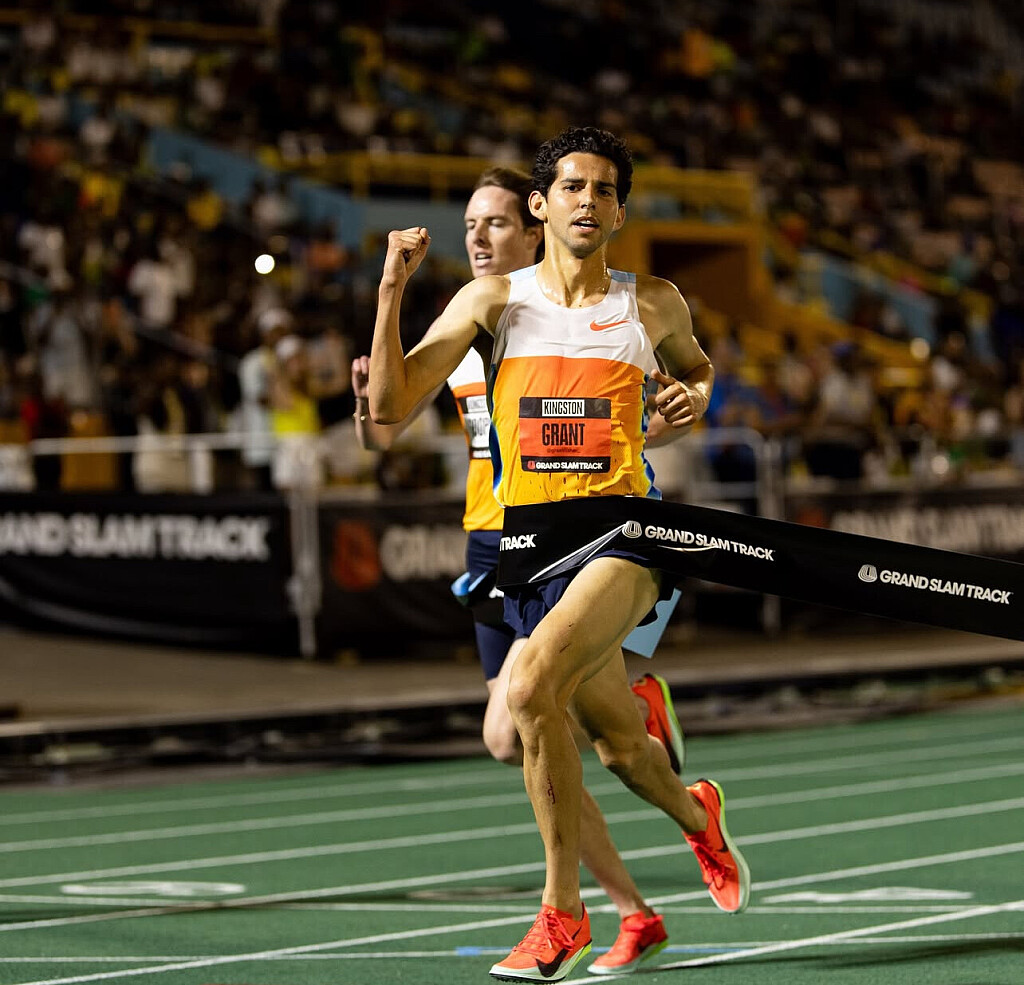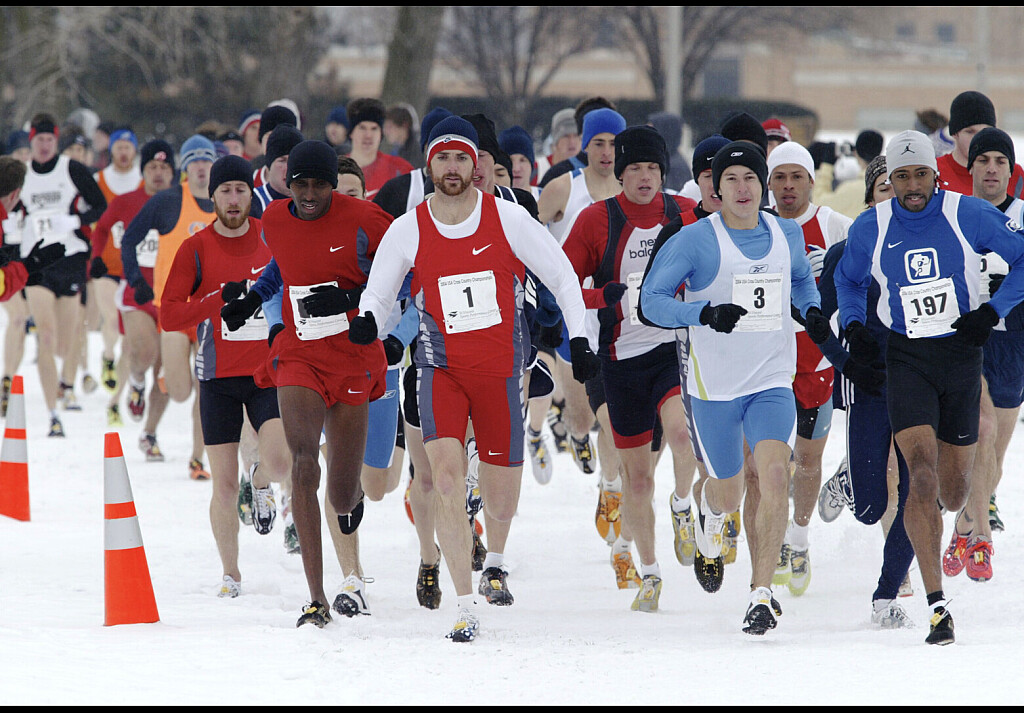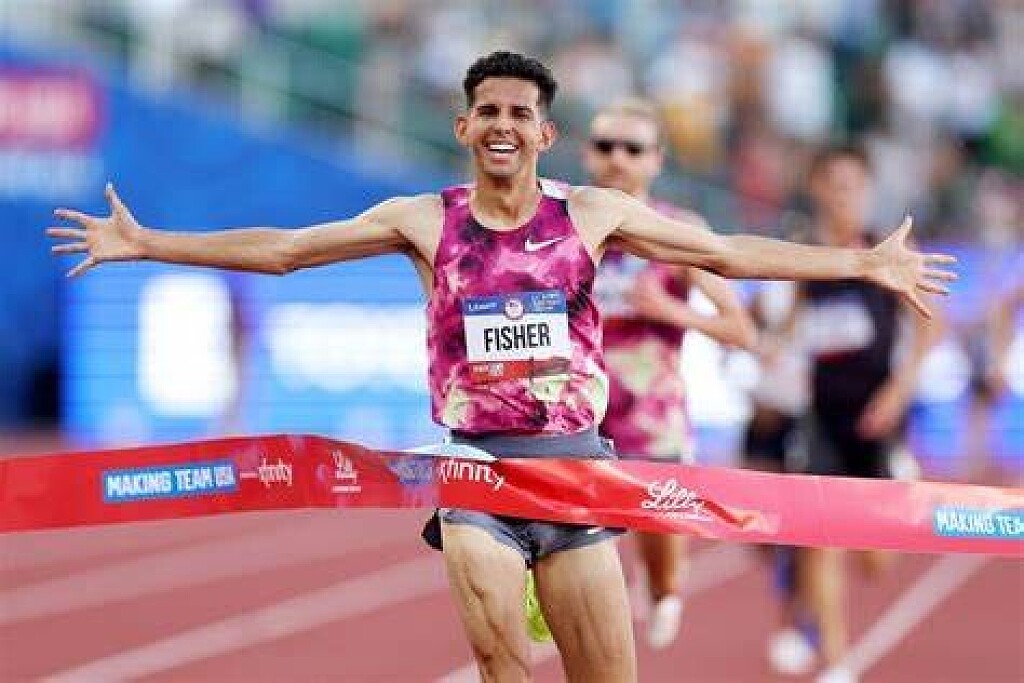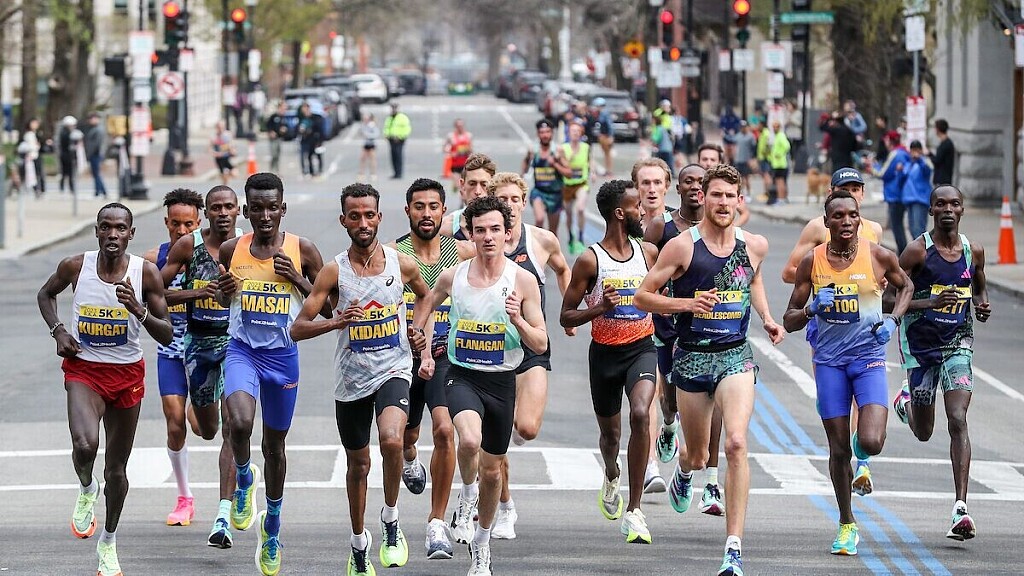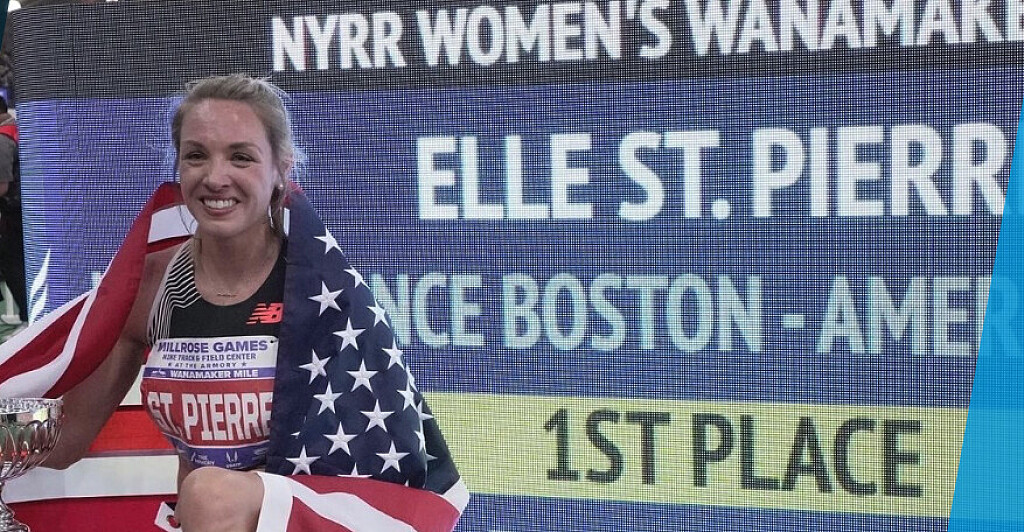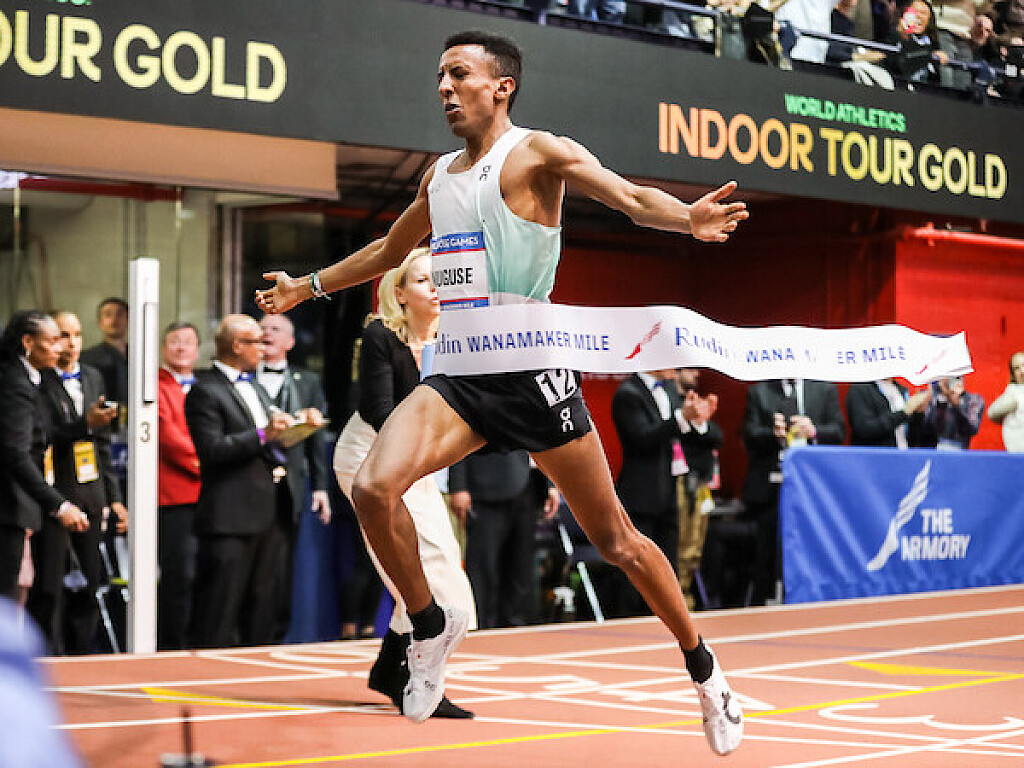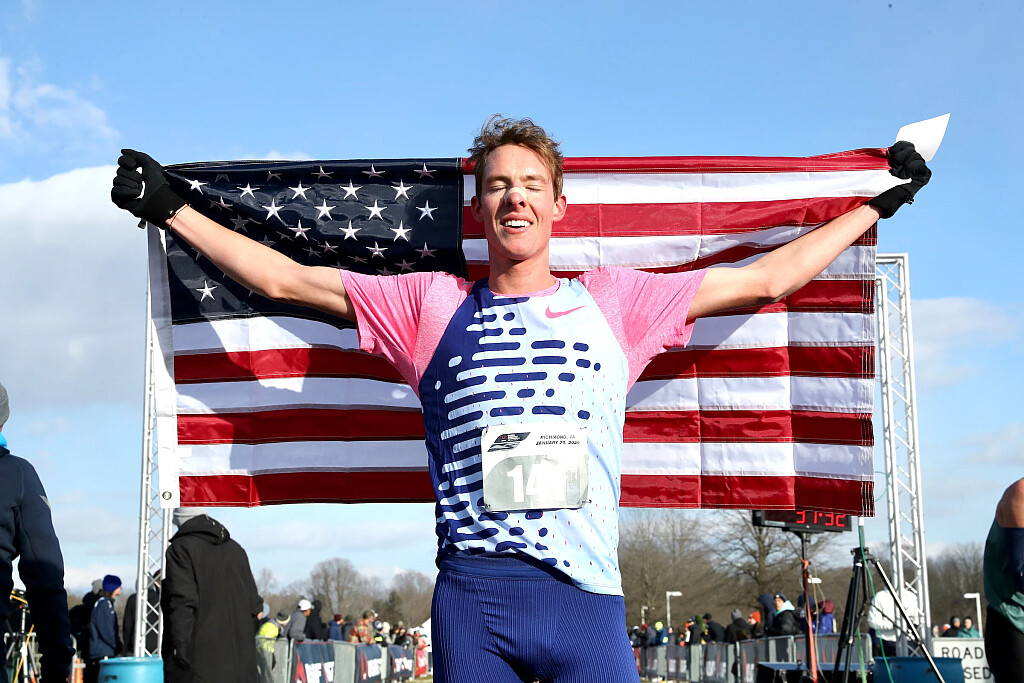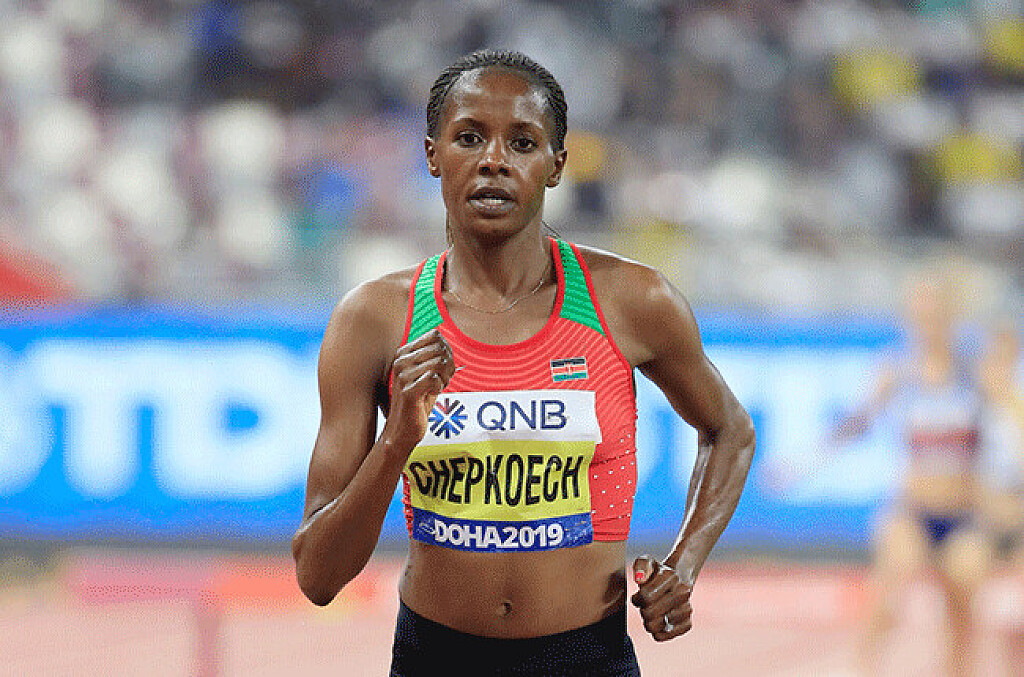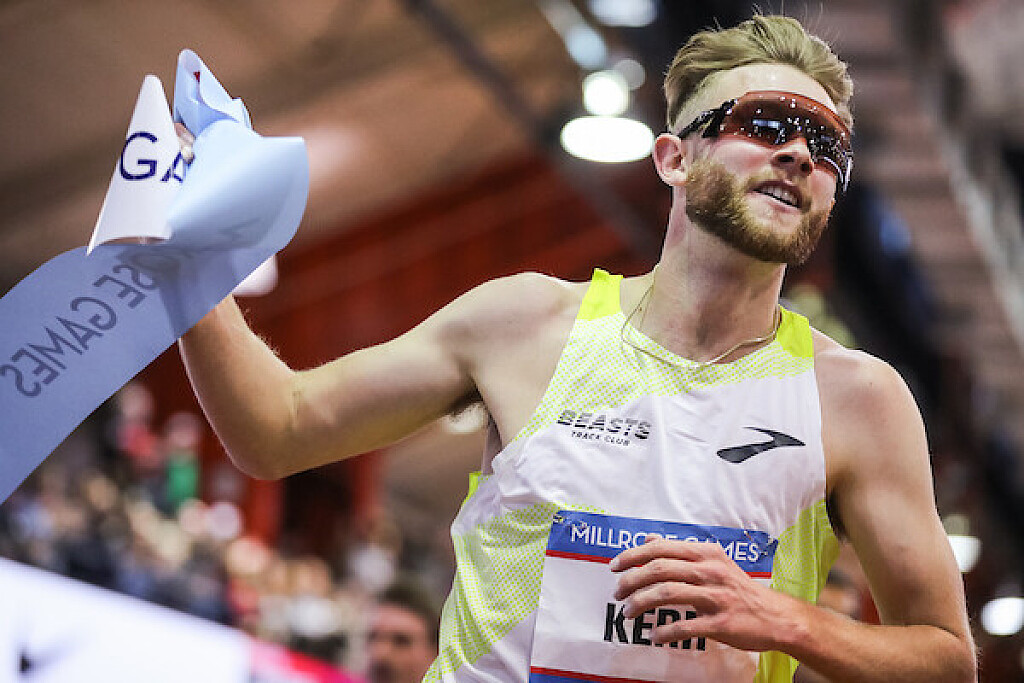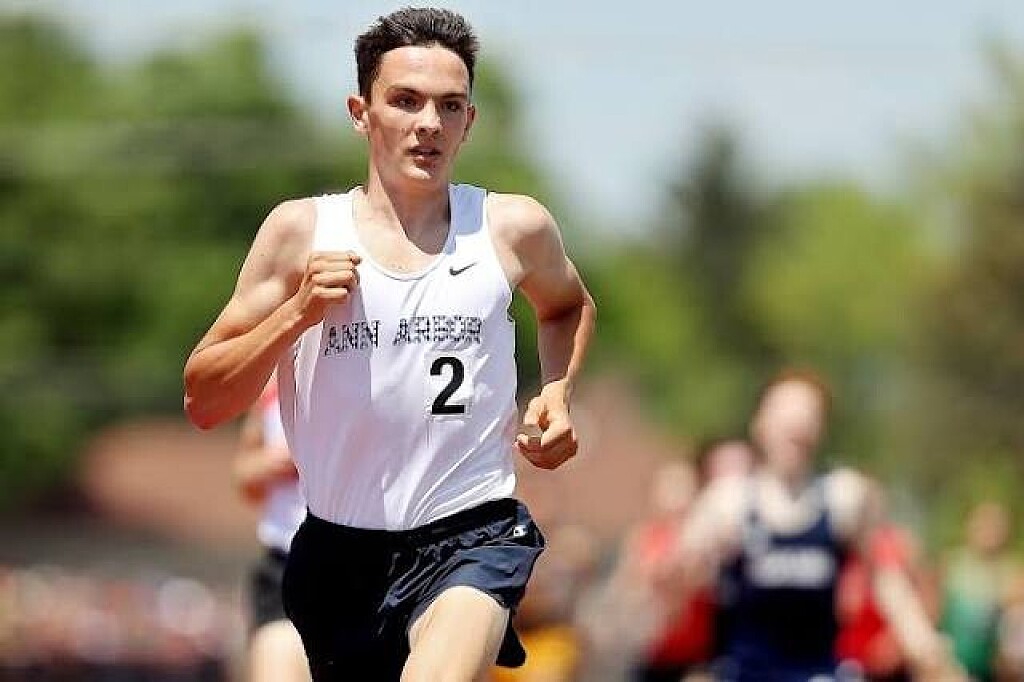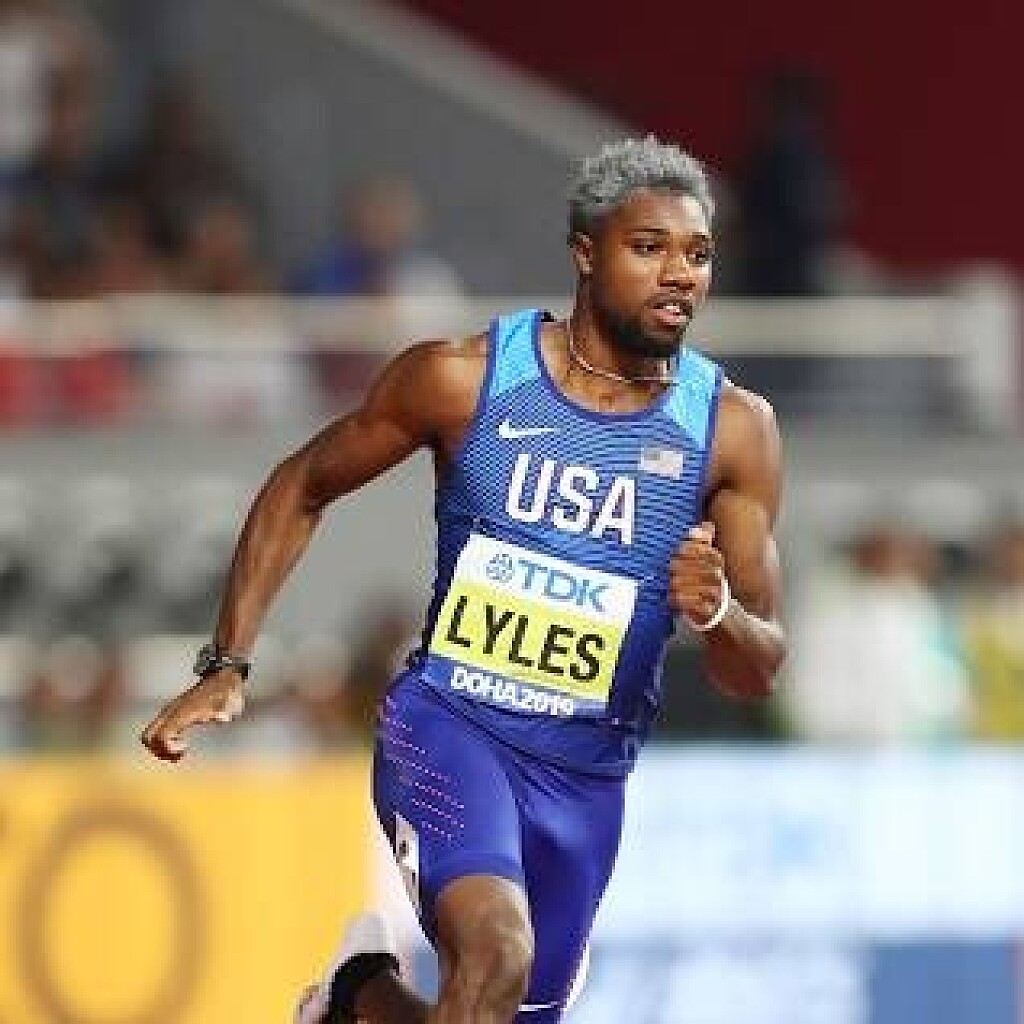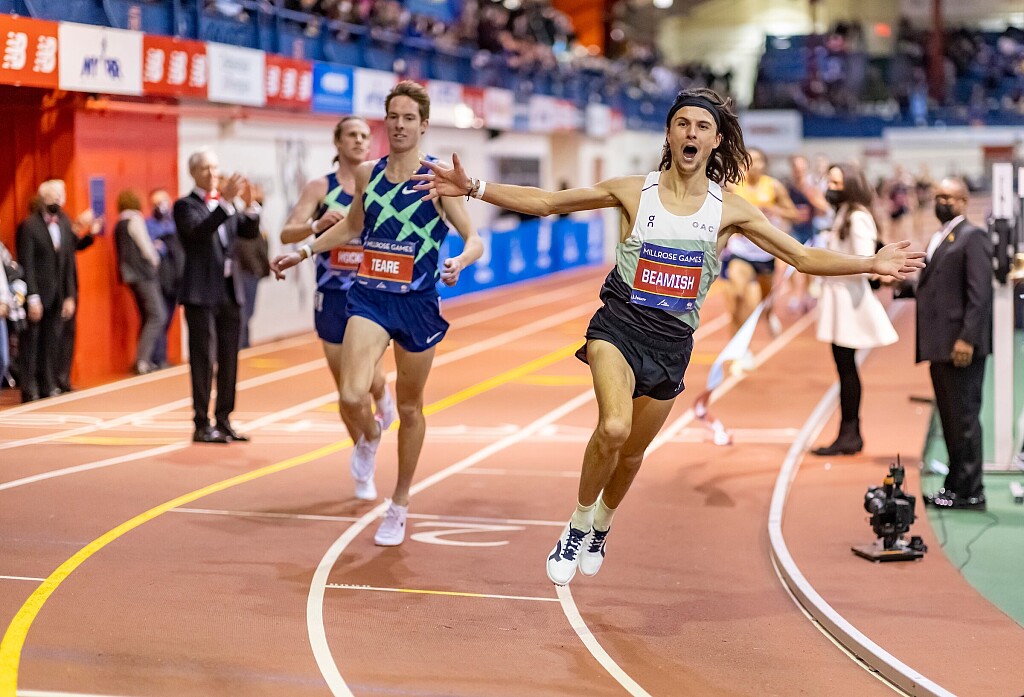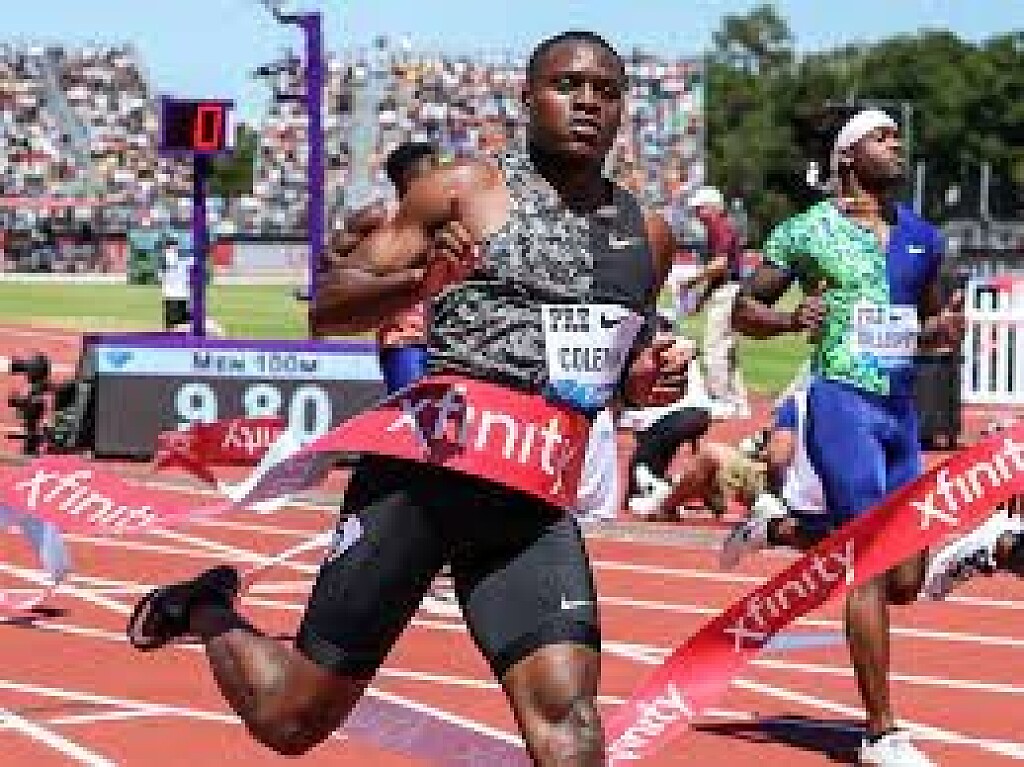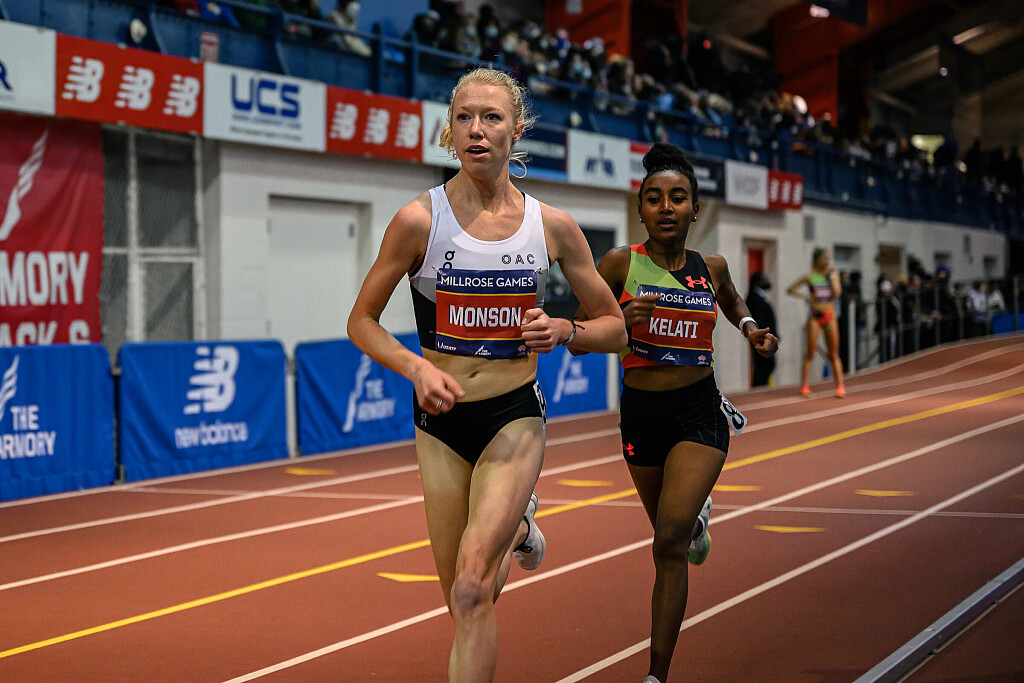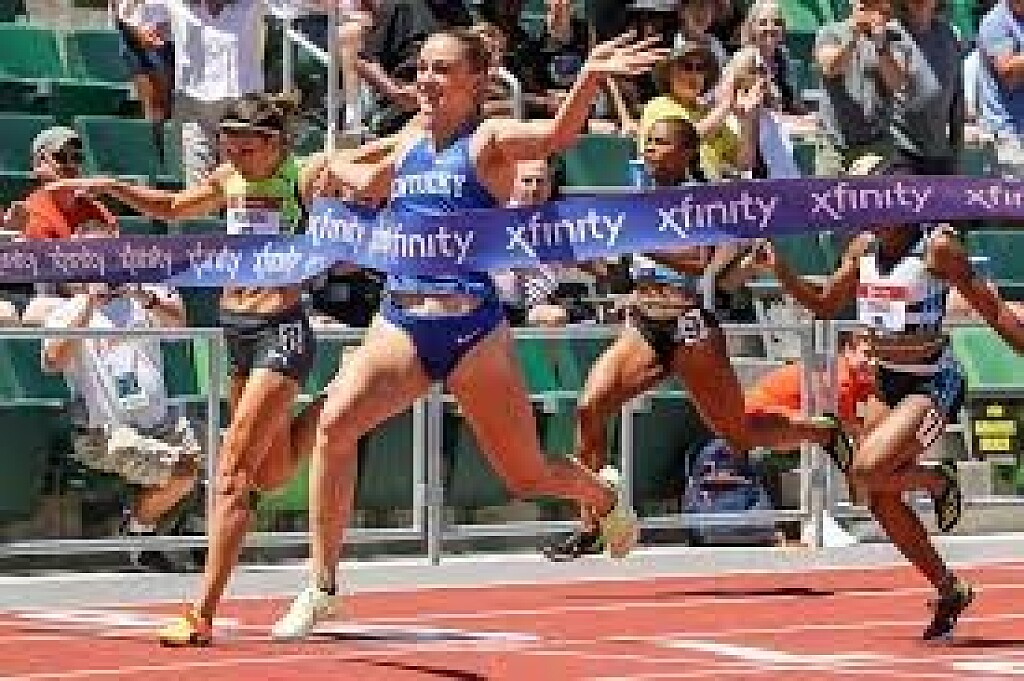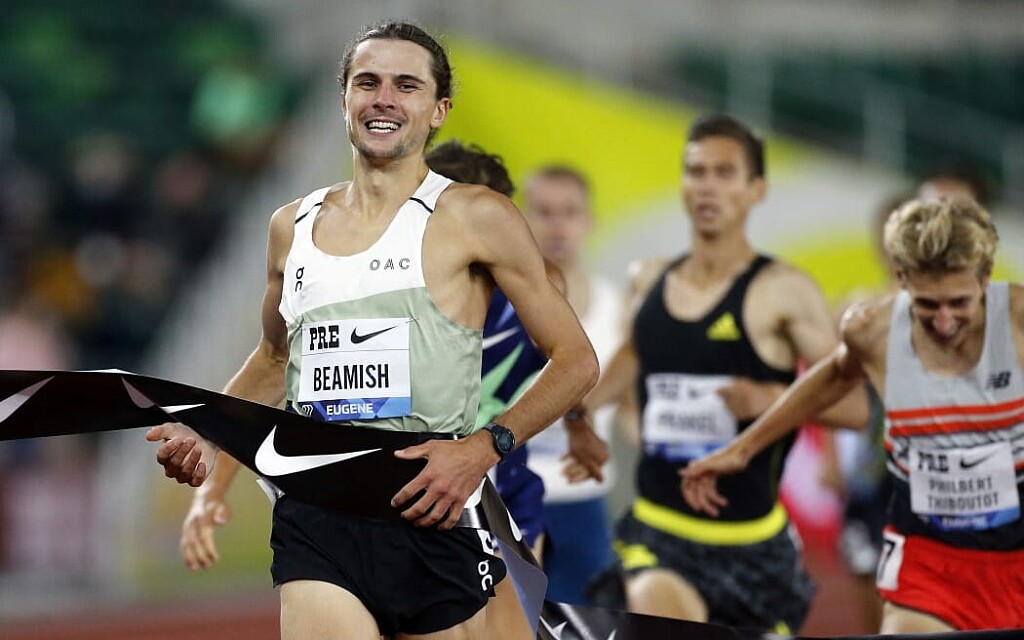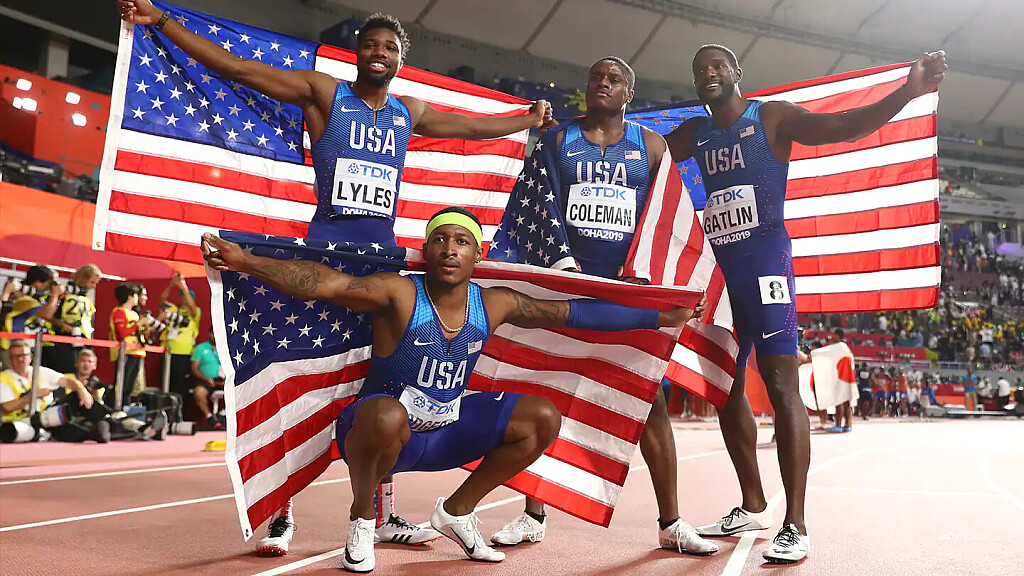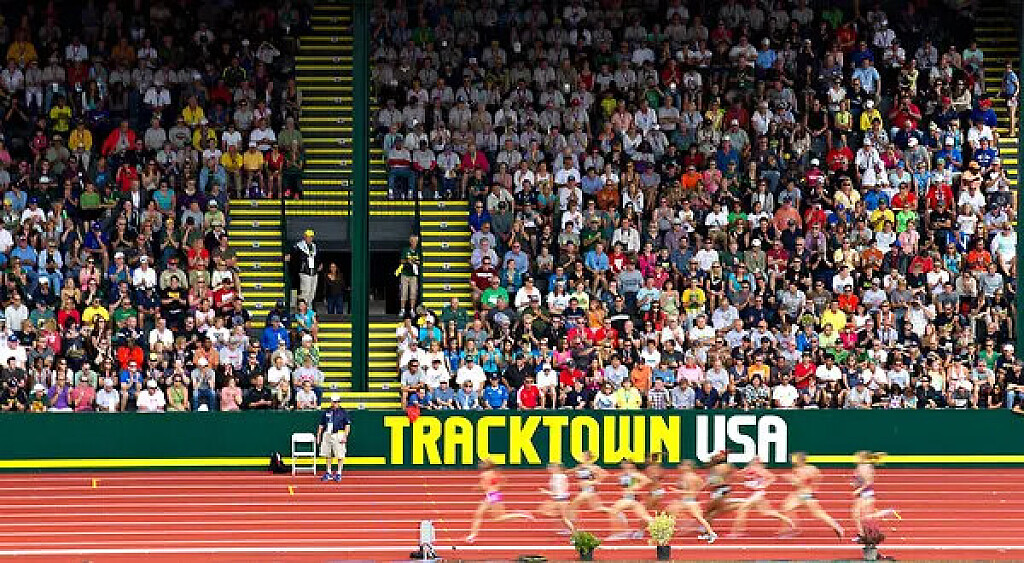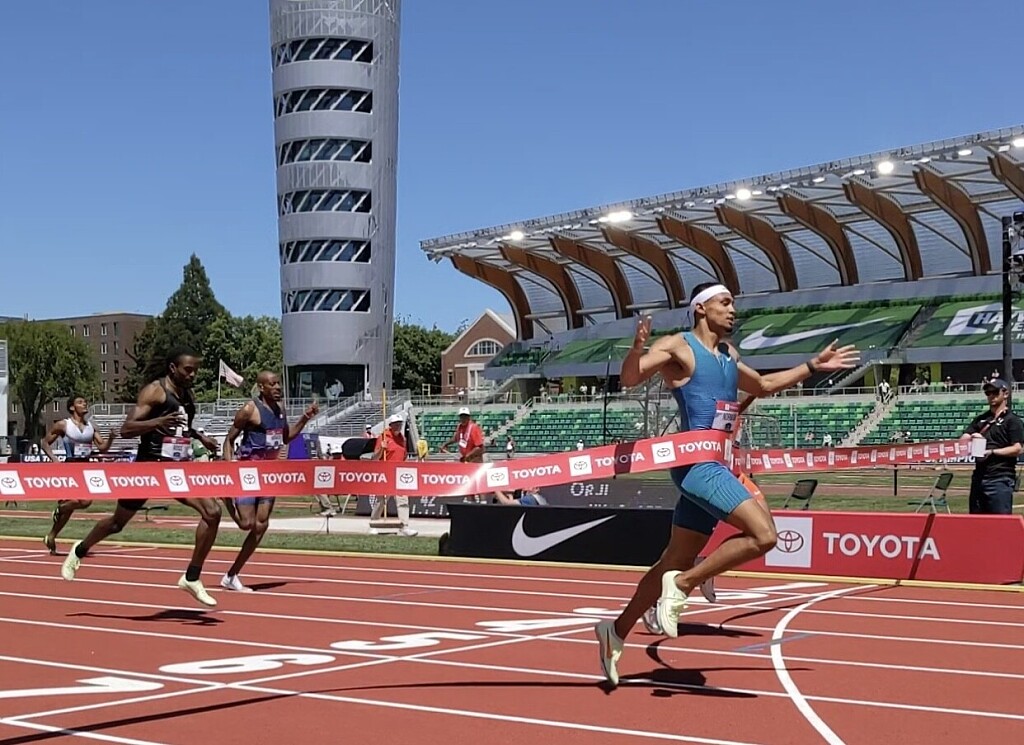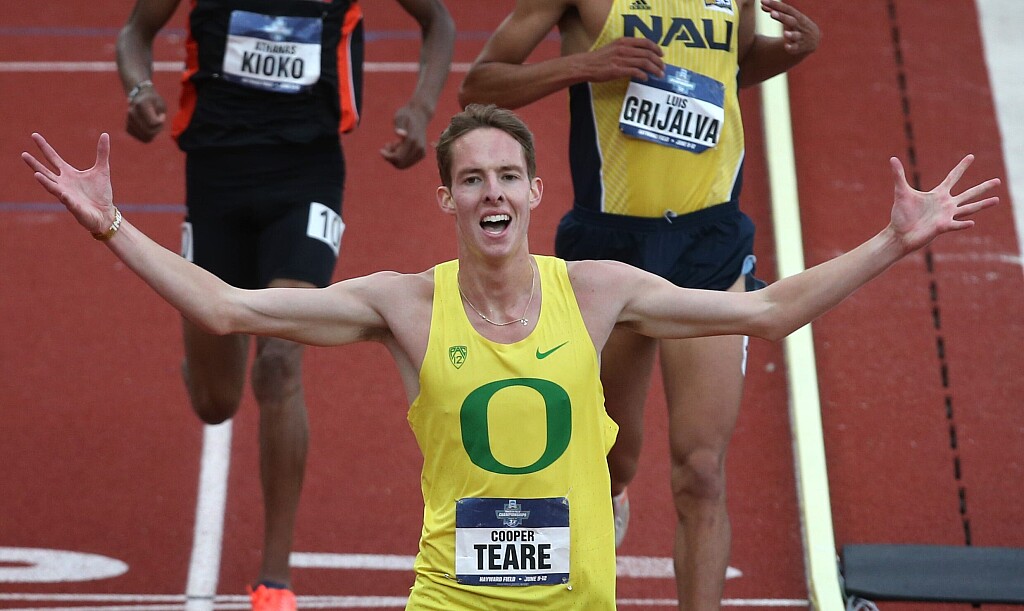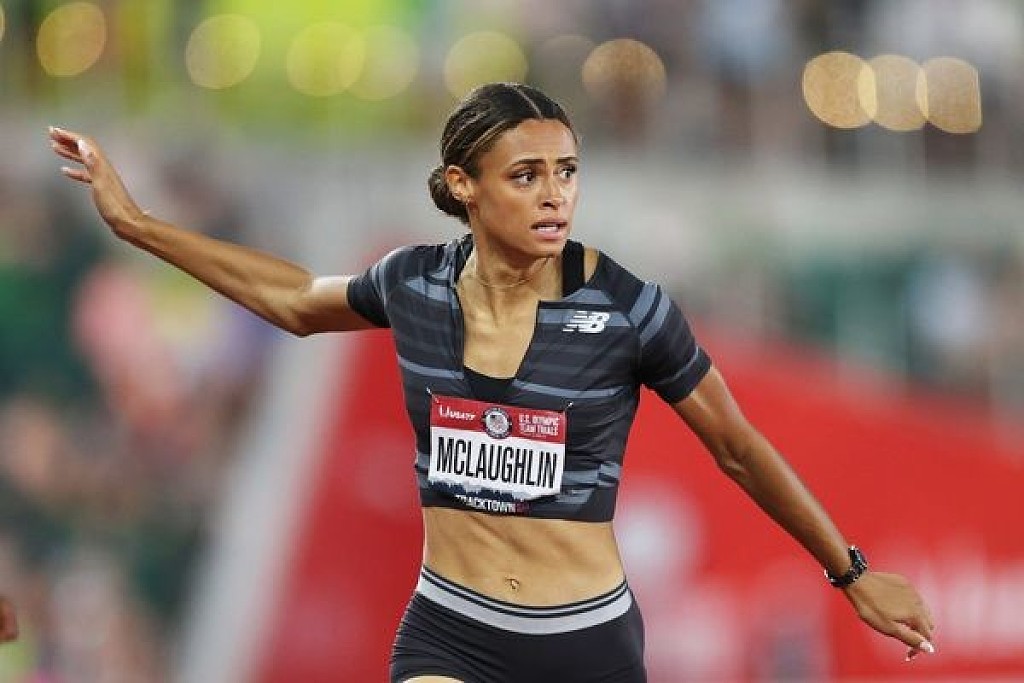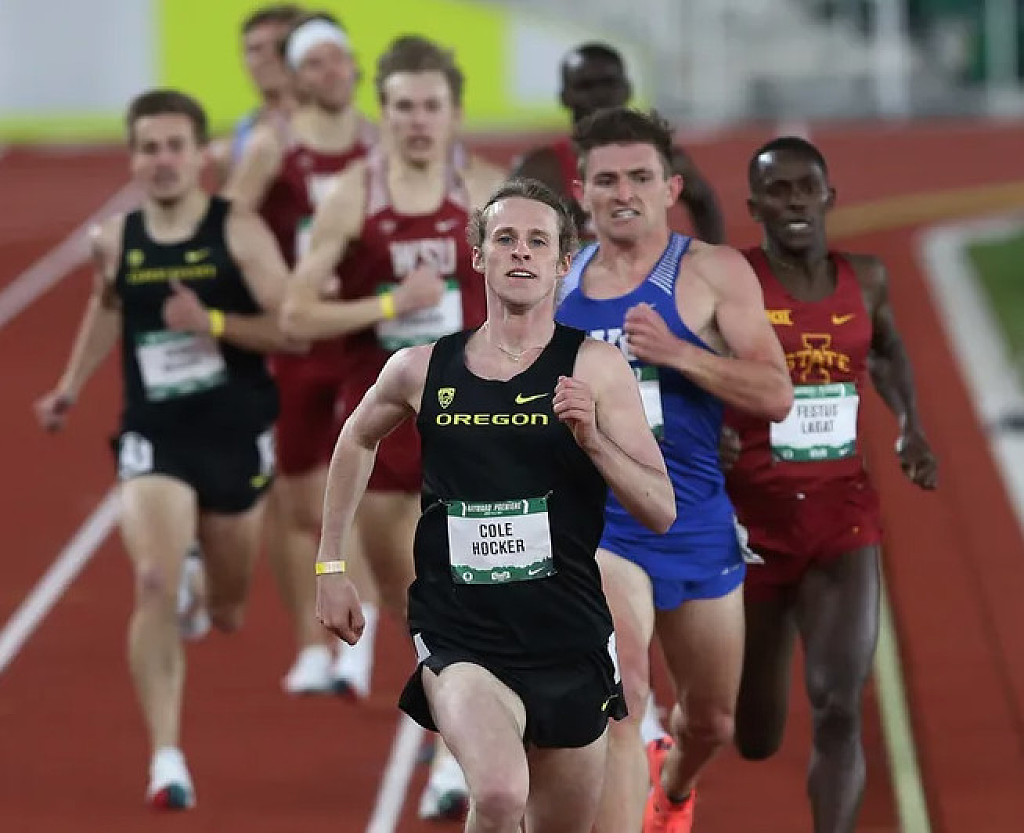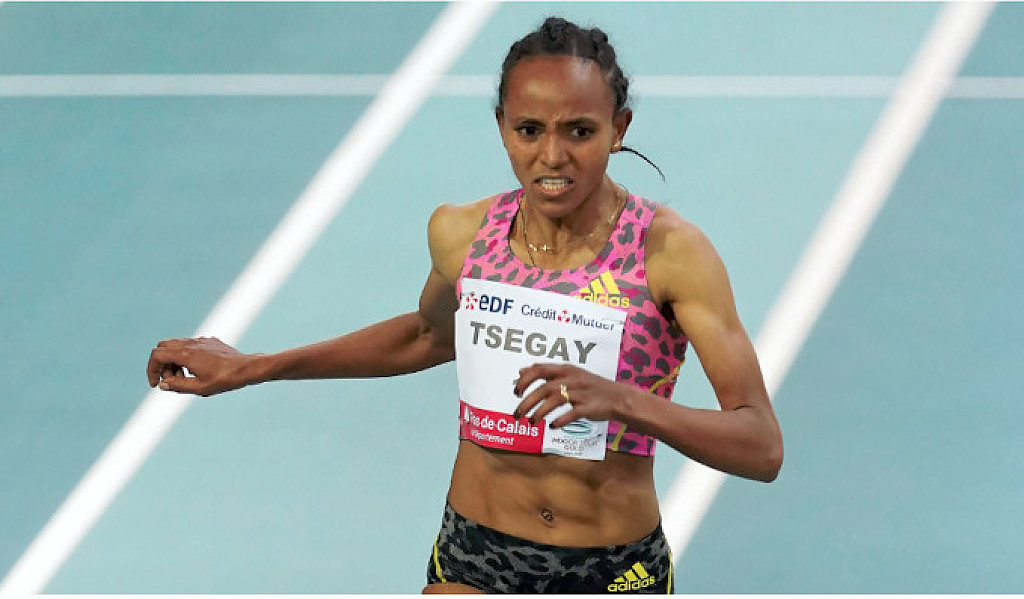Running News Daily
Running News Daily is edited by Bob Anderson. Send your news items to bob@mybestruns.com Advertising opportunities available. Train the Kenyan Way at KATA Kenya and Portugal owned and operated by Bob Anderson. Be sure to catch our movie A Long Run the movie KATA Running Camps and KATA Potato Farms - 31 now open in Kenya! https://kata.ke/
Index to Daily Posts · Sign Up For Updates · Run The World Feed
Articles tagged #Cooper Teare
Today's Running News
Cole Hocker Is Just Getting Started
Cole Hocker’s rise from NCAA standout to Olympic champion has been anything but conventional. After winning gold in the 1500 meters at the 2024 Paris Olympics with a stunning 3:27.65—an Olympic record—Hocker has emerged as one of the most formidable middle-distance runners in the world.
Training in the Shadows
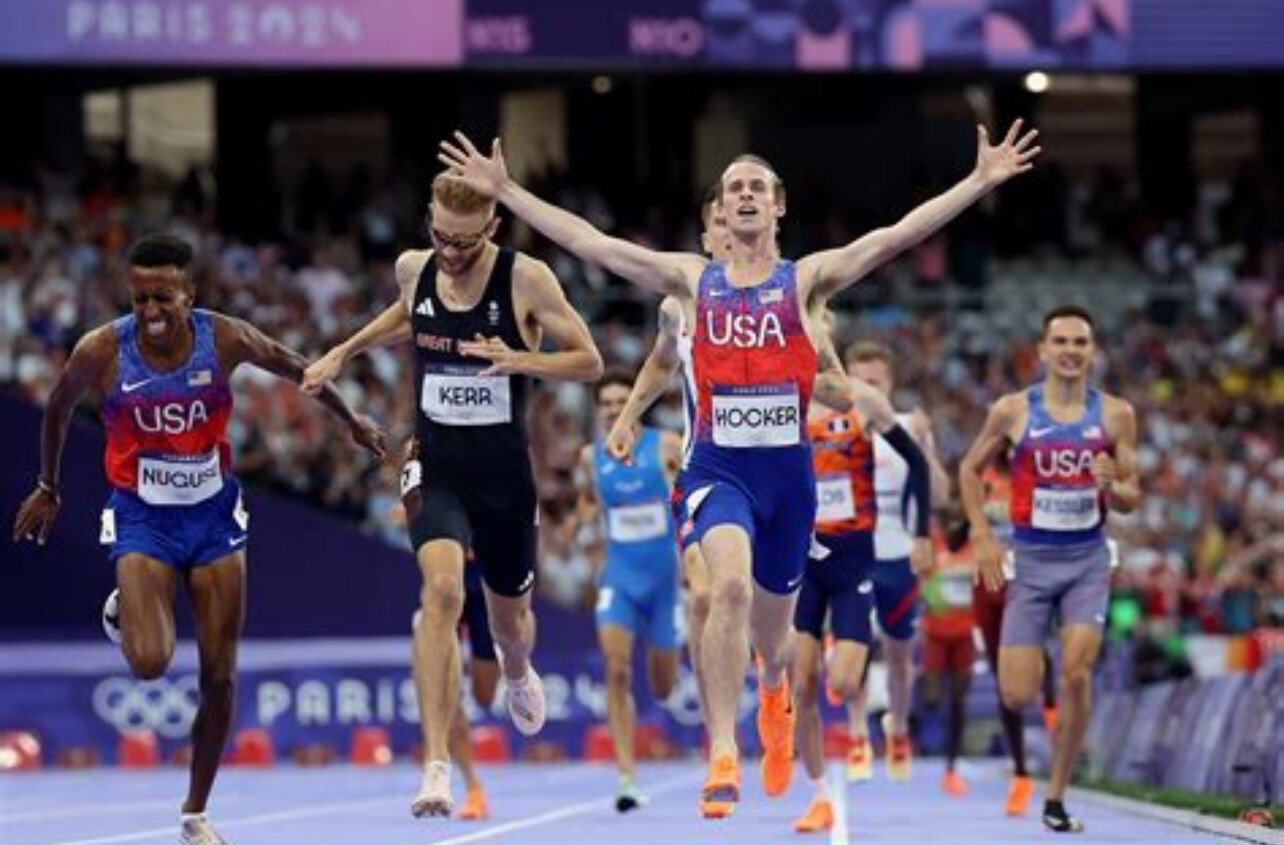
While many elite runners chase the spotlight, Hocker has chosen a different path. He trains in the quiet town of Blacksburg, Virginia, under the guidance of longtime coach Ben Thomas. Alongside training partner Cooper Teare, Hocker focuses on a regimen that emphasizes quality over quantity, rarely exceeding 80 miles per week. Their workouts often include hill repeats, pace variability, and strategic rest days, fostering both physical endurance and mental resilience.

Expanding His Range
Hocker isn’t content with dominating just the 1500 meters. In 2025, he has set his sights on longer distances, competing in the 3000 meters at the Millrose Games and clocking a personal best of 7:23.14, making him the second-fastest American ever at that distance. He also achieved a 5000-meter personal best of 12:57.82 at the BU Terrier DMR Challenge, securing the world standard for the upcoming World Championships.
Upcoming Showdowns
Hocker’s competitive spirit will be on full display at the 2025 Prefontaine Classic’s Bowerman Mile, where he will face off against rivals Jakob Ingebrigtsen and Yared Nuguse. This race promises to be a thrilling encounter among some of the world’s best middle-distance runners.
A Relentless Competitor
What sets Hocker apart isn’t just his physical prowess but his mental tenacity. Despite setbacks and fierce competition, he maintains an unwavering belief in his abilities. As he continues to push the boundaries of his sport, Hocker remains a testament to the power of determination and strategic training.
by Boris Baron
Login to leave a comment
Grant Fisher Wins Grand Slam Track 5000m in Jamaica, Leading U.S. Sweep and Taking Home $100,000
The U.S. distance team dominated under the lights in Kingston, Jamaica April 4 as Grant Fisher captured the men’s 5000m title on opening night of the Grand Slam Track series, earning $100,000 and recording the biggest international outdoor win of his career.
Fisher surged to the front with 600 meters to go and never looked back, crossing the line in 13:00.25, a world-class season opener. He was followed by Cooper Teare, who finished second in 13:01.74, and Dylan Jacobs, who rounded out the American sweep with a time of 13:04.10.

“It felt good to get out and compete,” Fisher said post-race. “This series is something new, and it’s exciting to be part of something that brings big-time racing to new places. Jamaica was loud, fast, and fun.”
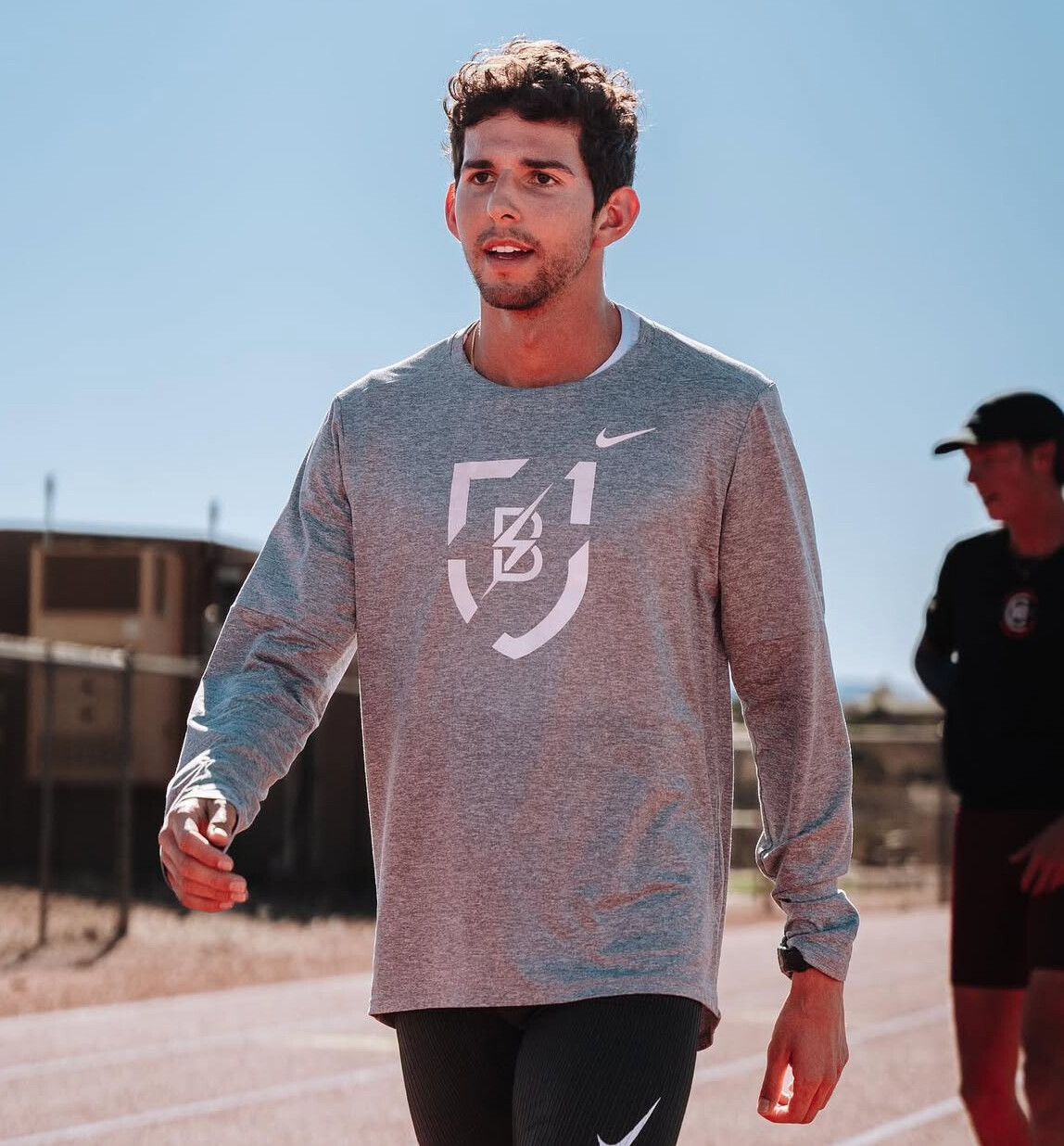
This was the debut event of the Grand Slam Track series, designed to bring elite track and field to new global venues with big prize money and a fan-first atmosphere. The Kingston crowd delivered with high energy, and the athletes responded with one of the fastest early-season 5000m races ever run on Jamaican soil.
Fisher, a two-time Olympian and former Stanford standout, walked away not just with a win, but with one of the largest single-race payouts in track distance running history—$100,000 for first place. The prize money is part of Grand Slam Track’s mission to elevate the sport and reward top-tier performances.
The U.S. sweep sends a powerful message heading into the heart of the 2025 season. With the next Grand Slam Track meet on the horizon, Fisher and his teammates have momentum—and the world is watching.
by Boris Baron
Login to leave a comment
You Should Stop Showering Between Runs—and My 7 Other Running Rules for 2025
If you’ve been on social media lately, you might have seen your friends making in-and-out lists. It’s been a thing for a few years—maybe less-so now—but the idea is to come up with some trends that you think will be popular and unpopular.
The best ones are fun and off the top of the head. Some of the thought-out ones about culture are kind of annoying. (Yeah, everyone agrees that “being mean” is out in 2025.)
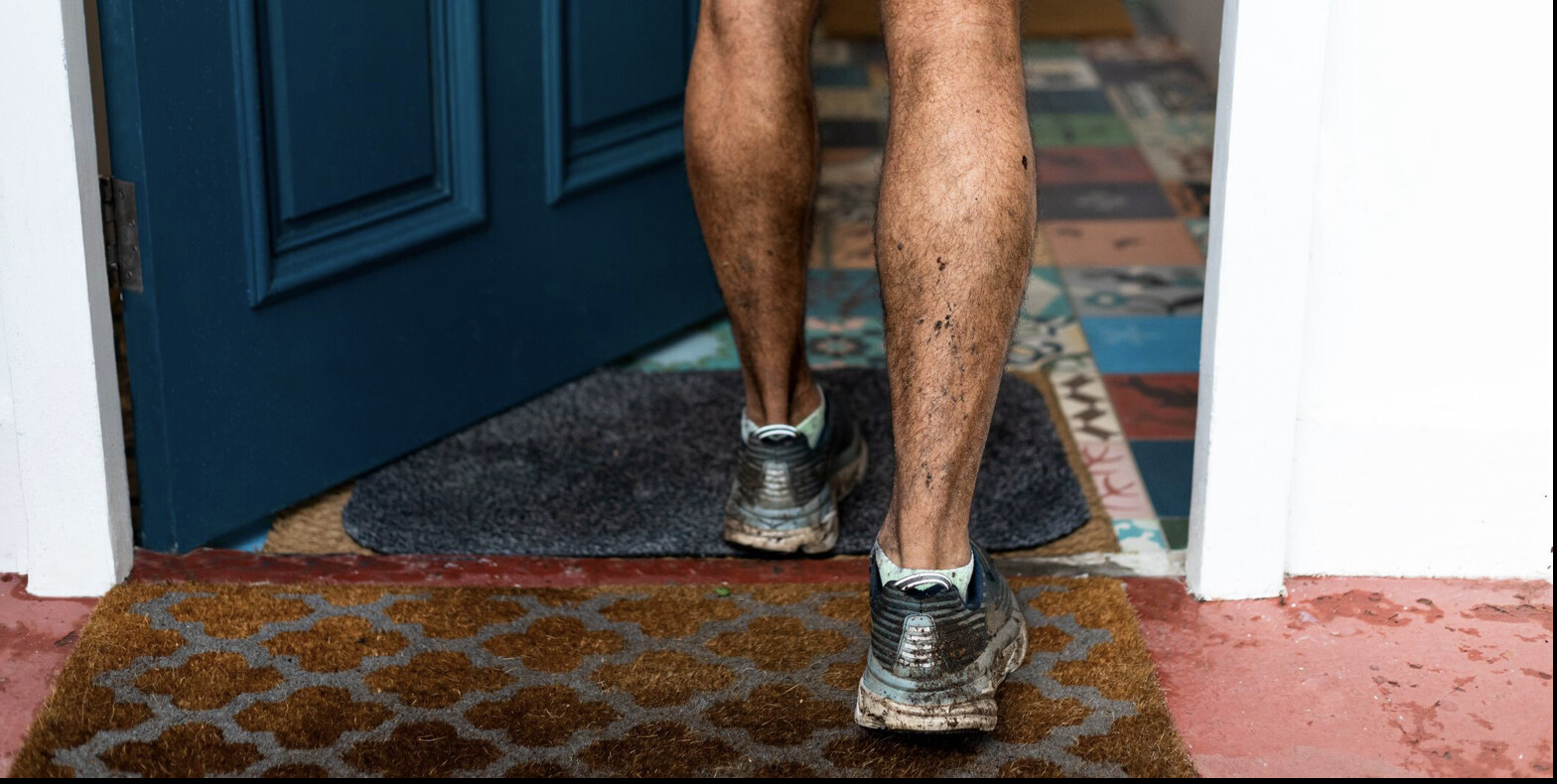
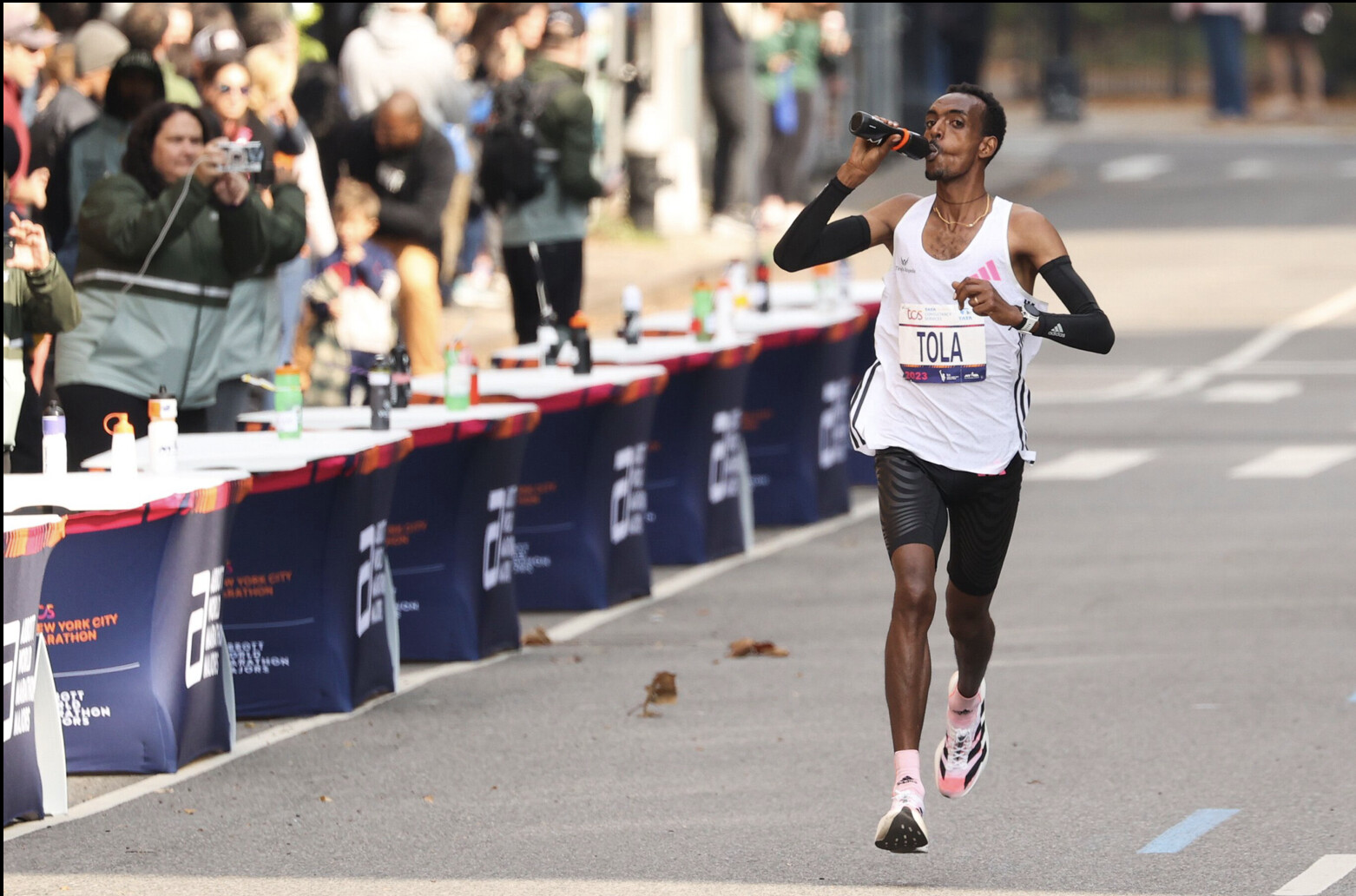
So I took the idea and applied it to my own running. Remember, these are specific to my experience. They’re not mandates or absolutes or even advice.
And at the end of the year, feel free to call me out if I was wrong. I probably was.
Out: Showering between runs
In a normal training week, I run twice a day on Wednesday and Thursday. Those are my recovery days, and I use them as a chance to get ahead on my weekly mileage. Usually, I run between 60 and 85 miles a week during marathon training, so to break it up, I’ll run once before work and then again during lunch or after work. Also known as “doubling.”
But that laundry piles up fast.
So on days when I work from home, sometimes I’ll put off my shower and stay in my workout clothes until my next run or weightlifting session. I live alone, so there’s no one to complain about my odor. (If you live with a roommate, partner, or family, use this strategy at your own risk.)
In: Wearing ugly race T-shirts
Remember the race T-shirts of the 2000s? The ones that looked like they were designed by a middle schooler and had no fewer than 1,000 ads on the back? I’ve gotten so many over the years, and most have gone straight to Goodwill or I’ve used them for yard work. But this year, I’d like to use my race T-shirts for their purpose—and run in them. There’s something fun about wearing an ill-fitting cotton tee with an ad for Jimbo’s Ford Dealership on the back.
Some races are pivoting away from shirts in favor of more environmentally friendly alternatives, but don’t expect them to completely disappear. According to Running USA, 58 percent of participants who took the 2024 Global Running Survey said that commemorative T-shirts are important to their race experience.
Out: Long runs
I’m planning on running Grandma’s Marathon in June, which means I’m building up my mileage now. But I’ve found that long runs are kind of overrated. Hear me out.
During my last marathon training block, I never ran more than 18 miles for my long run. Many programs call for 20 to 23-mile long runs, but my coach and I decided that 18-milers would get the job done. I’ve been running high mileage for close to a decade now, so I have a large aerobic base. The strategy worked, and I ran 2:27:07, hitting my goal of sub-2:28.
Right now, as I build, my coach and I are experimenting with the idea of downplaying the long run. Instead of using it as a key workout (for example, 10+ miles at marathon pace during the run), we’re focusing more on high-volume workouts twice a week, then using the long run just to get time on my feet. Similar to how Jakob Ingebrigtsen, who never runs more than 12.5 miles, trains.
A hard long run takes a large emotional and physical toll on my body, so I’ve found that I respond well when I keep the long run easy and focus on high-volume threshold sessions during the week. Of course, running on tired legs is key to running a good marathon. As I get closer to June, I’m sure there will be weeks where I use long runs as key workouts. But sometimes I need to remind myself that the other six days of the week are just as important.
In: Wearing a T-shirt over a long sleeve
For the past year, I’ve been mulling over buying a running vest. They look cool, but I keep telling myself that I don’t need to buy something that I’d probably only wear on a few runs each year. I live in eastern Pennsylvania, so I’m usually wearing something light in the fall or a full jacket in the winter. Enter, the working man’s vest: the T-shirt over the long sleeve shirt.
The sleeves keeps your arms warm while the T-shirt acts as a protectorate for your torso, insulating (not suffocating) you from the wind. Cooper Teare is a big fan.
Bonus points if you pair the look with an ugly race T-shirt. And double bonus points if you rock the look in a snowy race, like seemingly everyone did at the 2004 USATF Cross-Country Championships in Indianapolis.
In: Sunscreen
Man, I’m bad at this. If I’m preparing to sit out at the beach or pool, I lather up thoroughly. But if I’m heading out for a 90-minute run, I rarely put on sunscreen, justifying to myself that the route is shady or 90 minutes isn’t that long in the sun.
I’ve gotten better at sun protection—I almost always wear a hat and sunglasses year-round now—but I need to get better at lathering up on a regular basis. If you see me jogging this summer, ask me if I have sunscreen on and, if I don’t, shame me until I turn around and go home.
Out: Marathon bottle service
In my debut marathon at Indianapolis in November, I was lucky enough to qualify for the elite field, meaning I got perks like reserved restrooms, a separate warm-up area, and bottle service. For those unfamiliar, bottle service at a marathon is different from bottle service at a Las Vegas nightclub. Instead of access to marked-up Patrón, you get reserved spots on the course where you can stash your race fluid bottles.
Because there’s limited space, bottle stations are typically reserved for the fastest runners at a marathon. Instead of fumbling with the water or electrolyte-drink cups that the masses use, elites can consume whatever they trained with. In most cases, it’s some kind of carbohydrate mix.
At Indianapolis, there were three bottle stations: at miles 8, 14, and 20. I filled mine up with Maurten 160, but honestly, I didn’t feel like the perk was that necessary. I carried eight gels with me, taking them every 15 to 20 minutes, which was plenty. The bottles felt like more of a bonus or palate cleanser. They were cumbersome to hold and drink at race speed, and I found myself only taking a few sips then discarding them. Plus I had to pee the entire race, so I didn’t want to make the situation more dire.
Previously, I thought bottle service was non-negotiable to running a fast 26.2. But my mind has changed. If you envy the pros for their bottle access, don’t worry, you’re not missing out. Gels get the job done.
In: Off-distance races
I’m stealing this one from my 2024 in-and-out list. Off-distance races are events that diverge from traditional race distances (like the 5K, 10K, and marathon). Popular examples include the Bix 7 Road Race in Iowa (a 7-miler), the Boilermaker 15K in New York, and the Manchester Road Race in Connecticut (4.737 miles).
My favorite off-distance event is the Run for the Diamonds in Berwick, Pennsylvania. It’s a Thanksgiving day 9-miler that’s been going strong since 1908. The whole town comes out and cheers the runners up and down the massive hill that’s sandwiched in the middle of the route. Plus, the top seven men and women get real diamonds!
In: Short trail races
Speaking of race distances, let’s make short trail races a thing in 2025. Ultramarathons get most of the attention, but they’re not for everyone. At risk of contradicting myself against my previous “in,” there are plenty of trail options at the 5K, 10K, and half-marathon distance. Local state parks may host them, or sometimes there are running races tied in with mountain bike or cyclocross races. (Fifth Street ‘Cross in Pennsylvania does a great job of putting on both.)
I’d love to jump in a trail half marathon this summer between my two marathon training blocks. There won’t be any pressure to run a certain time, and let’s be real, running on the roads gets boring sometimes.
Login to leave a comment
Grant Fisher to Race Cole Hocker at 2025 Millrose Games in Battle of America’s Best Distance Runners
America’s two best distance runners are set to square off at America’s most prestigious indoor track meet.
On February 8, Grant Fisher will race Cole Hocker over 3,000 meters at the 2025 Millrose Games at the Armory. Fisher is the reigning US champion in the 5,000 and 10,000 meters and a double Olympic medalist. Hocker is the US and Olympic champion in the 1500 meters. Let the hype commence.
Over the last three years, the men’s 3,000 at Millrose has produced some of the best racing of the indoor season. In 2022, Geordie Beamish used a killer kick to upset Hocker and Cooper Teare in the home straight. In 2023, miler Josh Kerr surprisingly stepped up and won in a big pb of 7:33.47, demonstrating the endurance chops that would presage his World Championship 1500 victory six months later. Last year, the event was lengthened to two miles, and Kerr streaked to a world indoor record of 8:00.67 after Fisher tried and failed to break him during the second mile.
The top four finishers at 2024 Millrose would combine to earn seven global medals in 2024. Kerr claimed World Indoor gold in the 3,000 and Olympic silver in the 1500. Fisher, the runner-up in an American record of 8:03.62, took Olympic bronze in the 5,000 and 10,000. Hocker, 3rd in 8:05.70, claimed World Indoor silver and Olympic gold in the 1500. And fourth-placer Beamish (8:05.73) would defeat Hocker to win the World Indoor 1500 title three weeks later in Glasgow.
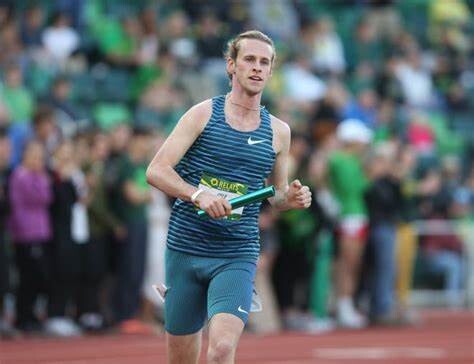
“You look back at that race, that was a pretty loaded field,” Fisher said on this week’s LetsRun.com Track Talk podcast where he announced he would be running Millrose. “Maybe not everyone said that at the time. They might’ve said Josh was the class of the field. But now post-Olympics, you see some people did really, really well throughout that season, and it all kind of started at Milrose at that two-mile. So it’ll be a fun spot to get things rolling again.”
More athletes will be announced as part of the field in the coming weeks, but Fisher versus Hocker should be enough to get any American distance running fan excited. This sort of matchup does not happen often. They were both Foot Locker Cross Country champions as high schoolers. They were both NCAA champions as collegians. They are both national champions as professionals. More than that, Hocker is the fastest American ever in the 1500 meters; Fisher holds the same title in the 3,000, 5,000, and 10,000. They are two of America’s brightest distance talents, now or ever, and they are firmly in their primes.
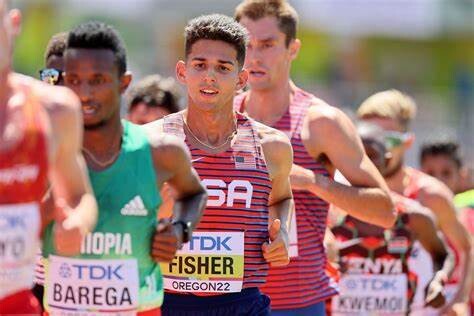
Fisher, 27, and Hocker, 23, did race three times this year, with Fisher prevailing in all three matchups: the 2-mile at Millrose, the 5,000 at the LA Grand Prix on May 17, and the Olympic Trials 5,000 final on June 30. But they’ve never raced each other as Olympic medalists. And that hits different.
Since 1968, four American men have medalled in the Olympic 1500 — Leo Manzano, Matthew Centrowitz, Hocker, and Yared Nuguse. During that same span, only two Americans have medalled in the Olympic 5,000 — Paul Chelimo and Fisher. Only once has one of the 1500 medalists raced one of the 5000 medalists. That came in May 2018, when Chelimo defeated Centrowitz in a 1500 at the Payton Jordan Invitational.
That’s it. Just one matchup between an American 1500 medalist and an American 5,000 medalist in more than half a century. On February 8 at Millrose, we’ll get to see the second, and it will come at the crossover distance of 3,000 meters. In their three battles in 2024, Fisher’s strength prevailed over Hocker’s kick, though Fisher acknowledged he had home-event advantage.
“I didn’t know I was 3-0 against Cole, but to be fair, I’ve never met him at his distance,” Fisher said. “So that gives me a little bit of an advantage. That would be like saying I’m undefeated against him at 10k or something — I don’t think that’s a fair comparison. So yeah, maybe I’ll drop down, race him in a 1500, have it be more of a balanced record to show. But Cole ran incredibly well in the 2-mile last year at Milrose.”
In 2025, however, Hocker will be looking to erase that advantage; he has spoken of wanting to be the best in the world at not just the 1500 meters, but the 5,000 as well. An early showdown against the Olympic bronze medalist is a great way to test the progess he is making.
So who will win on February 8? Hocker’s speed? Fisher’s strength? Or perhaps someone else entirely? We’ll find out in less than two months.
“It will be a really fun opportunity,” Fisher said. “Last year it was fast. I’m sure it’ll be fast this year. So it’s gonna be fun.”
by Jonathan Gault
Login to leave a comment
NYRR Millrose Games
The Pinnacle of Indoor Track & Field The NYRR Millrose Games, first held in 1908, remains the premier indoor track and field competition in the United States. The 2025 edition will once again bring the world’s top professional, collegiate, and high school athletes to New York City for a day of thrilling competition. Hosted at the New Balance Track &...
more...Cooper Teare, Fotyen Tesfay Win 2024 Boston 5K Titles
Tesfay, of Ethiopia, ran a course record time as Boston Marathon weekend got underway on Saturday.
It was a near-perfect morning as racing got underway for the long Boston Marathon weekend. The Boston 5K started things off, followed later by the B.A.A. Invitational Mile. Ethiopia’s Fotyen Tesfay and Cooper Teare of the U.S. claimed wins in the 5K, while Americans Krissy Gear and Casey Comber took home wins in the mile.
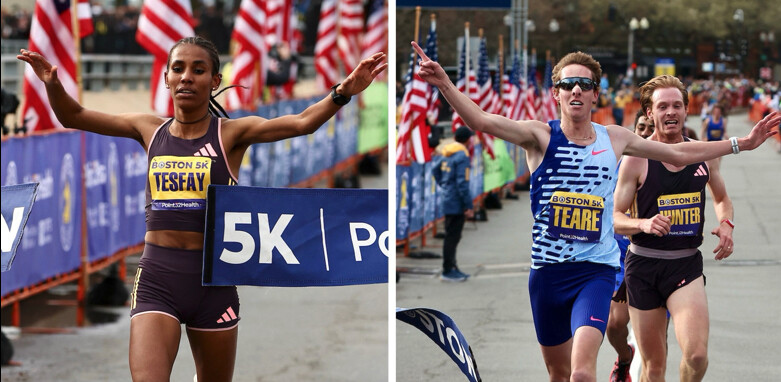
Tesfay runs a course record; Teare kicks to the win in the 5K
Tesfay rolled to victory in the women’s race at the Boston 5K. She controlled the entire race, running a time of 14:45, four seconds ahead of the previous course record set in 2022 by Senbere Teferi.
Tesfay took the race out hard from the gun, coming through the first mile in 4:43, a half second ahead of Kenya’s Emmaculate Acholi and a full eight seconds ahead of the rest of the field. She extended that advantage through the second mile and to the finish, winning by 13 seconds over second place Acholi, who ran 14:59.
“I came to break the course record, which I did, and I am so happy,” Tesfay said after the race.
Esther Gitahi of Kenya was third in 15:08, and Annie Rodenfels was the top American finisher, also running 15:08 for fourth.
The men’s race featured a sprint to the finish with Teare clocking a time of 13:38 to take the win over fellow American distance star Drew Hunter.
The men ran in a pack for much of the race. Eduardo Herrera of Mexico made the initial move in the final half mile and opened up about 10 meters on the field, but Teare and a few others were able to close the gap as they made the final turn onto Charles Street.
“If I can be in contact coming into the last straight, I think I can put myself in a pretty good spot,” Teare said of his strategy coming into the race.
From there, Teare used some good finishing speed and powered to the line to grab the win by a second over Hunter and Herrera, who wound up second and third, respectively.
Gear repeats as mile champ; Comber takes the win
For a second straight year, Krissy Gear won the women’s B.A.A. Invitational Mile. The U.S. champion in the steeplechase last year, Gear was able to successfully defend her title in the race. She unleashed a terrific kick in the final quarter mile to win in 4:42.45—a few ticks off her winning time from 2023.
Sweden’s Yolanda Ngarambe also had a strong kick, but ran out of room, taking second in 4:43.64.
In the men’s race, Comber took the title, running a time of 4:07.31. After a second place finish in 2023, Comber moved up to the top spot a year later.
The field ran down Great Britain’s Henry McLuckie, who led through the first two laps of the course. Comber proved to have the best kick in the end, outlasting second place Aaron Ahl of Canada, who ran 4:08.04.
Login to leave a comment
B.A.A. 5K
The B.A.A. 5K began in 2009, and became an instant hit among runners from far and wide. Viewed by many as the “calm before the storm,” the Sunday of Marathon weekend traditionally was for shopping, loading up on carbohydrates at the pasta dinner, and most importantly- resting. But now, runners of shorter distances, and even a few marathoners looking for...
more...More Than 100 Professional Athletes to Race Boston 5K
Fast fields featuring Olympians, Paralympians, rising stars, and recent B.A.A. event winners will take center stage at the Boston 5K presented by Point32Health and B.A.A. Invitational Mile on Saturday, April 13. The deepest professional field in race history will include more than 100 accomplished athletes from 19 nations, set to square off for prize money and awards in the open, wheelchair, and Para Athletics Divisions.
“More than 40,000 athletes will take part in B.A.A. races across Boston Marathon weekend,” said Jack Fleming, President and Chief Executive Officer of the B.A.A. “Saturday’s Boston 5K and B.A.A. Invitational Mile fields feature some of the fastest American and international stars, many who are aiming to compete at the Olympics and Paralympics in Paris.”
A new champion will be crowned and the stage is set for another close race at the Boston 5K. Ben Flanagan (Canada), Edwin Kurgat (Kenya), and Alex Masai (Kenya) – all top-five finishers a year ago – will return. They were at the front of an exciting finish a year ago that saw the top 13 men come across the line within ten seconds of the winner.
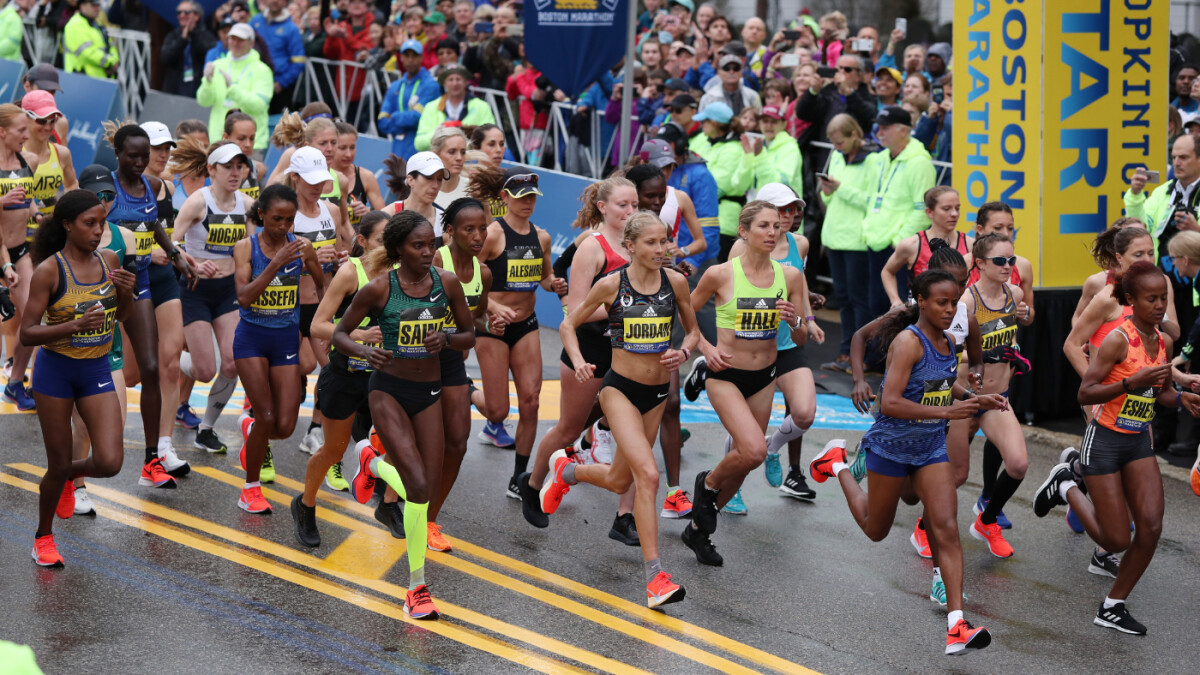
Top Americans Cooper Teare, Zach Panning, and Drew Hunter look to be at the front of the field. Teare is the reigning U.S. club cross country national champion, while Panning led a majority of February’s USA Olympic Team Trials – Marathon and Hunter is a former national champion indoors at 2 miles. B.A.A. High Performance Team members Eric Hamer and Barry Keane will be racing their hometown event.
Also on the start line will be Ben Kigen, an Olympic steeplechase bronze medalist in 2021; Simon Koech, last year’s Diamond League winner in the steeplechase; and Merhawi Mebrahtu, the 5,000m World Junior Championships silver medalist. Ethiopians Getnet Wale and Addisu Yihune are the two fastest men in the field, having gone sub-13:00 on the track for 5,000 meters.
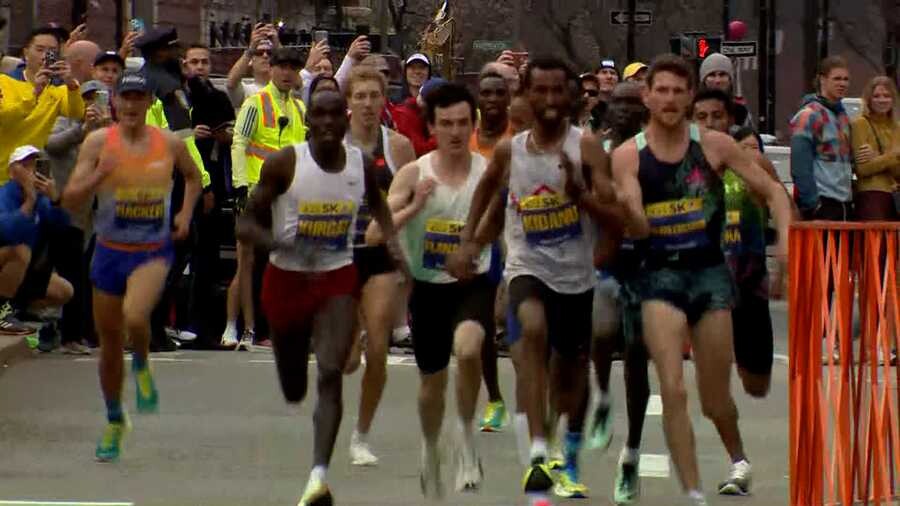
Leading the women’s field is USATF 5K National Champion and B.A.A. High Performance Team member Annie Rodenfels. Joining her are 2024 Team USA Olympic marathoner Dakotah Lindwurm, former American marathon record holder Keira D’Amato, perennial top-American Boston Marathoner Nell Rojas, as well as Team B.A.A. runners Abbey Wheeler, Bethany Hasz Jerde, and Megan Hasz Sailor.
Uganda’s Sarah Chelangat, the Cherry Blossom 10 Mile champion in 2023, and Mercy Chelangat, a former NCAA Cross Country and 10,000m winner, are both entered. Reigning B.A.A. Half Marathon champion Fotyen Tesfay of Ethiopia also comes back to Boston seeking another win.
In the wheelchair division, course record holder and six-time Boston Marathon champion Marcel Hug (Switzerland) will square off against Americans Daniel Romanchuk and Aaron Pike. Brazil’s Vanessa de Souza – the 2018 Boston 5K winner – is the women’s wheelchair division favorite. Perennial Para Athletics Division contenders El Amine Chentouf (T12, vision impairment), Brian Reynolds (T62, lower-limb impairment), and Marko Cheseto (T62, lower-limb impairment) will vie for prize money and podium placings. This will be the largest professional Para Athletics Division field in event history.
Nearly 10,000 participants will take part in the Boston 5K, serving as the first race of the 2024 B.A.A. Distance Medley series.
KRISSY GEAR LOOKS TO REPEAT IN B.A.A. INVITATIONAL MILE
Krissy Gear earned a hard-fought B.A.A. Invitational Mile win last year and now comes in with the target on her back as defending champion. Four of the top five finishers from 2024 return, including Susan Ejore (Kenya), Jazz Shukla (Canada) and Taryn Rawlings (USA). Micaela Degenero, the 2022 NCAA Indoor Mile champion, and 4:23.94 Helen Schlachtenhaufen are entered as well.
Massachusetts high school standout Ellie Shea will take on the professionals. The Belmont High School student-athlete finished 10th at last year’s B.A.A. Invitational Mile.
Massachusetts native and 3:52.94 miler Johnny Gregorek leads the men’s field of competitors. Melkeneh Azize of Ethiopia, the world junior champion at 3000m in 2022, and Harvard’s Vivien Henz, a national champion in Luxembourg, will each make their B.A.A. road racing debuts.
In addition to the professionals, student-athletes from each of the eight cities and towns that make up the Boston Marathon route will compete in a Scholastic Mile and Middle School 1K.
Login to leave a comment
B.A.A. 5K
The B.A.A. 5K began in 2009, and became an instant hit among runners from far and wide. Viewed by many as the “calm before the storm,” the Sunday of Marathon weekend traditionally was for shopping, loading up on carbohydrates at the pasta dinner, and most importantly- resting. But now, runners of shorter distances, and even a few marathoners looking for...
more...ST. PIERRE'S MILE RECORD EARNS HER USATF ATHLETE OF THE WEEK HONORS
INDIANAPOLIS — Bettering her own American record* in the women's mile, Elle St. Pierre (Enosburg, Vermont/USATF New England) earned recognition as the 5th USATF Athlete of the Week award winner for 2024.In only her second track race since giving birth to a son last March, St. Pierre clipped almost a half-second off her own AR in the mile to win the Millrose Games in 4:16.41. She became the third fastest woman ever and her en route 1500 time of 4:00.34 puts her second on the all-time U.S. indoor performer list.St. Pierre, the 2022 World Indoor Championships silver medalist in the 3000 and an Olympian at Tokyo in the 1500, beat a star-studded field at Millrose, making a strong move with 300 to go to pass Australia's Jessica Hull and take the lead. Her final quarter-mile of 61.33 put away a group of women who behind her set four national records and eight lifetime bests. Other top performances from last week:
Grant Fisher lowered the American best in the men's 2 mile with an 8:03.62 to place second at the Millrose Games. He is now the No. 3 all-time world performer. En route, his 7:30.88 for 3000 moved him to No. 3 on the all-time U.S. performer list.
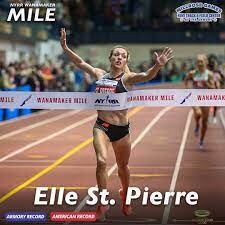
Alicia Monson lowered the American best in the women's 2 mile at the Millrose Games, placing third in 9:09.70. She is now the No. 5 all-time world performer.
Yared Nuguse won the men's mile at the Millrose Games in 3:47.83, the third fastest time ever indoors, and the second fastest by an American. His en route 3:33.43 for 1500 was the third fastest ever by an American.
Brandon Miller won the men's 600 at the Kirby Elite meet in Albuquerque in 1:14.03, making him the No. 2 all-time world performer.
Nia Akins won the women's 600 at the Kirby Elite meet in Albuquerque in a world-leading 1:24.32 to move to No. 8 on the all-time world performer list.
Grant Holloway continued his 10-year winning streak in the men's 60H with a 7.32 at the Liévin World Indoor Tour - Gold meet in France. He tied the fourth-fastest time ever and only one man besides him has ever run faster.
*All records subject to verification by the USATF Records Committee. Now in its 23nd year, USATF’s Athlete of the Week program is designed to recognize outstanding performers at all levels of the sport. USATF names a new honoree each week when there are high-level competitions and features the athlete on USATF.org. Selections are based on top performances and results from the previous week.2024 Winners: January 17, Weini Kelati; January 24, Cooper Teare; January 31, Nico Young; February 7, Fiona O'Keeffe; February 14, Elle St. Pierre.
Login to leave a comment
2026 USAFT Indoor Championships
The 2026 USATF Indoor Championships, presented by Prevagen, are set to take place on February 22-23 at the Ocean Breeze Athletic Complex in Staten Island, New York. This premier event will feature the nation's top track and field athletes competing for national titles and spots on the U.S. team for the 2025 World Indoor Championships in Nanjing, China. The Ocean...
more...Josh Kerr puts Jakob Ingebrigtsen's beef aside as he focuses on next assignment
Scottish middle-distance runner Josh Kerr is not focusing on Jakob Ingebrigtsen's comments about him as he is eyeing another major assignment where he will attempt to attack the two-mile world record.
Reigning World 1500m champion Josh Kerr is not focusing on track rival Jakob Ingebrigtsen’s sentiments as he gears up for the Millrose Games on Sunday, February 11.
Kerr and Ingebrigtsen started their beef last year after the World Championships in Budapest, Hungary where the Scottish man bet the Norwegian to second place in the 1500m.
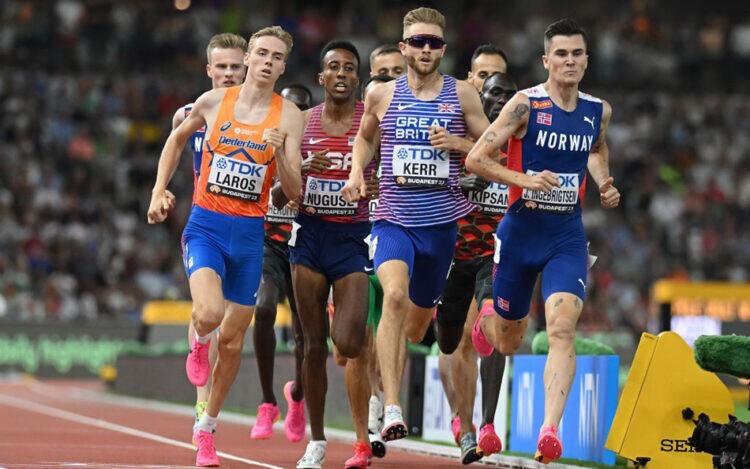
Kerr then rekindled the beef saying that Ingebrigtsen has a lot to work on when it comes to his manners on and off the track.
The Scot emphasised that the Norwegian has a “high ego” and is used to being surrounded by “yes men”, making it difficult for him to understand that there is a difference between respect and antipathy.
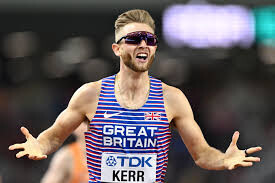
The reigning World 5000m champion, Ingebrigtsen has been out of competition due to an injury and he just made a comeback to the limelight announcing that he is expecting a child with his wife.
As per Letsrun.com, Ingebrigtsen also addressed Kerr, noting that he thinks the latter is just looking for attention ahead of the Olympic Games in Paris, France.
He said: “I realized that there was “something,” but I can’t quite say what it was. Let’s call it a desperate attempt. And I don’t think that was so smart. It might look silly at some point.”
However, Kerr seems unshaken by his sentiments and he is firmly eyeing his next assignment where he intends to make history.
He will tackle the two miles with Mo Farah’s world record of 8:03.40 in his sights. Kerr will be up against US 5000m and 10,000m record-holder Grant Fisher and Olympic 1500m sixth-placer Cole Hocker, New Zealander Geordie Beamish, and former US 1500m champion Cooper Teare.
“In February, I’m still coming off really high base training and I still want to be toward 5000m at that time of year. A two-mile just fits in perfectly where it is a bit speedier, but it’s not the mile,” he said as per Athletics Weekly.
by Abigael Wuafula
Login to leave a comment
NYRR Millrose Games
The Pinnacle of Indoor Track & Field The NYRR Millrose Games, first held in 1908, remains the premier indoor track and field competition in the United States. The 2025 edition will once again bring the world’s top professional, collegiate, and high school athletes to New York City for a day of thrilling competition. Hosted at the New Balance Track &...
more...Stellar Field Assembled to Challenge Yared Nuguse in the NYRR Men's Wanamaker Mile
The 116th Millrose Games is now just 19 days away, as the eyes of the global athletics community will once again return to the Nike Track & Field Center at The Armory. As always, the meet will conclude with the NYRR Men’s Wanamaker Mile, a legendary race with over a century of tradition.
The Millrose Games is scheduled to take place on Sunday, February 11th.
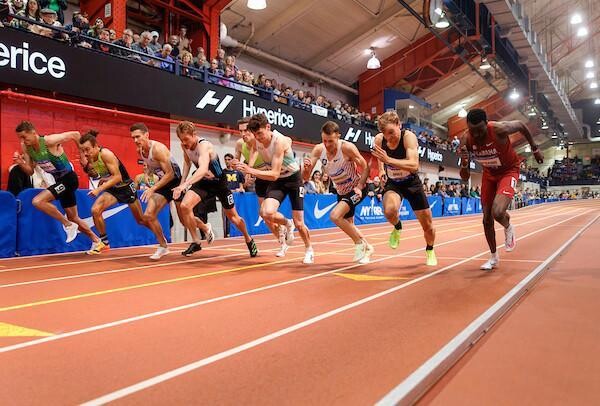
Previously announced as the headliner for this race is defending champion Yared Nuguese, the American record holder in the mile indoors and outdoors. Nuguse has his eyes on the world record of 3:47.01, but he will have to contend with a number of the best athletes in the world if he is to win his second straight Wanamaker title, including two additional 1500m finalists from last summer’s World Championships.
“[The world record] feels like a goal that’s within my grasp of achieving.” said Nuguse. “Not only am I stronger and smarter than I was last year, but I feel like I will be able to attack this race with a lot more confidence to chase the world record. When I went to Millrose for the first time, I was just chasing the American record. So changing that mindset, just seeing how far I’ve come, it feels like a very real possibility at this point.”

The elite athletes lining up to challenge Nuguse are as follows:
-Mario Garcia Romo was last year’s runner-up, and he is the 2022 1500m champion for Spain and a two-time World Championship finalist.
-Neil Gourley is a three-time British 1500m champion, and he holds the European indoor mile record.
-George Mills placed third in the mile at the Diamond League final, moving up to third on the all-time British list, before also placing second at the NYRR 5th Avenue Mile.
-Hobbs Kessler is the reigning World Road Mile champion, and he also holds the national high school indoor mile record.
-Andrew Coscoran is an Olympian and the Irish record holder over 1500m.
-Adam Spencer of the University of Wisconsin and Australia holds the NCAA 1500m record.
-Sam Prakel is the US Road Mile champion, and he placed fourth nationally in the 1500m.
-Charles Philibert-Thiboutot is a Canadian Olympian and the 2023 NACAC 1500m champion.
The winner of the mile at the Dr. Sander Invitational this Saturday, January 27th will be added to the NYRR Wanamaker Mile field as well.
Stay tuned over the coming weeks before the 116th Millrose Games, as the world-class start lists are finalized. Top athletes already confirmed to compete include Laura Muir, Elle Purrier-St. Pierre, Dina Asher-Smith, Julien Alfred, Alicia Monson, Grant Fisher, Danielle Williams, Josh Kerr, Cooper Teare, Yaroslava Mahuchikh, Christian Coleman, Andre De Grasse, Nia Ali, Chris Nilsen, and KC Lightfoot, with even more Olympians and World Championship medalists still to come.
As always, the Millrose Games will feature the absolute best athletes in the sport, including dozens of Olympians and world champions. The Millrose Games is a World Athletics Indoor Tour Gold meet. With highest-level competition at the youth, high school, collegiate, club, and professional levels, there is truly something for everyone at the Millrose Games.
Tickets can be purchased at https://www.millrosegames.org/
Login to leave a comment
NYRR Millrose Games
The Pinnacle of Indoor Track & Field The NYRR Millrose Games, first held in 1908, remains the premier indoor track and field competition in the United States. The 2025 edition will once again bring the world’s top professional, collegiate, and high school athletes to New York City for a day of thrilling competition. Hosted at the New Balance Track &...
more...Cooper Teare And Weini Kelati Win 2024 USATF Cross Country Titles
Weini Kelati and Cooper Teare earned convincing victories at the 2024 USATF Cross Country Championships, held on Saturday at Pole Green Park in Mechanicsville, Va. Running just six days after setting an American record in the half marathon in Houston, Kelati took off just after 4k and destroyed the field, running 32:58.6 for the 10k course to win by 37.3 seconds — the largest margin of victory since Aliphine Tuliamuk‘s 48.2 in 2017.
Teare took a different approach, staying patient as former University of Colorado runner turned Olympic triathlete Morgan Pearson pushed the pace during the second half of the race. Teare was the only one to go with Pearson’s move at 8k and made a strong move of his own at 9k that allowed him to cruise to victory in 29:06.5. 2020 champion Anthony Rotich of the US Army was 2nd in 29:11.6 as Pearson hung on for 4th. Teare’s training partner Cole Hocker was 12th in 29:52.3.
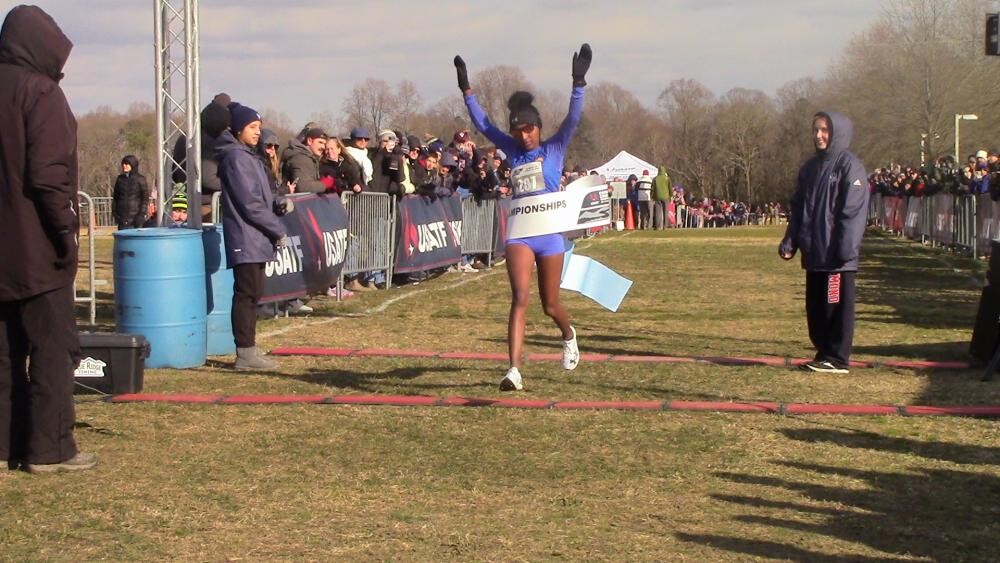
The top six finishers in each raced earned the right to represent Team USA at the World Cross Country Championships in Belgrade, Serbia, on March 30. Kelati’s coach/agent Stephen Haas told LetsRun last week that Kelati plans to run there while Teare’s agent Isaya Okwiya said Teare’s plans are still TBD.
High school junior Zariel Macchia of Shirley, N.Y., won the women’s U20 race in 20:31.0 for the 6k course; Macchia previously won the title as a freshman in 2022. Notre Dame freshman Kevin Sanchez won the men’s U20 title in 24:07.1 for the 8k course.
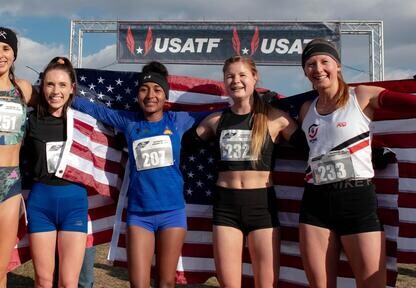
Cooper Teare shows his range with impressive victory
Teare was the 2021 NCAA 5,000m champion at the University of Oregon and has shown that his range extends both up and down the distance spectrum. Teare is the NCAA mile record holder at 3:50.39 and was the 2022 US champion at 1500 and now he is the US cross country champion. That sort of range has become increasingly common on the international level but in the US, it’s rare for a 1500 guy to run USA XC, let alone win it. Teare is the first man to win US titles at both 1500 meters and cross country since John Mason in 1968, and even that comes with a caveat as the US championships were separate from the Olympic Trials back then. Before Mason, the last guy to win both was Abel Kiviat (cross country in 1913, US mile title in 1914). You all remember him.
On the women’s side, Shelby Houlihan, since banned for a doping violation, won USA XC and the US 1500 title back in 2019.
Teare’s coach Ben Thomas told Carrie Tollefson, who was calling the race for USATF.TV, that the aim of this race was just to see where his fitness was at against a top field. Clearly, it’s very good. In his first race since leaving the Bowerman Track Club after the 2023 season, Teare, wearing a bright pink undershirt beneath his Nike singlet, ran with the lead pack until Morgan Pearson began to string things out just before entering the final 2k loop. As opposed to Pearson, who was giving it all he could to drop the field, Teare looked relaxed and in control, and at 9k he eased past Pearson into the lead before dropping the hammer to win comfortably. It was a smart run and an impressive display of fitness.
Teare may also have slayed some demons from his last cross country race in 2021, when he crawled across the finish line in the final meters. Now he’s gone from 247th at NCAA XC to a national champion.
Teare’s plans for the rest of the winter are up in the air. He will run in a stacked 2-mile at Millrose on February 11 against the likes of Grant Fisher and Josh Kerr before competing at USA Indoors a week later. World Indoors could be an option if he makes the team — as could World XC, if he wants it. No matter what he chooses, Saturday’s run was a great way for Teare to kick off the Olympic year.
Weini Kelati demolishes the competition
On paper, Kelati, who runs for Under Armour’s Dark Sky Distance team in Flagstaff, was the class of this field. The only question was whether she would be recovered from racing hard at last weekend’s Houston Half Marathon, where she set the American record of 66:25. The answer was a definitive “yes” as Kelati, after running with the leaders for the first 4k, dropped a 3:05 5th kilometer to break open the field. From there, her lead would only grow to the finish line as she won by a massive 37.3 seconds over runner-up Emma Hurley.
Kelati was not at her best heading into last year’s World XC in Australia as she had missed some time in the buildup due to injury. She still managed to finish a respectable 21st overall. Her aims will be much higher for this year’s edition in Belgrade.
Kelati also made some history with her win today. She’s the first woman to win Foot Locker, NCAA, and USA cross country titles.
by Jonathan Gault
Login to leave a comment
USATF Cross Country Championships
About USATF Based in Indianapolis, USA Track & Field (USATF) is the National Governing Body for track and field, long distance running, and race walking in the United States. USATF encompasses the world's oldest organized sports, the most-watched events of Olympic broadcasts, the number one high school and junior high school participatory sport, and more than 30 million adult runners...
more...Beatrice Chepkoech to open her indoor track season against two Ethiopian youngsters
Beatrice Chepkoech will be pitted against two Ethiopian youngsters in the women's 1500m at the ORLEN Copernicus Cup, a World Athletics Indoor Tour Gold meeting.
Ethiopian youngsters Diribe Welteji, and Freweyni Hailu will be up against Beatrice Chepkoech in the women’s 1500m field at the ORLEN Copernicus Cup, a World Athletics Indoor Tour Gold meeting, in Torun, Poland, on February 6.
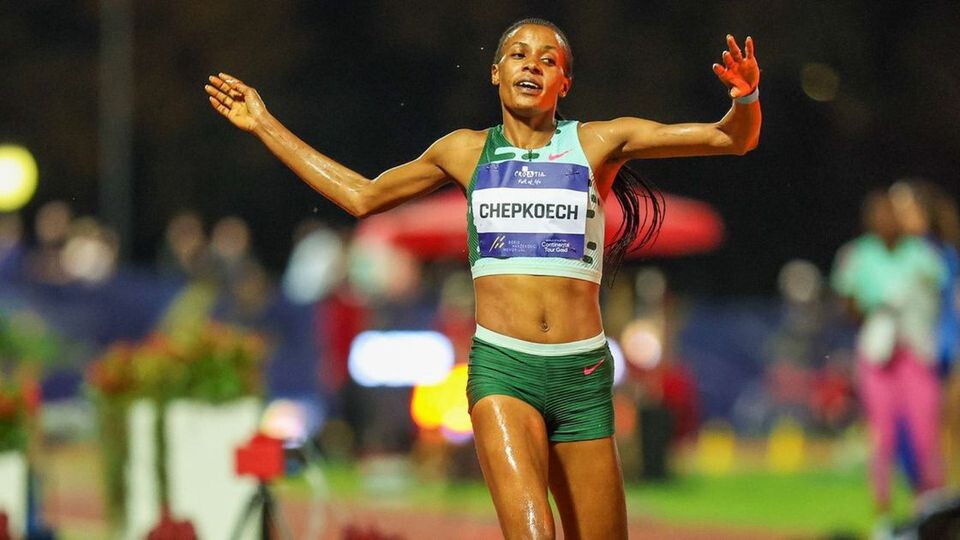
21-year-old Welteji set a world record when winning the mile at the World Athletics Road Running Championships in Riga in October, as she clocked 4:20.98 as her compatriot Hailu finished second with Faith Kipyegon completing the podium.
Welteji and Hailu will team up again in Torun where they will be up against the world 3000m steeplechase record-holder Chepkoech. Other strong opponents in the field include Ethiopia’s world indoor 1500m bronze medallist Hirut Meshesha and Uganda’s 2019 world 800m champion Halimah Nakaayi.
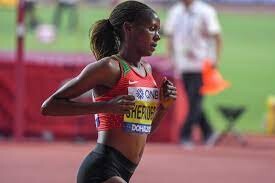
Welteji has proven to be a master in the 1500m and she also doubles up as the World 1500m silver medallist, having finished runner-up to Kipyegon in Budapest in August. She will surely be the one to watch when the race begins.
Meshesha has the quickest short track PB of the quintet, having clocked 4:02.01 in Lievin last year, finishing second and one place ahead of Hailu who set a PB of 4:02.47. Chepkoech ran her national record of 4:02.09 in 2020.
Meanwhile, multiple US record-holder Grant Fisher will take on the already announced world champion Josh Kerr in the two-mile race at the Millrose Games, also a World Athletics Indoor Tour Gold event.
The race on February 11 is set to be paced with the world indoor two-mile best of 8:03.40 as the target. Joining them on the start line will be USA’s Joe Klecker, Cooper Teare, and Dylan Jacobs. New Zealand’s George Beamish, Australia’s Morgan McDonald, and Ky Robinson will also be in the mix and will be joined by Britain’s Matthew Stonier, Japan’s Keita Satoh, Ethiopia’s Samuel Firewu and Addisu Yihune, and Sam Parsons of Germany.
by Abigael Wuafula
Beatrice Chepkoech
Login to leave a comment
Josh Kerr, Elle St. Pierre, and Nikki Hiltz to Headline Professional Athlete Field at New Balance 5th Avenue Mile
World champion Josh Kerr, U.S. Olympian Elle St. Pierre, and American mile record-holder Nikki Hiltz will headline a world-class professional athlete field that spans 14 different countries at the New Balance 5th Avenue Mile on Sunday, September 10. The New Balance 5th Avenue Mile – the world’s most iconic road mile race since 1981 – stretches 20 blocks down Manhattan’s most famous thoroughfare.
Great Britain’s Kerr will arrive in New York fresh off winning a world title in the 1,500 meters in Budapest; he is in search of his first victory on 5th Avenue in his second appearance in the event. Kerr also owns an Olympic bronze medal in the 1,500 meters from the Tokyo 2020 Games.
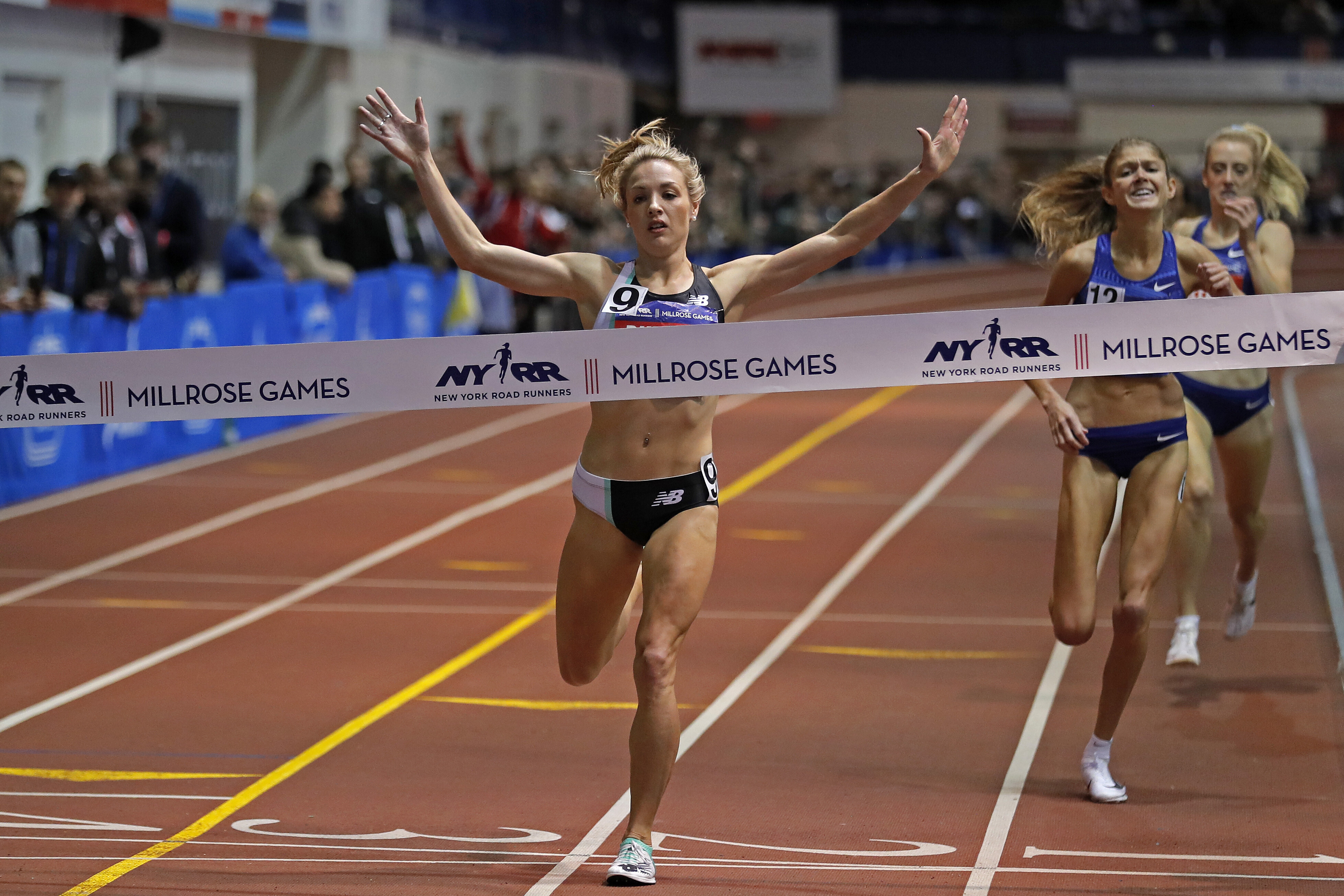
“Winning the World Championships was the culmination of every step of running I’ve ever taken,” Kerr said. “Now, my confidence is higher than it’s ever been, and I have some unfinished business to take care of on 5th Avenue.”
Lining up against Kerr will be New Zealand’s 5,000-meter record-holder George Beamish, and an American contingent led by 2023 Falmouth Mile champion Johnny Gregorek, last year’s 1,500-meter national champion Cooper Teare, two-time 5th Avenue Mile podium finisher Sam Prakel, and U.S. Olympian Woody Kincaid.

In the women’s race, U.S. Olympian St. Pierre will make her return to New York for the first time since finishing as runner-up at the event in 2019. It will also be her first race back since giving birth in March.
“My preparation for the New Balance 5th Avenue Mile this time has been different, as I fit training around feedings, nap time, and playing with Ivan,” St. Pierre said. “But my body feels good, and the workouts have been solid. I’m excited to be back on 5th Avenue this weekend.”
She will be joined at the start line by Hiltz, Great Britain’s 2021 New Balance 5th Avenue Mile champion Jemma Reekie, Great Britain’s reigning 1,500-meter champion Katie Snowden, Mexican record-holder Laura Galvan, Australian record-holder Jessica Hull, Japanese record-holder Nozomi Tanaka, and Jamaican record-holder Adelle Tracey. Olympian Courtney Frerichs and four-time NCAA champion Dani Jones will also toe the line for the U.S.
In addition to professional athlete and age-group heats, this year’s New Balance 5th Avenue Mile will feature Back to School Mile heats for youth, a New Balance Run Your Way Mile for first-time marathoners using NYRR Coaching Lab, a George Sheehan Memorial Mile for seniors, an NYPD and FDNY heat for service members, and NYRR Road Mile Championship races.
In partnership with NYRR and USA Track & Field, NBC will broadcast the event nationally from 12:00 to 1:00 p.m. ET. The broadcast will feature live coverage of the professional athlete races as well as a recap of the day’s earlier heats. Live coverage of the event will be available internationally on USATF.TV.
Login to leave a comment
New Balance 5th Avenue Mile
The New Balance 5th Avenue Mile opens a beautiful 20-block stretch of 5th Avenue to runners of all ages and abilities who want to run their best mile in New York City. Special races include a youth mile, the George Sheehan Memorial Mile for runners age 60 and over, the NYRR Road Mile Championships, and Olympic-caliber professional men's and women's...
more...Hobbs Kessler set the record for the fastest 1500-meter run by an American on U.S. soil as he finished third overall with a time of 3:32.61
Hobbs Kessler has already broken records left and right in his running career and the Ann Arbor native added to that growing list with an eye-popping performance at the Los Angeles Grand Prix on Saturday.
The 20-year-old phenom set the record for the fastest 1500-meter run by an American on U.S. soil as he finished third overall with a time of 3:32.61.
Kessler finished just behind former world champion Timothy Cheruiyot, who won the race at 3:31.47, and U20 world champion Reynold Kipkorir Cheruiyot, who took second in 3:32.01.
He ran a 55.83 in his final lap to past U.S. champion Cooper Teare, who also ran a personal best time of 3:32.74.
Kessler’s finish was the 13th fastest all-time for an American runner and his time is the second best by a U.S. male runner under the age of 21 as Cole Hocker ran 3:31.40 at the 2021 Olympics.
It was a personal best time for Kessler but yet another memorable performance by the former Ann Arbor Skyline standout.
He holds the North American U20 record in the 1500 at 3:34.36 as well as the U.S. high school record in the for the indoor mile with a time of 3:57.66 and was named the Gatorade National Track and Field Athlete of the Year for 2021.
Kessler signed a contract with Adidas and turned professional in 2021. He also won the Boston Athletic Association Invitational Mile in April.
Login to leave a comment
Alfred, Wilson and Lyles secure double success in Florida
Julien Alfred, Britton Wilson and Noah Lyles each started their seasons with winning doubles at the Tom Jones Memorial in Gainesville, Florida.
Commonwealth 100m silver medallist Alfred improved to a 21.91 (1.8m/s) Saint Lucian 200m record, while two-time world 200m champion Lyles ran 20.16 (-1.2m/s) on Friday (14). They also won their 100m races the following day, Alfred clocking a wind-assisted 10.72 (2.4m/s) and Lyles running 9.95 (1.6m/s) ahead of Joseph Fahnbulleh (9.98).
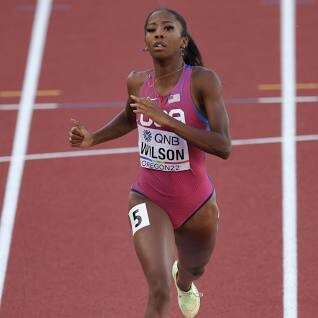

Alfred picked up from where she left off following an indoor season that included PBs of 6.94 for the 60m and 22.01 in the 200m set at the NCAA Indoor Championships for the best ever one-day indoor sprints double. That 6.94 places her joint second on the world indoor 60m all-time list.
After some relay performances to open her outdoor campaign, the 21-year-old improved her previous 200m PB of 22.46 set last May, taking it to 21.91 in her first individual race of the season.
Finishing second in that collegiate race was McKenzie Long in a PB of 22.31, while Alfred’s Texas teammate Rhasidat Adeleke improved her Irish record to 22.34 in third.
In another race, world finalist Melissa Jefferson ran 23.02 (1.8m/s) to win ahead of five-time Olympic gold medallist Elaine Thompson-Herah (23.23). Kiara Grant won the pro 100m race, clocking 10.99 (1.6m/s).
Also getting his outdoor season under way, Lyles ran 20.16 into a headwind (-1.2m/s) to dominate his 200m race. In one of the collegiate races, Alabama’s Tarsis Orogot ran a wind-assisted 19.60 (2.9m/s), while Terrence Jones went quickest in the collegiate 100m races, clocking 9.91 (1.0m/s) to match the Bahamian record.
Like Alfred, Wilson also threatened a world record at the NCAA Indoor Championships when she ran 49.48 to win the 400m. She achieved another fast time on Saturday (15), running a collegiate record of 49.51 to win her 400m race, the day after she claimed a 400m hurdles win in 53.23 when making her individual season debut. Anna Hall finished second in that hurdles race in 54.48 and Masai Russell was third in 55.39. Adeleke ran another Irish record to finish second behind Wilson in the 400m, clocking 49.90.
In the sprint hurdles, two-time world champion Grant Holloway won his 110m hurdles heat in 13.03 (1.1m/s) ahead of Rasheed Broadbell (13.12). Holloway then won the final in 13.05 (0.5m/s). After a wind-assisted 100m hurdles heat win of 12.55 (2.8m/s), 2019 world champion Nia Ali won the pro final in 12.53 (1.4m/s) ahead of world champion and world record-holder Tobi Amusan (12.59), who won her heat in 12.74 (1.1m/s). World indoor 60m hurdles silver medallist Devynne Charlton was third in the final in 12.64.
World indoor champion Jereem Richards got things off to a fast start as he won his first 400m race of the season in a PB of 44.68. Alonzo Russell also ran a PB of 44.73 for the runner-up spot.
Will Claye and Christian Taylor were separated by a single centimetre in the men's triple jump, respectively leaping 16.90m and 16.89m. Thea LaFond recorded 14.13m to win the women's contest.
At the Mt. SAC Relays in Walnut, California, on Saturday (15), Olympic and world silver medallist Rai Benjamin made his 400m hurdles season debut and clocked 47.74 for a dominant victory.
Cravont Charleston won the elite men’s 100m race in a wind-assisted 9.87 (3.0m/s) ahead of Kyree King (9.98) and world 400m champion Michael Norman (10.02).
Juliette Whittaker topped the 1500m in 4:12.49 on Friday and the following day won the 800m in 2:01.79 ahead of her Stanford teammate Roisin Willis in 2:01.97.
Talie Bonds improved her PB to 12.65 (1.2m/s) to win the 100m hurdles.
At the Bryan Clay Invitational in Azusa, California, Nikki Hiltz pipped Michaela Rose in a close 800m race, 1:59.03 to 1:59.08, as both athletes dipped under two minutes for the first time on Friday (14). Claire Seymour (2:00.04), Elise Cranny (2:00.25) and Valery Tobias (2:00.31) also went sub-2:01.
On Saturday (15), Cooper Teare opened his season with a near 1500m PB of 3:34.96 ahead of Fouad Messaoudi (3:35.16).
Australian 15-year-old Gout Gout made a statement on the third day of the Australian Junior Athletics Championships in Brisbane on Saturday (15), clocking 20.87 (-0.1m/s) to win the 200m by almost half a second.
“It means a lot because I’ve been training so much for this. I was really nervous. The gun went, and I was good and I just kept pushing," he told Athletics Australia.
by World Athletics
Login to leave a comment
Giants of track and field prepare for battle at Millrose Games
print showdowns, the world’s greatest shot putters and magnificent mile fields highlight the Millrose Games, this season’s fourth World Athletics Indoor Tour Gold meeting, in New York on Saturday (11).
Fresh off a PB and 60m win in Boston, world 200m champion Noah Lyles takes on 60m world record holder and defending Millrose champion Christian Coleman at The Armory, which boasts the nickname ‘The Fastest Track in the World’.
Shot putters Ryan Crouser and Joe Kovacs open their 2023 campaigns by resuming their fierce rivalry, essentially picking up where they left off last September in Switzerland. As the women’s shot returns to Millrose for the first time since 2003, the event couldn’t ask for a better field led by Chase Ealey, the world champion and world indoor silver medallist.
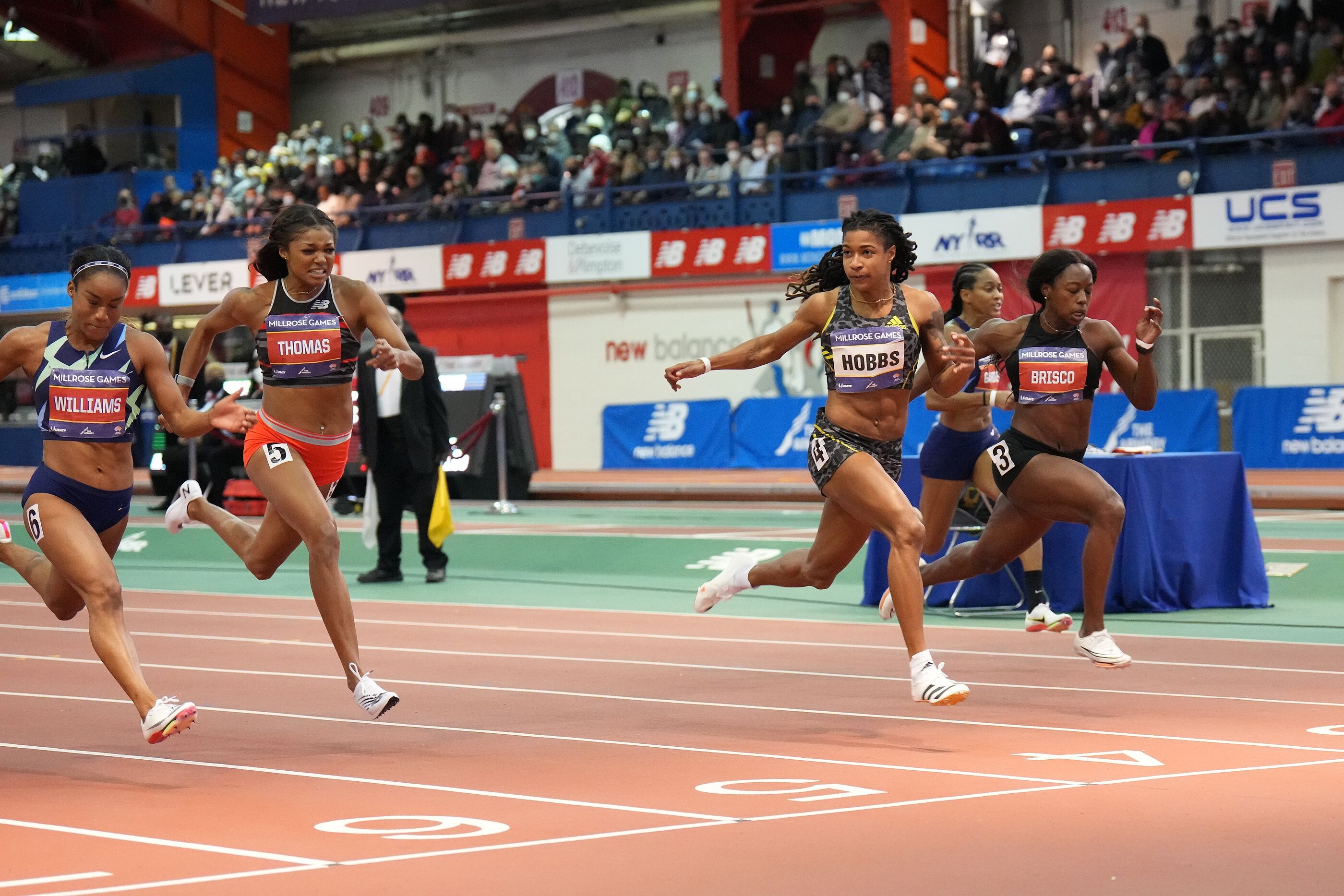
According to tradition, the Rudin Wanamaker Miles cap the storied meeting, which was founded in 1908. A national record might be needed to win the men’s race, but which country will take the honours? Defending champion Ollie Hoare of Australia, USA’s Yared Nuguse, Sam Tanner of New Zealand and Mario Garcia Romo of Spain are top contenders. Great Britain’s Olympic and world medallist Laura Muir is the favourite in the women’s mile, having already claimed a New York record on the road.
Straight down the middle
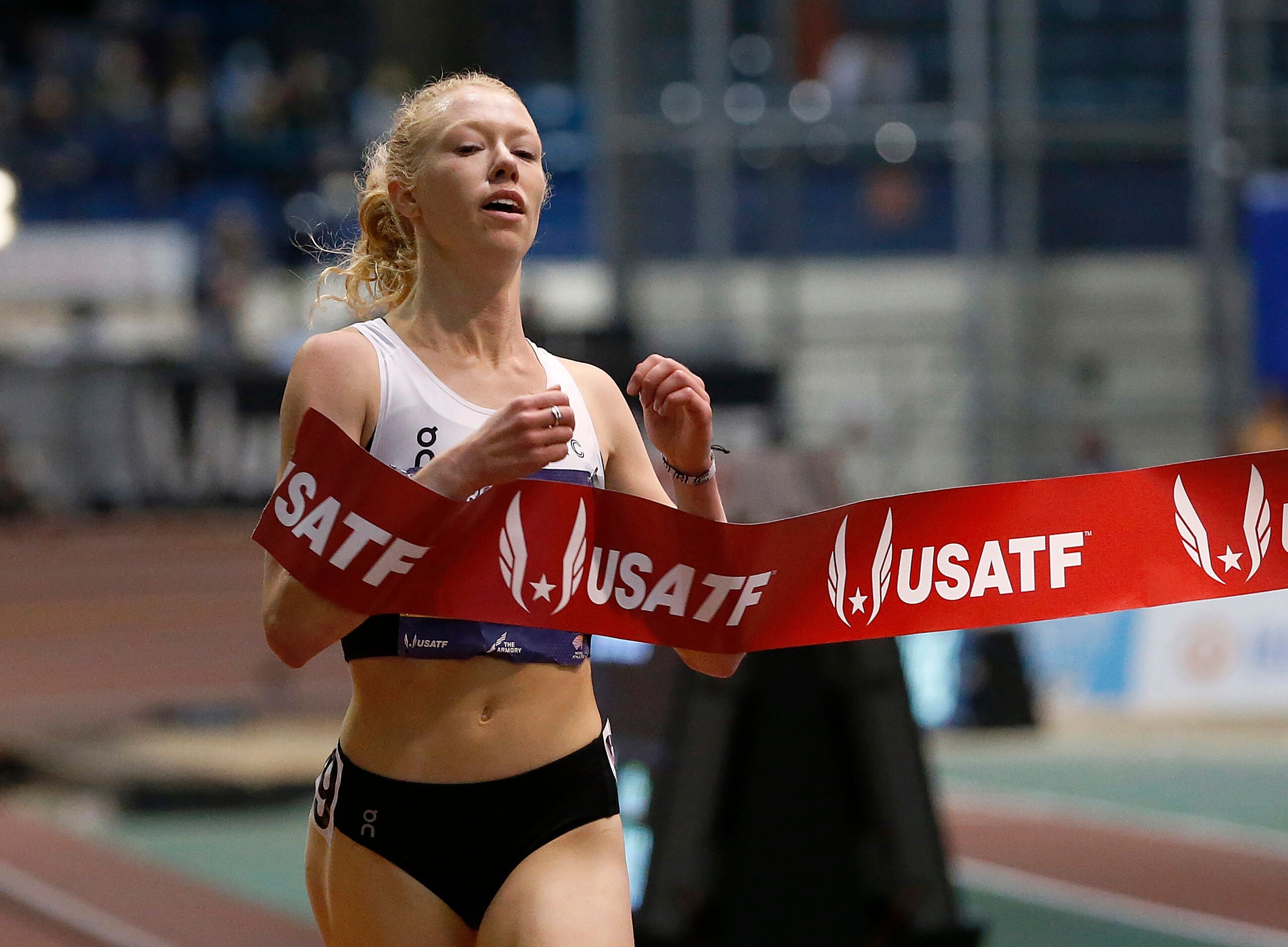
Although The Armory is far from the neon lights of Times Square, it’s still a hop, step and a jump from Broadway – and perhaps no athlete enjoys putting on a show more than Lyles.
At the New Balance Indoor Grand Prix Boston, he posted a PB of 6.51, edging Trayvon Bromell by .002. Coleman clocked 6.71 in Fayetteville two weeks ago to open his season, well off his world record of 6.34 set in 2018 when he was also world indoor champion. Lyles, the Olympic 200m bronze medallist, has been working on his start in a bid to double in the 100m and 200m at the World Athletics Championships later this year in Budapest.
Lyles will also attempt to avenge an early season loss to his younger brother Josephus in Florida. Ronnie Baker, the third-fastest 60m runner in history and 2018 world indoor bronze medallist, won this event in 2018 and 2020. Ackeem Blake of Jamaica, Miles Lewis, the Puerto Rican record-holder, and Kendal Williams, who defeated Lyles in Florida but lost to him in Boston, are also in the field.
Aleia Hobbs is seeking her second straight win in the women’s 60m after exploding to a meeting record 7.02 in Boston. She also owns the world-leading time of 6.98, run in Fayetteville in late January. In Boston, Hobbs held off world indoor silver medallist Mikiah Brisco and Celera Barnes, who get another chance to defeat her at Millrose.
Melissa Jefferson, who edged Hobbs in the 100m at last year’s USA Championships; world indoor bronze medallist Marybeth Sant-Price, and English Gardner are also in the field. Shawnti Jackson was third at Millrose last year, setting a national high school record of 7.18, and will look to improve both her placement and her time.
Olympic silver medallist Keni Harrison, the Millrose 60m hurdles winner in 2020, will take on 2019 world champion Nia Ali, heptathlete Anna Hall, and Olympians Anna Cockrell, Devynne Charlton and Cindy Sember.
Ring rivalry renewed
The road to Budapest begins for the top shot putters on the planet. World and Olympic champion Crouser will face Kovacs, a double outdoor world champion and two-time Olympic silver medallist.
While Crouser has won at Millrose three years in a row and holds both the indoor and outdoor world records, he knows his compatriot is always in the hunt to topple him. Kovacs set the world-leading mark in 2022 while moving to second on the all-time list and winning the Diamond league final in Zurich. At the season-ending meeting for both, Kovacs won at Bellinzona with a toss of 22.19m, with Crouser next at 22.00m. Tripp Piperi and Nick Ponzio of Italy round out the field.
Ealey had a dream season in 2022, building on her world indoor silver to take the world title in Oregon and then capture the Diamond League title. Compatriots Maggie Ewen, the 2021 Diamond League champion, and Jessica Woodard will challenge Ealey for the first Millrose crown in 20 years, along with Canada’s Commonwealth champion Sarah Mitton.
The women’s pole vault features Katie Moon (formerly Nageotte) and Katerina Stefanidi, the last two Olympic gold medallists. However, in their previous meeting, the Greek vaulter was third and the Tokyo champion placed fourth in Boston, with Bridget Williams and Gabriela Leon going 1-2. All four athletes will be on the runway at Millrose.
Steiner seeks another record
The rarely run 300m has become something of a specialty for USA’s Abby Steiner. She already holds the NCAA record and is targeting the national record of 35.71 in her first indoor season as a professional. Two weekends ago, Steiner raced to a 400m victory in Fayetteville in 50.59. The world record of 35.45 is shared by Irina Privalova and Shaunae Miller-Uibo, with the Bahamian clocking her winning time in 2018 at Millrose. Jenna Prandini, Steiner’s teammate on the victorious 4x100m relay in Oregon, and 2019 world 200m silver medallist Brittany Brown offer strong competition.
The men’s 400m could be another duel between USA’s Noah Williams and Trinidad & Tobago’s world indoor champion Jereem Richards. In Boston, both clocked 45.88, but Williams surged on the inside to win by .004. Michael Cherry, fourth in the 400m in Tokyo and an Olympic and world gold medallist at 4x400m, opens his season at Millrose, along with the fourth man in the field, Bryce Deadmon, another Olympic and world gold medallist on relays.
Going the distance
The great Paavo Nurmi raced at the Millrose Games nearly 100 years ago and the distance races never disappoint. Of course, the signature event is the Rudin Wanamaker Mile.
After recently setting a North American indoor record over 3000m, Yared Nuguse is in a New York state of mind to break another continental record: Bernard Lagat’s 3:49.89 in the indoor mile. Nuguse and training partners Hoare and Romo are hoping for a fast pace to propel them into the record books. Hoare set an Oceanian record of 3:50.83 in winning the 2022 Wanamaker Mile and is the Commonwealth 1500m champion. Other contenders include Tanner, a three-time New Zealand champion; Great Britain’s Neil Gourley, whose home straight sprint led to a world-leading 3:52.84 in Boston; 2022 US indoor 1500m champion Cole Hocker, Johnny Gregorek, Sam Prakel and Kenya’s Eliud Kipsang.
Muir had a US indoor race debut in Boston, clocking 8:40.34 in the 3000m, and now is dropping back down to more familiar territory. The world and Olympic medallist in the 1500m set a course record of 4:14.8 on the road in the Fifth Avenue Mile in 2022. At Millrose, the record is 4:16.85, set by Elle Purrier St Pierre in 2020, which is the third-fastest indoor mile in history after Gudaf Tsegay’s 4:16.16 in Torun. In a deep field, Muir will be challenged by training partner and Olympic 800m finalist Jemma Reekie, and US champion Sinclaire Johnson.
In the men’s 3000m, Geordie Beamish and Cooper Teare, who went 1-2 last year, return to the Armory track where they will try to fend off Josh Kerr, the Olympic 1500m bronze medallist; Joe Klecker, Guatemala’s Luis Grijalva and Nico Young.
Alicia Monson, defending Millrose champion in the women’s 3000m, faces national indoor 5000m record-holder Elise Cranny with Karissa Schweizer’s national indoor 3000m record of 8:25.70 in their sights. Monson set a Millrose Games and Armory record last year of 8:31.62 en route to a stellar outdoor season. Katelyn Tuohy recently set an NCAA mile record of 4:24.26 in a race won by Monson; she’s primed for another test against the pros. European champion and 2019 world bronze medallist Konstanze Klosterhalfen won the Wanamaker mile in 2019 and has the fastest 3000m time in the field, clocking 8:20.07 outdoors.
Streaks at stake for Wilson
In the 600m, world indoor 800m champion Ajee’ Wilson will attempt to extend some impressive winning streaks.
Since losing to Alysia Montano in the 600m at the 2013 Millrose Games, she has won 17 straight races at The Armory, including seven at Millrose. She also has won 15 straight races indoors, most recently the 800m in Boston with a time of 2:00.45. Wilson is the second-fastest woman in history in the 600m outdoors and could threaten Keely Hodgkinson’s newly minted world indoor best of 1:23.41. The fastest performer in the field this season Shamier Little, the 2015 world silver medallist in the 400m hurdles, who clocked 1:24.65.
The men’s 800m will be a rematch between world indoor silver medallist Noah Kibet, still just 18 years of age, and world indoor bronze medallist Bryce Hoppel, the defending Millrose champion. The loaded field includes his compatriots Clayton Murphy, the 2016 Olympic bronze medallist, world indoor finalist Isaiah Harris, Great Britain’s Kyle Langford, Mexico’s Tonatiu Lopez and Irish record-holder Mark English. Cade Flatt, the second-fastest US high school runner at this distance, is also in the field.
by World Athletics
Login to leave a comment
NYRR Millrose Games
The Pinnacle of Indoor Track & Field The NYRR Millrose Games, first held in 1908, remains the premier indoor track and field competition in the United States. The 2025 edition will once again bring the world’s top professional, collegiate, and high school athletes to New York City for a day of thrilling competition. Hosted at the New Balance Track &...
more...Christian Coleman, Noah Lyles and Ronnie Baker to Clash in Epic 60m at 2023 Millrose Games
The 115th Millrose Games, the world’s most historic indoor track & field event is only six weeks away. The Men’s 60m will surely be one of the most anticipated races of the entire meet, as Christian Coleman, Noah Lyles, and Ronnie Baker, three of the best sprinters in the world, will be taking their talents to the infield straightaway at the iconic New Balance Track & Field Center at The Armory.
The 115th Millrose Games is scheduled for Saturday, February 11th.
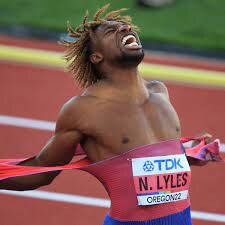
Coleman is the defending Millrose Games champion, World Record holder, and 2018 World Indoor Champion in the 60m. His lightning-quick starting ability makes him nearly unstoppable over this short distance, and he set the current world record of 6.34 seconds in 2018. Outdoors, he has two World Championship gold medals and three silver medals in the 100m and 4x100m relay.
Lyles is the reigning back-to-back World Champion, American Record holder, and the third-fastest man ever in the 200m. He also claimed the Olympic bronze medal in Tokyo. Lyles, the 2022 USATF Male Athlete of the Year, has been open about his pursuit of the world records held by Usain Bolt, and by dropping down in distance to challenge the short-sprint specialists, he hopes to continue improving his start and putting the pieces together for another year of dominance.
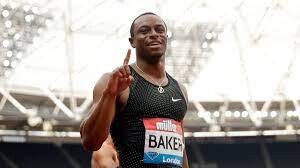
Baker is the third-fastest 60m runner in history, and one of the most consistent sprinters competing on the circuit. He is an Olympic finalist, World Indoor bronze medalist, and two-time NCAA champion. Baker is no stranger to the Millrose Games stage, winning the 60m in both 2018 and 2020.
Other athletes in the field include:
–Josephus Lyles, Noah’s younger brother. Lyles is a former World Junior Champion, and he placed fifth in the 200m final at this year’s USATF Outdoor Championships.
–Ackeem Blake of Jamaica, NACAC 100m Champion, and semifinalist at the World Championships.
–Miles Lewis, the 60m national record holder for Puerto Rico.
As always, the Millrose Games will feature the absolute best athletes in the sport, including dozens of Olympians and world champions. Some of the big names already announced include Alicia Monson, Konstanze Klosterhalfen, Abby Steiner, Jenna Prandini, Geordie Beamish, Cooper Teare, Josh Kerr, Katie Nageotte, Sandi Morris, Katerina Stefanidi, Ryan Crouser, and Joe Kovacs, with many more still to come.
The Millrose Games is a World Athletics Indoor Tour Gold meet. With the highest-level competition at the youth, high school, collegiate, club, and professional levels, there is truly something for everyone at the Millrose Games.
by Letsrun
Login to leave a comment
NYRR Millrose Games
The Pinnacle of Indoor Track & Field The NYRR Millrose Games, first held in 1908, remains the premier indoor track and field competition in the United States. The 2025 edition will once again bring the world’s top professional, collegiate, and high school athletes to New York City for a day of thrilling competition. Hosted at the New Balance Track &...
more...Alicia Monson and Konstanze Klosterhalfen headline Millrose Games 3000m
Alicia Monson will defend her 3000m title against a field including Konstanze Klosterhalfen when she returns to the Millrose Games, a World Athletics Indoor Tour Gold meeting, in New York on February 11.
Monson ran away from the field in 2022, setting a meeting record of 8:31.62. That performance would prove to be a springboard to more success for the 24-year-old, who went on to have the best season of her career outdoors, running personal bests at 3000m, 5000m and 10,000m, competing at the World Athletics Championships Oregon22 and placing in the top five at three Diamond League meetings.
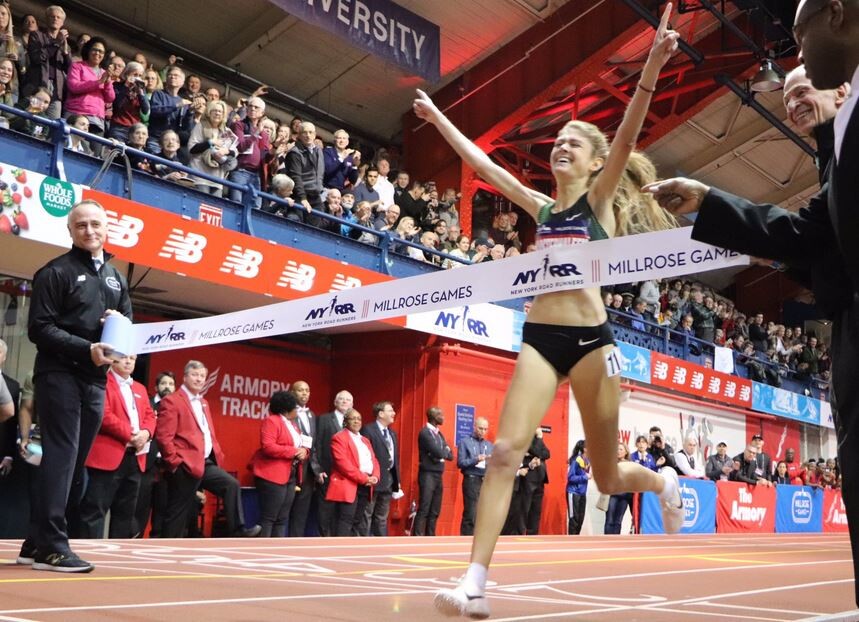
"I’m looking forward to coming back to defend the 3000m this year," said Monson. "The atmosphere in The Armory makes for an awesome start to the track season."
Her main challenger may be Klosterhalfen, this year's European 5000m champion and the 2019 world bronze medalist. Klosterhalfen holds eight national records for Germany and won the 2019 Wanamaker Mile at the Millrose Games.
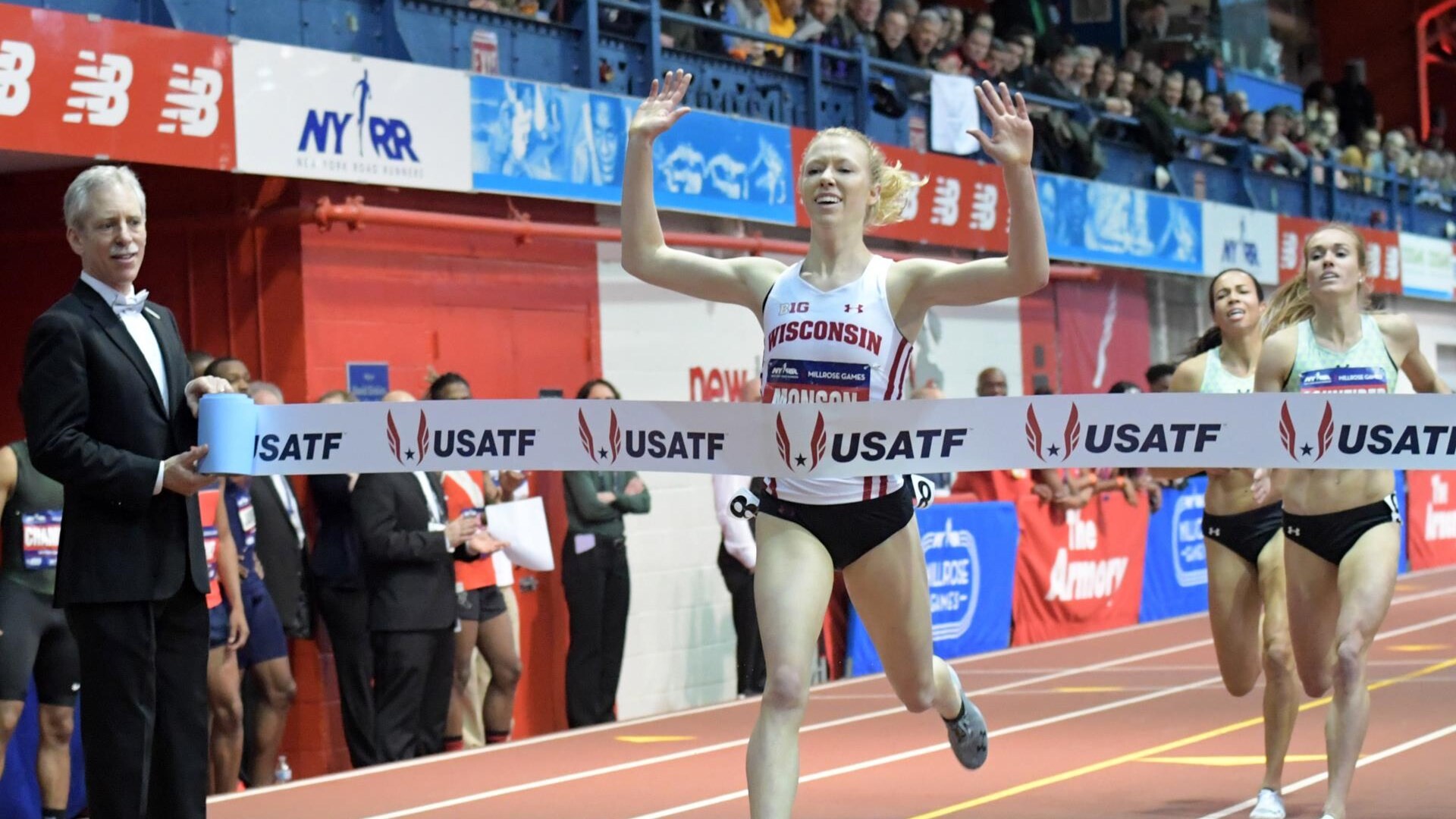
Other athletes to watch include Katelyn Tuohy, Elly Henes, Courtney Wayment, Whittni Orton Morgan and Fantaye Belayneh, Ethiopian champion and African Championships silver medalist in the 5000m.
These are the latest stars announced for the Millrose Games, joining the showdowns in the pole vault between Katie Nageotte, Sandi Morris, and Katerina Stefanidi, and in the shot put, featuring Ryan Crouser and Joe Kovacs. The men’s 3000m, meanwhile, will star Geordie Beamish, Cooper Teare and Josh Kerr, while the women's 300m will feature Abby Steiner, Jenna Prandini and Brittany Brown.
by World Athletics
Login to leave a comment
NYRR Millrose Games
The Pinnacle of Indoor Track & Field The NYRR Millrose Games, first held in 1908, remains the premier indoor track and field competition in the United States. The 2025 edition will once again bring the world’s top professional, collegiate, and high school athletes to New York City for a day of thrilling competition. Hosted at the New Balance Track &...
more...Steiner, Prandini and Brown to race Millrose Games 300m
Global medalists Abby Steiner, Jenna Prandini and Brittany Brown are set to clash in the 300m when the 115th Millrose Games, a World Athletics Indoor Tour Gold meeting, takes place in New York on February 11.
Steiner, the NCAA indoor 300m record-holder, had a breakthrough campaign in 2022. The 23-year-old completed her collegiate career at the University of Kentucky with four NCAA titles, setting a US indoor record and outdoor NCAA record in the 200m. She then lowered her PB to win the US 200m title, qualifying for the World Athletics Championships Oregon22, where she finished fifth and also formed part of USA’s victorious 4x100m and 4x400m teams.
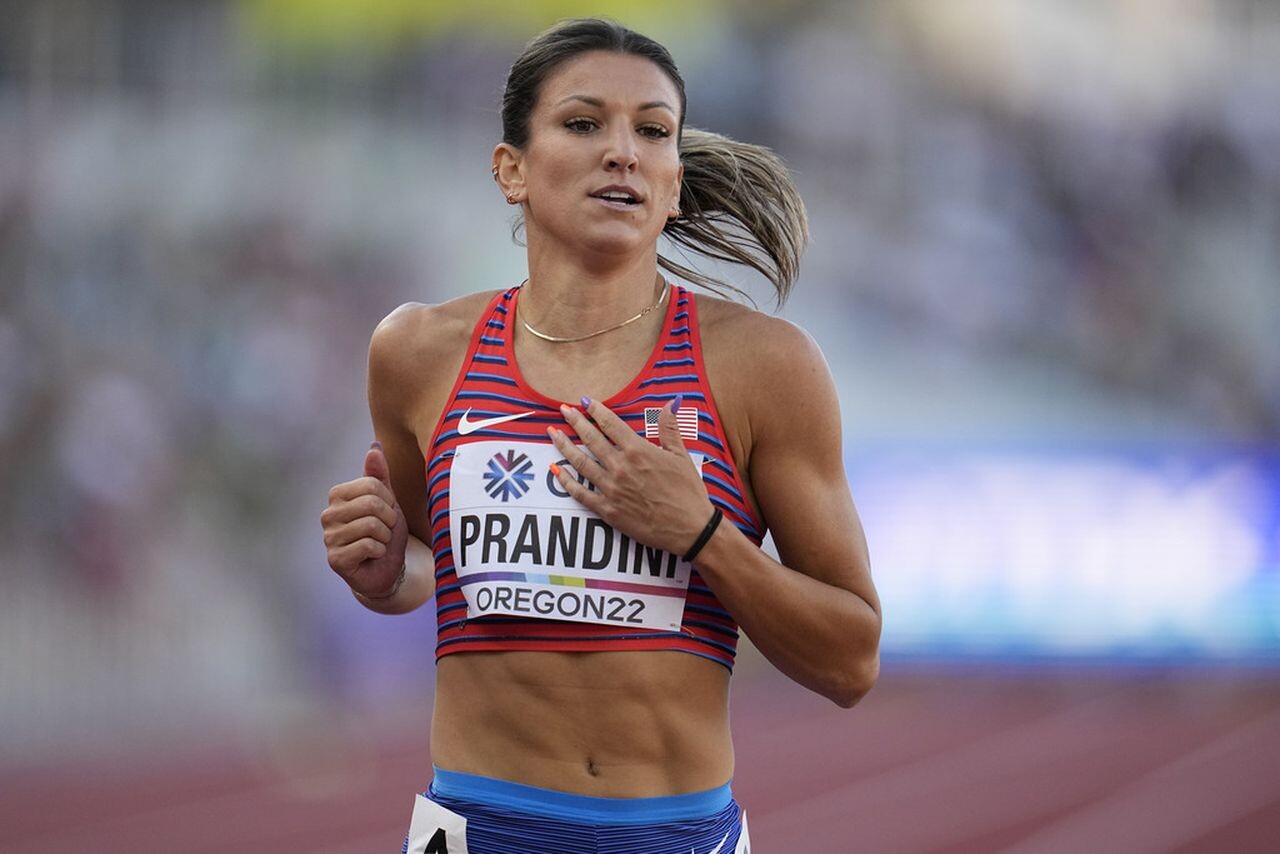
“I am beyond excited to be running at this historic meet for the first time in my professional career,” said Steiner. “I’m looking forward to the atmosphere, fans, and great competition that Millrose always provides!”
Steiner ran her NCAA indoor 300m record of 35.80 in December 2021. The US best of 35.71 is held by Quanera Hayes, while the world best of 35.45 was equalled at the Millrose Games in 2018 by Shaunae Miller-Uibo. Both of these marks could come under threat in New York in February.
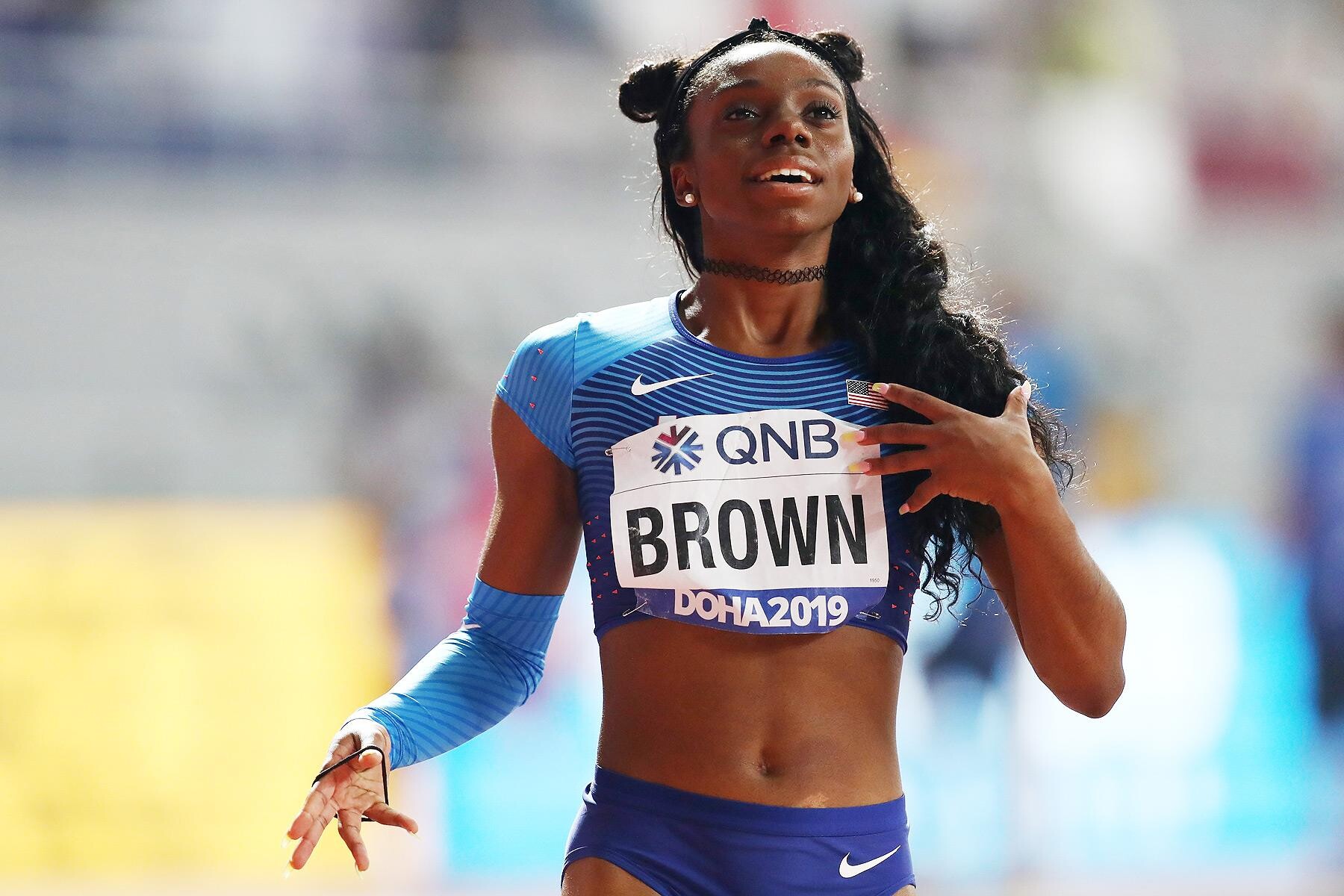
Among those challenging Steiner in this Millrose Games signature event will be her fellow world 4x100m gold medallist Prandini and 2019 world 200m silver medallist Brown.
Prandini is a three-time NCAA gold medallist for the University of Oregon, as well as a two-time US 200m champion. As well as winning world 4x100m gold in Oregon, she also claimed Olympic 4x100m silver in Tokyo.
Brown claimed her world 200m medal in Doha in 2019 and more recently won the 200m title at the NACAC Championships in The Bahamas.
Also in the women’s 300m field at the Millrose Games will be Cynthia Bolingo, Belgium’s 2019 European indoor 400m silver medallist.
These are the latest stars announced for the Millrose Games, joining the showdowns in the pole vault between Katie Nageotte, Sandi Morris, and Katerina Stefanidi, and in the shot put, featuring Ryan Crouser and Joe Kovacs. The men’s 3000m, meanwhile, will star Geordie Beamish, Cooper Teare and Josh Kerr.
by World Athletics
Login to leave a comment
NYRR Millrose Games
The Pinnacle of Indoor Track & Field The NYRR Millrose Games, first held in 1908, remains the premier indoor track and field competition in the United States. The 2025 edition will once again bring the world’s top professional, collegiate, and high school athletes to New York City for a day of thrilling competition. Hosted at the New Balance Track &...
more...Beamish, Teare, and Kerr will highlight Millrose Games 3000m
The Millrose Games will welcome a stacked 3000m field to the World Athletics Indoor Tour Gold meeting in New York on February 11.
New Zealand’s Geordie Beamish, who holds the national indoor records for 3000m and 5000m, won last year’s race in thrilling fashion, going from fifth to first on the final lap with a furious kick to win in 7:39.50.

US 1500m champion Cooper Teare finished second in that race, and he will also return to the Millrose stage with revenge on his mind. “I’m beyond excited to be returning to the Millrose Games to experience the electric crowds and fast times,” said Teare.
While the rematch of last year’s tight finish is enticing enough, there are numerous other athletes who are more than capable of winning this race.
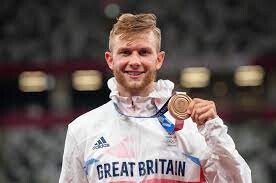
Olympic 1500m bronze medalist Josh Kerr finished second in the mile at the Millrose Games last year, then went on to set a European indoor record of 3:48.87 at that distance.
Guatemala’s Luis Grijalva was fourth over 3000m at last year’s Millrose Games, and he repeated that position over 5000m at the World Championships in Oregon.
Joe Klecker, Morgan McDonald, Olin Hacker and Dylan Jacobs – all past winners of NCAA titles – are also in the field, as is Nico Young, who recently finished second at this year’s NCAA Cross Country Championships.
These are the latest stars announced for the Millrose Games, joining the showdowns in the pole vault between Katie Nageotte, Sandi Morris, and Katerina Stefanidi, and in the shot put, featuring Ryan Crouser and Joe Kovacs.
by World Athletics
Login to leave a comment
NYRR Millrose Games
The Pinnacle of Indoor Track & Field The NYRR Millrose Games, first held in 1908, remains the premier indoor track and field competition in the United States. The 2025 edition will once again bring the world’s top professional, collegiate, and high school athletes to New York City for a day of thrilling competition. Hosted at the New Balance Track &...
more...USA names 151-strong team for World Championships in Oregon
A team of 151 athletes will represent the USA on home soil at the World Athletics Championships Oregon22 on July 15-24.
Multiple global champions and world record-holders feature in the squad as Eugene’s Hayward Field gets ready to welcome the world for the first-ever outdoor World Athletics Championships to be hosted in the USA.
World record-holder and Olympic champion Sydney McLaughlin will take on the former world record-holder and reigning world champion Dalilah Muhammad as they look to further cement the US women’s global dominance in the 400m hurdles final on July 22.
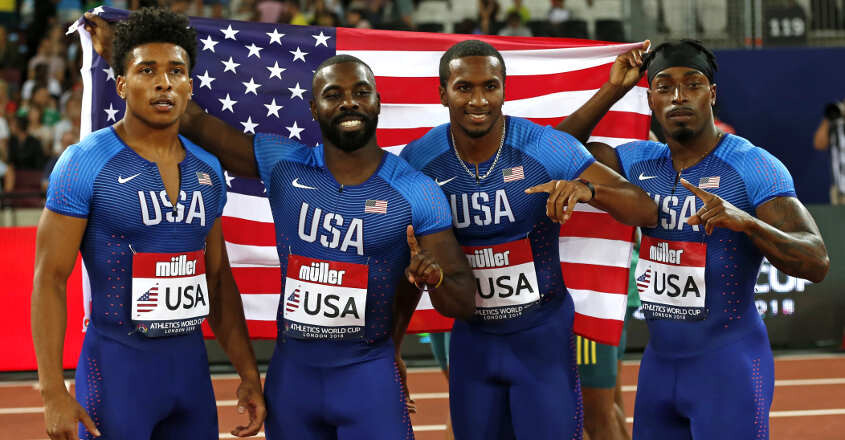
In the men’s shot put on July 17, world record-holder and Olympic champion Ryan Crouser will go after the one title that has so far eluded him – that of world champion – and will take on two-time world champion Joe Kovacs.
Such is the strength of the women’s 800m squad of Athing Mu, Ajee Wilson and Raevyn Rogers, as well as the men’s 200m team of Noah Lyles, Erriyon Knighton, Fred Kerley and Kenny Bednarek, that athletes will be aiming for USA medal sweeps.
Returning to defend the titles they won in Doha in 2019 are Nia Ali (women's 100m hurdles), Donavan Brazier (men's 800m), Christian Coleman (men's 100m), Grant Holloway (men's 110m hurdles), Kovacs (men's shot put), Lyles (men's 200m), Muhammad (women's 400m hurdles), DeAnna Price (women's hammer) and Christian Taylor (men's triple jump).
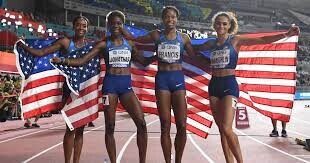
Making her 10th World Championships appearance will be Allyson Felix, who has 18 world medals, including 13 golds, to her name and will be in the mixed 4x400m pool.
“I couldn’t be prouder to lead this amazing team for this once-in-a-lifetime event,” said USATF CEO Max Siegel. “We have been given the unique opportunity to impact the track and field landscape in the US, and we’ve put our best team forward.”
USA team for Oregon
Women
100m: Aleia Hobbs, Melissa Jefferson, Twanisha Terry
200m: Tamara Clark, Jenna Prandini, Abby Steiner
400m: Talitha Diggs, Kendall Ellis, Lynna Irby
800m: Athing Mu, Raevyn Rogers, Ajee Wilson
1500m: Sinclaire Johnson, Cory McGee, Elle St. Pierre
5000m: Elise Cranny, Emily Infeld, Karissa Schweizer
10,000m: Alicia Monson, Natosha Rogers, Karissa Schweizer
Marathon: Emma Bates, Keira D’Amato, Sara Hall
3000m steeplechase: Emma Coburn, Courtney Frerichs, Courtney Wayment
100m hurdles: Nia Ali, Alia Armstrong, Keni Harrison, Alaysha Johnson
400m hurdles: Shamier Little, Sydney McLaughlin, Dalilah Muhammad, Britton Wilson
Heptathlon: Michelle Atherley, Anna Hall, Kendell Williams, Ashtin Zamzow-Mahler
High jump: Vashti Cunningham, Rachel Glenn, Rachel McCoy
Pole vault: Gabriela Leon, Sandi Morris, Katie Nageotte
Long jump: Quanesha Burks, Tiffany Flynn, Jasmine Moore
Triple jump: Tori Franklin, Jasmine Moore, Keturah Orji
Shot put: Adelaide Aquilla, Chase Ealey, Maggie Ewen, Jessica Woodard
Discus: Valarie Allman, Rachel Dincoff, Veronica Fraley, Laulauga Tausaga-Collins
Hammer: Brooke Andersen, Annette Echikunwoke, Janee Kassanavoid, DeAnna Price
Javelin: Ariana Ince, Maggie Malone, Kara Winger
20km race walk: Robyn Stevens, Miranda Melville
35km race walk: Stephanie Casey, Miranda Melville, Maria Michta-Coffey
4x100m: Celera Barnes, Tamari Davis, Gabby Thomas (plus athletes named in individual sprints)
4x400m: Wadeline Jonathas, Jaide Stepter, Kaylin Whitney (plus athletes named in individual sprints)
Men
100m: Marvin Bracy, Trayvon Bromell, Christian Coleman, Fred Kerley
200m: Kenny Bednarek, Fred Kerley, Erriyon Knighton, Noah Lyles
400m: Champion Allison, Michael Cherry, Michael Norman, Randolph Ross
800m: Donavan Brazier, Bryce Hoppel, Jonah Koech, Brandon Miller
1500m: Johnny Gregorek, Cooper Teare, Josh Thompson
5000m: Grant Fisher, Woody Kincaid, Abdihamid Nur
10,000m: Grant Fisher, Joe Klecker, Sean McGorty
Marathon: Elkanah Kibet, Colin Mickow, Galen Rupp
3000m steeplechase: Hillary Bor, Evan Jager, Benard Keter
110m hurdles: Devon Allen, Trey Cunningham, Grant Holloway, Daniel Roberts
400m hurdles: Trevor Bassitt, Rai Benjamin, Khallifah Rosser
Decathlon: Steven Bastien, Kyle Garland, Zach ZiemekHigh jump: Darius Carbin, JuVaughn Harrison, Shelby McEwen
Pole vault: Andrew Irwin, Chris Nilsen, Luke WinderLong jump: Marquis Dendy, Steffin McCarter, Will Williams
Triple jump: Chris Benard, Will Claye, Donald Scott, Christian Taylor
Shot put: Josh Awotunde, Ryan Crouser, Joe Kovacs, Tripp Piperi Discus: Andrew Evans, Sam Mattis, Brian Williams
Hammer: Daniel Haugh, Rudy Winkler, Alex Young
Javelin: Ethan Dabbs, Tim Glover, Curtis Thompson
20km race walk: Nick Christie, Dan Nehnevaj
35km race walk: Nick Christie
4x100m: Kyree King, Josephus Lyles, Elijah Hall-Thompson (plus athletes named in individual sprints)
4x400m: Bryce Deadmon, Vernon Norwood, Elija Godwin (plus athletes named in individual sprints)
Mixed
4x400m: Allyson Felix, Kennedy Simon, Ismail Turner, Noah Williams (plus athletes named in individual sprints).
by World Athletics
Login to leave a comment
World Athletics Championships Budapest23
Budapest is a true capital of sports, which is one of the reasons why the World Athletics Championships Budapest 2023 is in the right place here. Here are some of the most important world athletics events and venues where we have witnessed moments of sporting history. Throughout the 125-year history of Hungarian athletics, the country and Budapest have hosted numerous...
more...It Shouldn’t Be This Hard to Be a Running Fan
Despite incredible performances at the USATF Outdoor Championships, the meet’s presentation failed to make the sport accessible for a wider audience.
The USATF Outdoor Championships were last weekend. But unless you made the trek to Eugene, Oregon, or you knew exactly where to watch at exactly the right time, you might have missed some (or all) of the action.
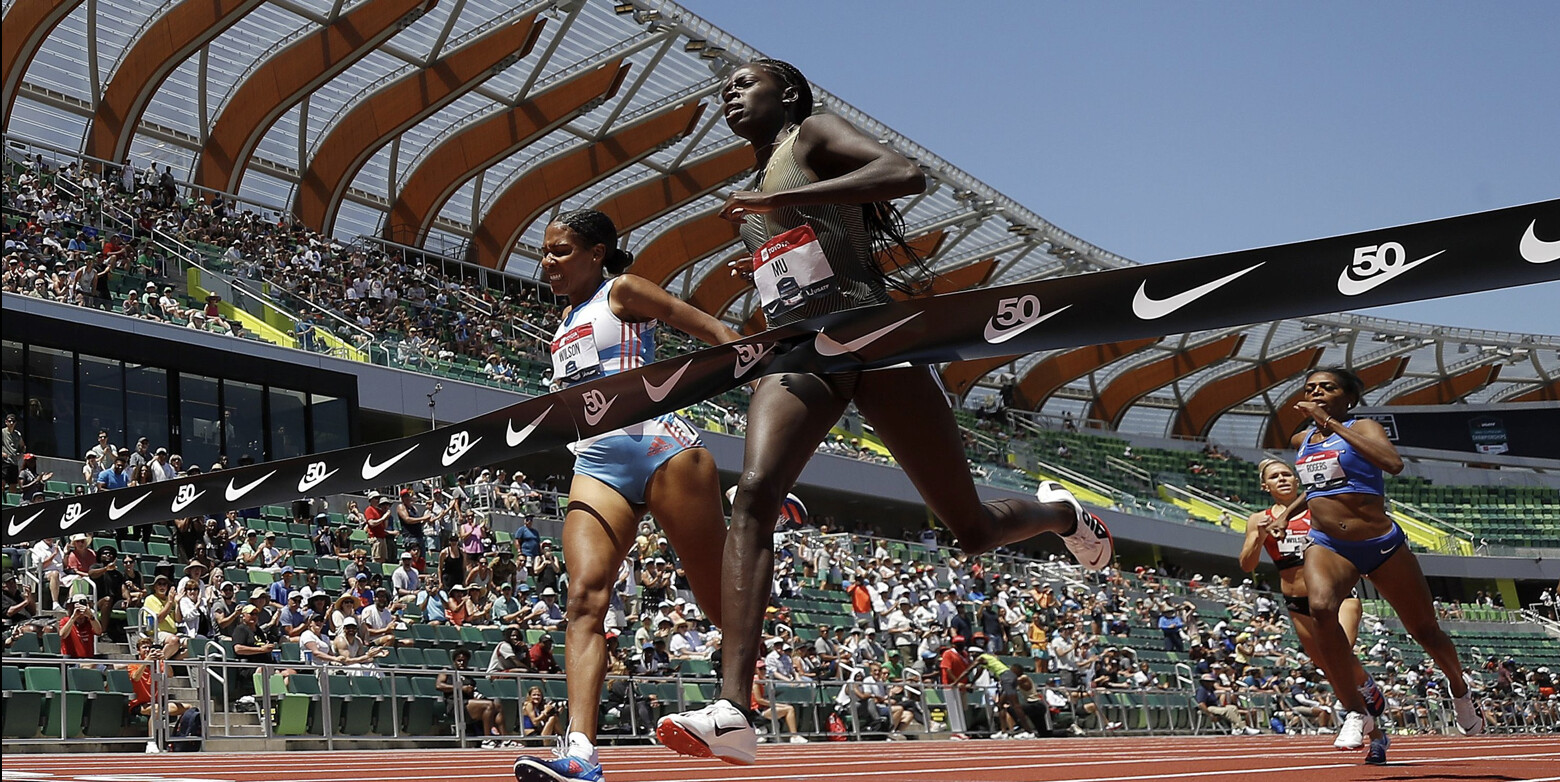
Even if you managed to watch the meet, you might have been left wondering who actually qualified to represent Team USA at the World Athletics Championships from July 15–24. Why will sprinter Christian Coleman run worlds after skipping out on the 100-meter final, despite running the rounds? But Jonathan Davis, who finished second in the men’s 1500 meters, did not qualify? There are answers to these questions, but such answers require prior knowledge of an elaborate qualification system that’s bound to confuse the casual viewer.
Those unclear qualification parameters, along with schedule changes, expensive travel and lodging, and an inconvenient number of streaming services, turned a celebration of athleticism into a Twitter gripe-fest, led by some of the sport’s biggest stars.
That’s not to say the U.S. championships weren’t exciting. Quite the opposite, in fact—the best part of the championships were the athletes’ performances. But everything outside the physical races, throws, vaults, and jumps was simply not on par with other professional sports’ presentations.
How can running become a more accessible sport to the general public? A lot of factors are at play, but critiquing the current shortcomings is step one.
Eugene is difficult and expensive to get to
Hayward Field is undoubtedly a historic venue in track history, and its home city, Eugene, is often dubbed Tracktown USA. So it makes sense that it should host major U.S. meets. But that doesn’t mean it should host all of the important events.
Between Memorial Day weekend and late July, the University of Oregon stadium will have hosted the Prefontaine Classic, the NCAA Division I Outdoor Championships, the USATF Outdoor Championships, and the World Athletics Championships—the four best meets in the U.S. this year.
It’s definitely an outlier year—the World Athletics Championships are on U.S. soil for the first time—but that means the NCAA championships and USATF Outdoor Championships should have been held elsewhere. (The Prefontaine Classic won’t and shouldn’t leave Hayward, because of Steve Prefontaine’s connection to the state and university.)
But track fans who live outside the state face complicated and expensive trips to make it to just one of these meets, let alone four over the course of two months.
An estimated 55,000 people will be in Eugene for the World Athletics Championships, and it shows in hotel supply and demand. Oregon Live reported that the Best Western close to Hayward Field costs $110 per night on a typical week, but it will skyrocket to $596 per night during Worlds. Add in the cost of a flight to Eugene—or a flight to Portland, plus a rental car—and track fans could likely only afford one trip this year, skipping the U.S. championships in favor of Worlds.
The attendance numbers speak for themselves. Only 13,306 people showed up for the 2022 USATF Outdoor Championships—an average of 3,327 each day in a stadium with the capacity for 12,650, expandable to nearly 25,000. In 2019, the last World Championships year, 30,367 fans traveled to Drake Stadium in Des Moines, Iowa, to watch the U.S. national meet.
The takeaway isn’t simply to host the U.S. championships elsewhere, however. Hayward Field hosted the 2015 U.S. championships that qualified for worlds and 38,705 people were there. (It also hosted the Olympic Trials last year, though Olympic years generally have higher attendance numbers.) USATF needs to encourage other venues to bid for a chance to host the U.S. championships—preferably in locales more accommodating to large sporting events.
Unfortunately, hosting the national championships is a big undertaking, and USATF doesn’t recommend new cities go straight from nothing to hosting the big one. Hayward Field already has the infrastructure in place to put on big meets—but so do Hornet Stadium in Sacramento, California, which hosted U.S. nationals in 2017, and Drake Stadium. In a unique year like this one, USATF should do more work to ensure fans aren’t stuck paying big bucks to go to the same stadium four times in two months.
Fans at home navigate increasingly convoluted streaming and broadcasting schedules and costs
If the prevalence of “how to watch this event” articles tells you anything about track, it’s that viewing the sport at home requires multiple streaming subscriptions, a beefy cable package, and hour-by-hour knowledge of which network shows which events.
This year, the USATF Outdoor Championships were broadcast across three different channels: NBC, CNBC, and USA. All three are owned by NBCUniversal. The meet streamed on two services: Peacock, which is NBC’s streaming service, and USATF.TV, a partner site on Runnerspace.
To catch every event live, you had to bounce around. Day one was only streamed on USATF.TV. Day two streamed on Peacock and broadcast on CNBC. On day three, the first hour of competition was on USATF.TV, while the rest was on Peacock and NBC. Every full-length field competition streamed on USATF.TV.
The final day didn’t go as planned. It was supposed to stream on Peacock, while the first half broadcast on NBC and the second half on USA. If the broadcast splitting into two networks mid-meet wasn’t ridiculous enough, a last-minute schedule change (due to high temperatures in Eugene) pushed some events earlier in the day, which disrupted the broadcast and streaming schedule.
Therefore, fans had to again turn to USATF.TV for the updated portion of the schedule, then log back into Peacock or turn on their televisions for the rest of the events.
Streaming is normally the simplest and most cost-effective way to watch the U.S. national meet. To watch live sports on Peacock, you have to pay a $4.99 per month fee. A USATF.TV subscription is more costly—a monthly pass costs $12.99, and a yearly pass costs $119.88, which works out to $9.99 per month—but also gives you access to all other Runnerspace content. And if you only wanted to tune into the U.S. track championships, you only had to pay $18 total for a one-month subscription to each—that’s much less than a ticket to most sporting events.
But here’s the trouble: if you’re a running fan who diligently follows the sport, you can’t watch every event on those two services alone.
Flotrack owns the rights to stream many of the major invitational track meets across the U.S., and they charge $29.99 monthly or $12.49 per month with an annual subscription. ESPN owns the rights to the NCAA championships, some major NCAA conference meets, the American Track League, and the New York City Marathon, which are only streamable if you have a cable subscription. The website Cable TV analyzed 381 plans across 15 providers and concluded that the average cost of cable is $79—and that’s without an internet bundle.
So how much does it cost to be a track fan that wants to watch most events live? Over $100 per month with annual subscriptions. That’s not cheap—especially when coverage is across disparate platforms subject to change at day’s notice and varies in quality.
Unfortunately, there’s no easy solution to this problem. While a singular running broadcast hub would be fantastic, it’s simply not feasible. Each network and service has rights to certain events and control them as such. But there are two things track fans can demand: clear and timely communication from USATF about where they can watch events live, and the respect of cable television networks, like NBC or ESPN, to show meets in their entirety on a single channel—without cutting to commercial mid-race.
It’s exhausting to explain the world championships qualification process to a casual viewer
Before 2019, USATF selected world championships qualifiers based on two main factors: whether you finished top three at the USATF Outdoor Championships, and whether you had the world qualification standard. The world standards are put in place by World Athletics—the international governing body of track & field—to limit the global championships to the best athletes.
If the top three finishers did not have the world standard, they were allowed to chase the standard for a period after the national meet ended and before the world meet began. If one of those athletes did not get the standard in time, the next person in finishing order at the USATF Outdoor Championships would qualify instead.
For example, athletes A, B, and C get first, second, and third at the U.S. championships in their event. Athlete C, however, did not achieve the world standard mark. Athlete C chases the standard, but fails to achieve it in the allotted time frame. Athlete D, who finished fourth, does have the standard, and will compete at the world championships instead of athlete C.
Does that already sound a bit confusing? Well, in 2019, World Athletics introduced a world ranking system, where “athletes score points based on a combination of result and place depending on the level of the competition in which the result is achieved.” This adds a new dimension to qualification, which assists athletes who might not achieve the standard but have been performing well in highly competitive meets, like the Diamond League circuit.
At the U.S. championships, this is normally not an issue. The top three athletes usually either have the standard or have a high enough world ranking that they qualify. At this year’s championships, however, one event caused everyone in the track world to scratch their heads.
The men’s 1500 meters is often a slow, tactical race, which leads to unconventional outcomes. Four men in this year’s final achieved the world standard mark of 3:35.00. But only one of those men placed top three—Cooper Teare, who won the race in a pedestrian 3:45.86. Second-place finisher Jonathan Davis had neither the standard nor a high enough world ranking, because he competed in the NCAA for the University of Illinois all season. Third-place finisher Josh Thompson similarly did not hit the standard, but he did have a high enough world ranking in 39th. The next two people with the world standard were Johnny Gregorek in sixth, and Yared Nuguse in 11th. But because this race counts toward world rankings, someone in between Thompson and Gregorek, like Eric Holt in fourth, could potentially jump the world rankings list to snag the third world team spot. However, Holt would have to land in the top 45 on the world ranking list—he sat 73rd before the race.
Chaos ensued over the next few hours as journalists, athletes, and fans deliberated over Twitter about who would actually qualify. But when the dust settled, there was no definitive answer. By the end of the last day of the U.S. championships, June 26, World Athletics released new rankings. Davis jumped from 110th to 93rd, while Holt remained the same. Neither earned the World Championships berth, as the qualification window closed on June 29.
Such a convoluted system isn’t just a blight for fans. Athletes like Davis, who ran the race of his life to earn second place, miss out on a chance to represent the United States. And those opportunities don’t come often.
“It was a little bittersweet,” Davis told Runner’s World. “It’d be really nice if it would have been similar to past years, where a top finish would possibly get you into the world championships. But [my coach and I] knew this was a possibility and that we have to deal with it.”
Davis believes emphasizing national meet placement would be more fair—and that the NCAA championships should have more impact on world rankings. But overall, he was happy with his performance and not too worried about missing out on worlds. “If I’m back next year, we’ll make sure I have the standard and get into some better races to increase my world rank,” he said.
But when asked directly about his thoughts on just how confusing the qualification procedures are, he laughed and said, “I’m not going to explain them to my grandparents.”
The world rankings are still a work in progress, according to World Athletics: “As we develop tools and processes to further expand the reach of our statistical service, these figures are destined to grow steadily and consistently.” In the meantime, athletes suffer, fans get confused, and casual viewers remain apathetic.
by CHRIS HATLER, Runners World
Login to leave a comment
USATF 2022 Championships finals results through June 25
There has already been a lot of a action during the 2022 USATF Championships in Eugene Oregon. Sydney McLaughlin set a new world record in the 400m hurdles (Second photo). Michael Norman won the 400m (first photo) and Fred Kerley won the 100m (third photo). Photos by Jivko
Women’s 100m
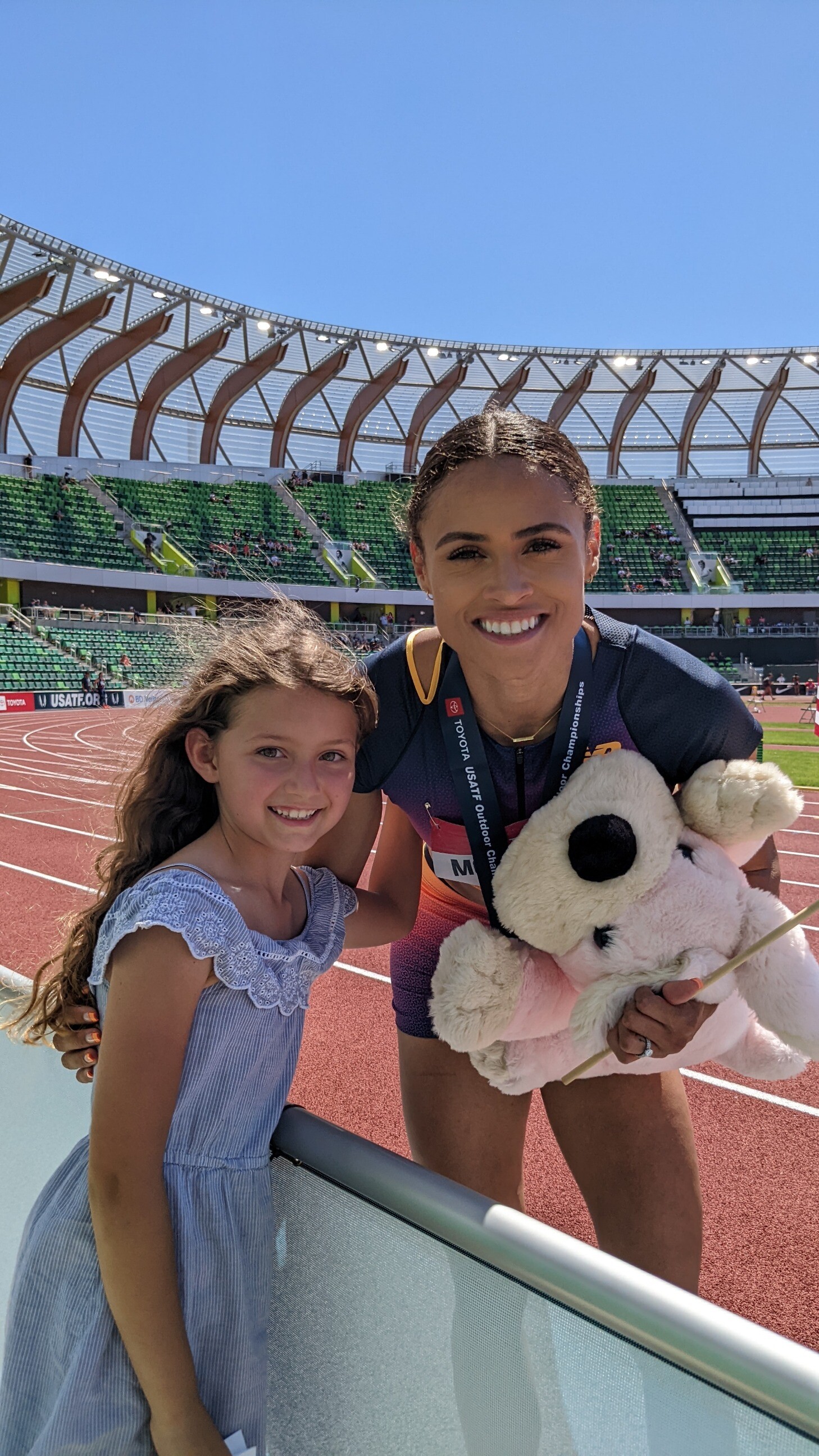
1. Melissa Jefferson — 10.69 2. Aleia Hobbs — 10.72 3. Twanisha Terry — 10.744. Tamari Davis — 10.785. Tamara Clark — 10.826. Celera Barnes — 10.86
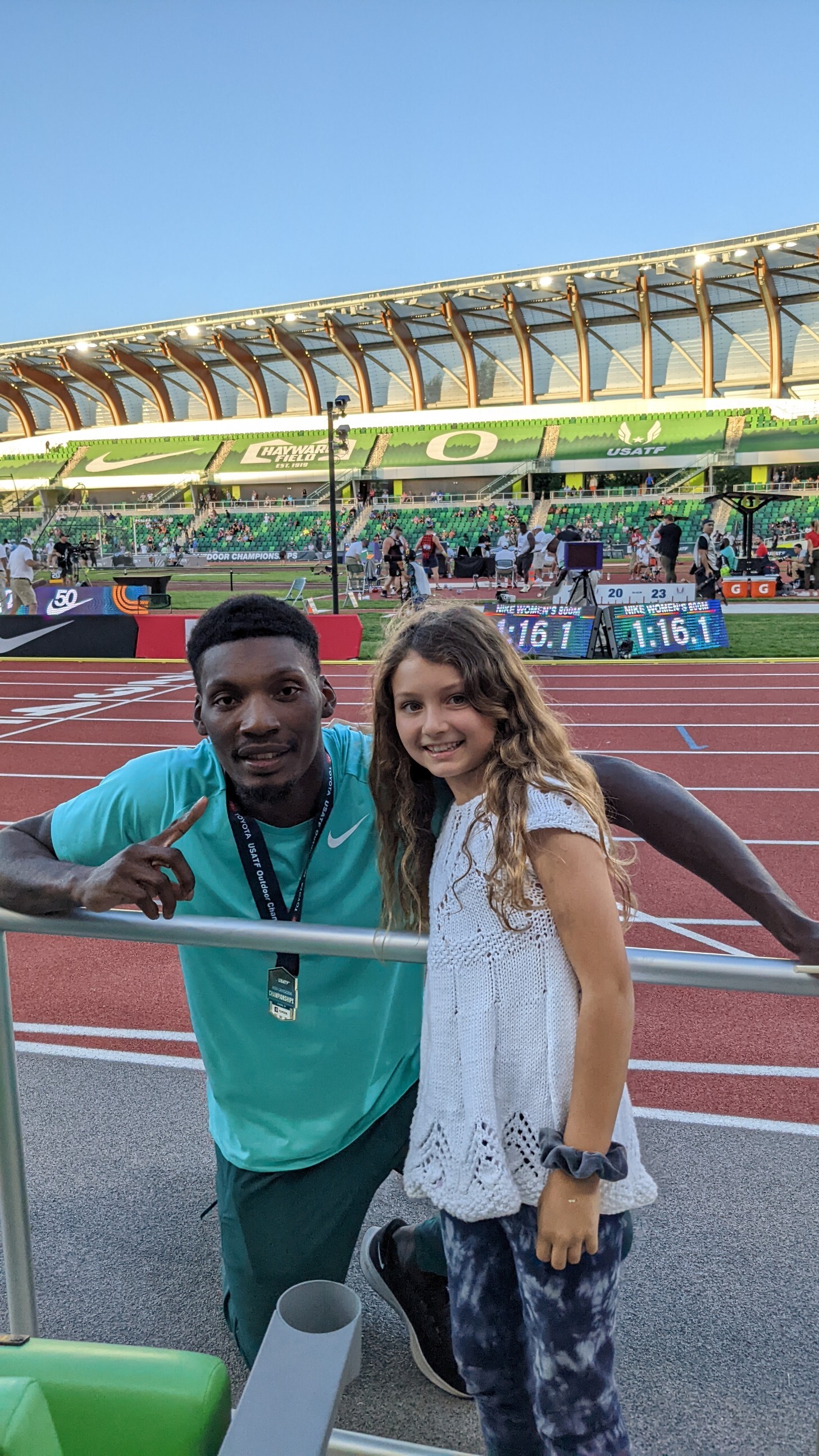
Women’s 400m
1. Talitha Diggs — 50.22 2. Kendall Ellis — 50.35 3. Lynna Irby — 50.674. Wadeline Jonathas — 50.845. Kennedy Simon — 50.906. Allyson Felix — 51.307. Jaide Stepter — 51.308. Kaylin Whitney — 51.31
Women’s 1500m
1. Sinclaire Johnson — 4:03.29 2. Cory McGee — 4:04.52 3. Elle St. Pierre — 4:05.144. Karissa Schweizer — 4:05.405. Heather MacLean — 4:06.40
Women’s 10,000m (from May 27)
1. Karissa Schweizer — 30:49.56 2. Alicia Monson — 30:51.09 3. Natosha Rogers — 31:29.804. Emily Infeld — 31:30.045. Weini Kelati — 31:39.90
Women’s 100m Hurdles
1. Keni Harrison — 12.34 2. Alaysha Johnson — 12.35 3. Alia Armstrong — 12.474. Tonea Marshall — 12.555. Tia Jones — 12.59DNS. Nia Ali (has bye onto world team)
Women’s 400m Hurdles
1. Sydney McLaughlin — 51.41 WR 2. Britton Wilson — 53.08 3. Shamier Little — 53.924. Anna Cockrell — 53.985. Shannon Meisberger — 55.39
Men’s 100m
1. Fred Kerley — 9.77 2. Marvin Bracy-Williams — 9.85 3. Trayvon Bromell — 9.884. Micah Williams — 9.905. Elijah Hall-Thompson — 9.906. Kyree King — 9.96DNS. Christian Coleman (has bye onto world team)
Men’s 400m
1. Michael Norman — 43.56 2. Champion Allison — 43.70 3. Randolph Ross — 44.174. Elija Godwin — 44.345. Vernon Norwood — 44.356. Bryce Deadmon — 44.547. Noah Williams — 45.048. Ismail Turner — 45.56
Men’s 1500m
1. Cooper Teare — 3:45.86 2. Jonathan Davis — 3:46.01 (doesn’t have standard)3. Josh Thompson — 3:46.07 (doesn’t have standard)4. Eric Holt — 3:46.15 (doesn’t have standard)5. Reed Brown — 3:46.28 (doesn’t have standard)6. Johnny Gregorek — 3:46.36 (has standard)11. Yared Nuguse — 3:47.46 (has standard)
Men’s 10,000m (from May 27)
1. Joe Klecker — 28:28.71 2. Grant Fisher — 28:28.81 3. Sean McGorty — 28:29.574. Dillon Maggard — 28:30.755. Shadrack Kipchirchir — 28:30.79
Men’s 3000m Steeplechase
1. Hillary Bor — 8:15.76 2. Evan Jager — 8:17.29 3. Benard Keter — 8:19.164. Duncan Hamilton — 8:20.235. Anthony Rotich — 8:23.15
Login to leave a comment
USATF Outdoor Championships
With an eye toward continuing the historic athletic success of 2022, USATF is pleased to announce competitive opportunities for its athletes to secure qualifying marks and prize money, including a new Grand Prix series, as they prepare for the 2023 World Athletics Championships in Budapest, Hungary.As announced a few months ago, the 2023 Indoor Championships in Nanjing, China have been...
more...NCAA Cross-Country Distances Still Aren’t the Same for Men and Women. Run Equal Wants to Change That
(A proposal has been submitted to the NCAA to equalize the men’s and women’s cross-country race distances by 2023.)
“I came by the 6K mark and thought, ‘F—, it’s going to be a long day,’” Cooper Teare says of this year’s 10,000-meter NCAA men’s cross-country championships. At the 6K mark, he was still with the leaders, but in the late stages of the race he collapsed from exhaustion, got back up, fell down again, and crawled across the finish line. The fastest collegiate miler of all time finished fourth to last. “The 10K is a different beast,” he says.
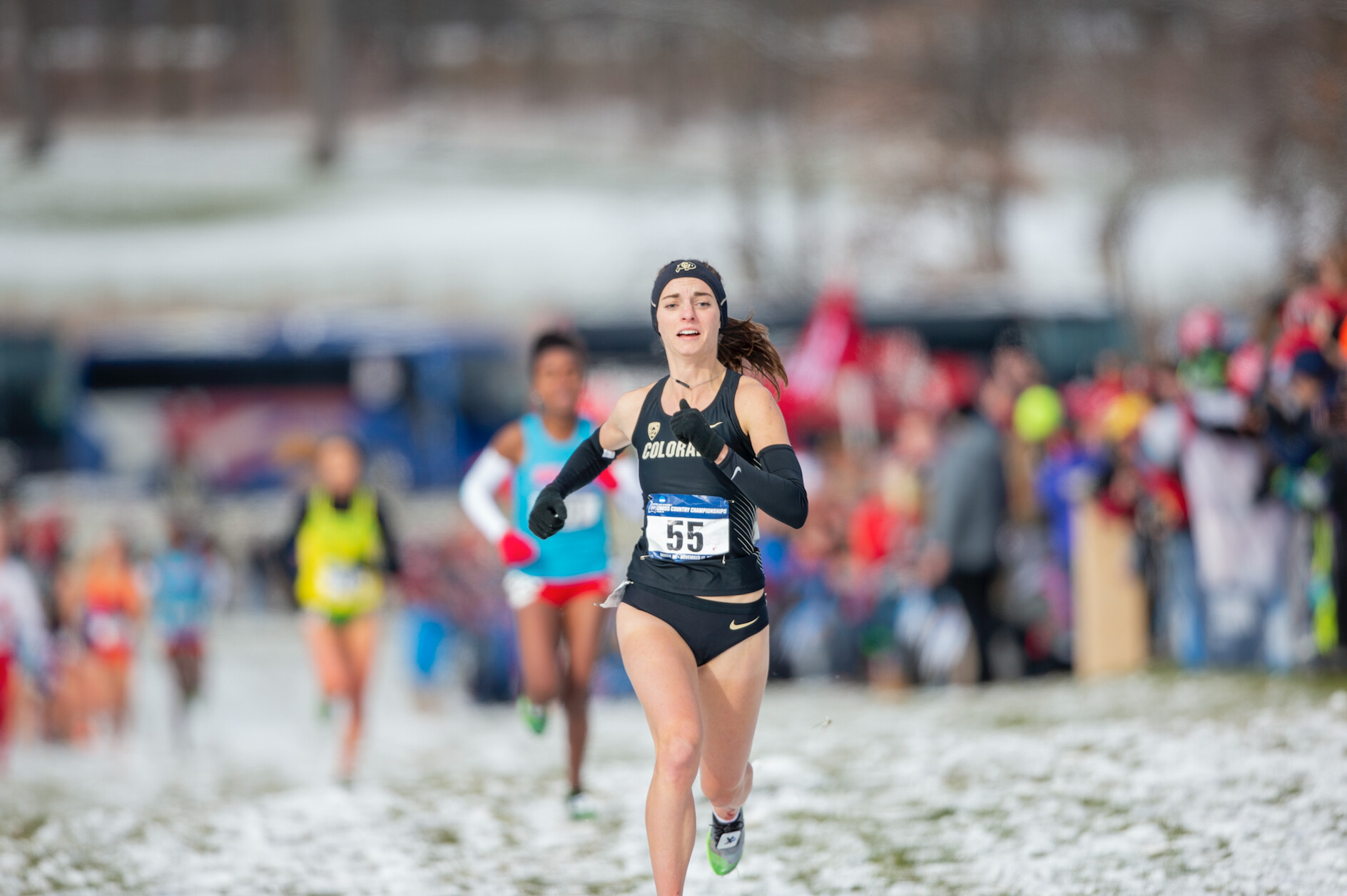
For the women, though, the race ends at 6K, where Teare wished it would’ve ended while his competitors surged forward. The fastest miler in the women’s race, Whittni Orton, was ultimately crowned the champion. Two different race distances, frankly, make men’s and women’s cross-country two different sports.
On January 5, Run Equal submitted their first proposal to the NCAA, in which their main demand was that men and women race the same distance in cross-country, across all three divisions, by 2023. In accordance with their petition, which had been circulating online for months, they proposed that everybody race 8,000 meters all season. Equalize the distances, they say. Run equal.
“Requiring women to race shorter distances is gender bias and sends an unmistakable message, intended or not, that women are not as capable as men,” the proposal says.
Molly Peters, the head cross-country coach for men and women at St. Michael’s College, started Run Equal by herself but always knew she wouldn’t be able to accomplish anything substantial alone. “The NCAA isn’t going to take ‘little me’ at my little college seriously,” Peters says.
To gain credibility, Peters assembled a team of pioneers in women’s running who share her view that the distances should be equal. Joan Benoit won the first ever women’s Olympic marathon. Lynn Jennings was a three-time cross-country world champion. Kathrine Switzer was the first woman to ever run the Boston Marathon.
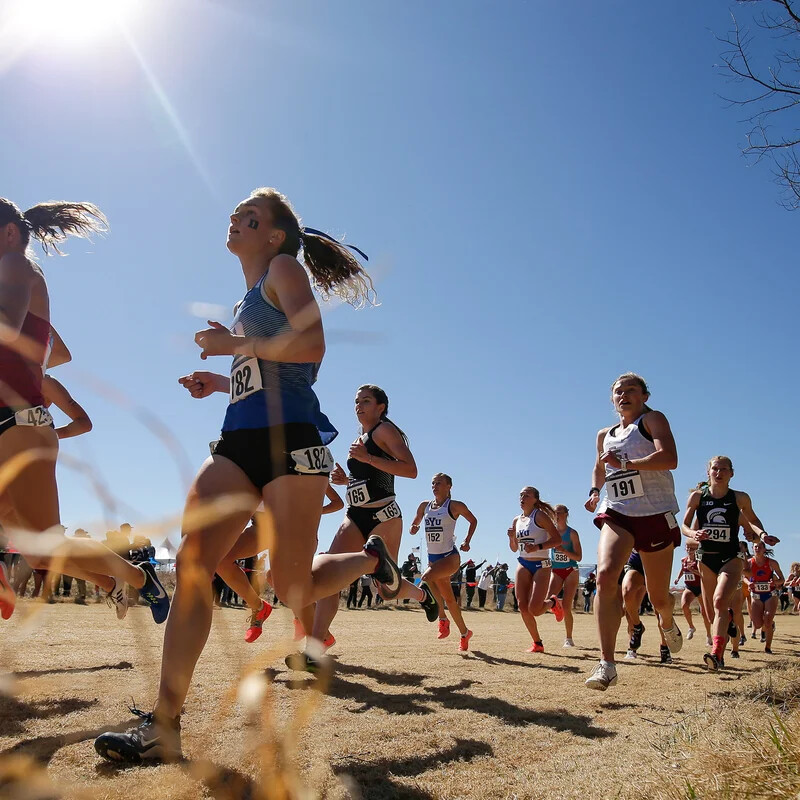
The hope is that when prominent athletes sign and share the petition, it’s like a snowball. “When you get these big names on board, the NCAA will eventually have to answer to them,” Peters says.
Another one of the big names is Molly Huddle, a 10-time NCAA All-American and former American record holder in the 5,000 meters. “I always thought it was kind of weird we didn’t run the same distance, and here we are 20 years later still doing the same thing,” Huddle says. “I think it’s been stuck this way for so long just because we haven’t all really talked about it out in the open all at once.”
From 1928 to 1960, women were prohibited from competing in any event longer than 200 meters at the Olympics because it was thought that the strenuous aerobic activity would harm her ability to bear children. Now it’s commonly understood that the old rationale was wrong; to relegate women to a shorter distance event seems like a blind faith preservation of a tradition based on a misconception, a simple deferment to the status quo that favors an antiquated model.
Kara Goucher, the three-time NCAA champion and double Olympian, concurs. “You don’t see women running 3,000 meters on the track while the men run 5,000,” she says. “Women run the marathon too. They run hundred-milers. They can handle a few extra kilometers in cross-country.”
Goucher says her college coach at the University of Colorado, Mark Wetmore, used to joke, “The men get to enjoy their time for 30 minutes, and you girls only get to enjoy 16 or 17 minutes. They get to be in the spotlight for much longer. That’s not fair.” There’s a truth at the joke’s center: The men’s race is presented as a more serious affair, the main event of the day.
When Goucher won her NCAA cross-country title in 2000, it was the first year the women had ever raced 6K. It had previously been standard for women to race 5K. When the increase in distance first took effect, Goucher says, everybody thought participation among women would drop dramatically, that they wouldn’t be able to field full teams. That didn’t happen. The number of women participating in Division I cross-country steadily increased for the next five years.
While there may be popular support for increasing the women’s race distance, there’s no consensus around what the race distance should be. The proposal submitted to the NCAA calls for 8K for all because Peters and many of her allies see that distance as “a great compromise.” But others disagree.
“I like the 10K at the national championships. It makes it harder,” Goucher says. “But what’s most important is that they’re equal.” Goucher believes there should be a meaningful differentiation between track and cross-country. She says, “They’re different sports, and they should require different types of athletes.”
Huddle offers a different perspective. “Back when I was running I wanted to run 8K, what the guys do all season,” she says.“I’m not so sure about 10K. That’s a daunting distance to jump up to as a freshman—for the men too.”
Peters understands the challenges of organizing an initiative like this and isn’t necessarily worried about the contention. She also spearheaded the movement to equalize the NCAA’s race distances in nordic skiing, which has some similarities with cross-country: both sports are endurance races, and they both traditionally have required women to race a shorter distance than men. Her initiative, which was fittingly called Ski Equal, was mostly successful.
After pressure from Peters and some of the sport’s top athletes, the NCAA Ski Committee opted for an incremental transition to hosting equal distance races between genders. This year, seven of the eight races on the formal circuit were equal in distance. Last year only two were. A few years before that none of them were.
As a sport, cross-country hasn’t yet seen the changes that nordic skiing has, even though the conversation about equalizing race distances isn’t new. There still isn’t a single opportunity for women to race longer than 6K during the NCAA season. But maybe now the time is finally right.
While the USATF cross-country championships have been 10K for both men and women since 2015, other governing bodies are now beginning to make changes to reckon with the implicit messaging behind the history of unequal race distances. European Athletics recently announced that for the first time in 2023 they will lengthen the women’s race distance to match the men’s. Soon the unequal race distances will be unique to the NCAA.
“There’s pressure right now for the NCAA to push for gender equality,” says Peters, referencing the recent Kaplan Reports, which aim to provide a thorough review of gender equality issues in various NCAA championships. The reports followed a TikTok videothat went viral in March showing the dramatic differences between the men’s and women’s practice facilities at last year’s NCAA March Madness basketball tournaments. People are seriously talking about gender equality in sports right now; the window is wide open.
Regardless of the changes that happen in other sports, during the upcoming cross-country season Peters plans to host some women’s 8Ks at her college, where she’s the meet director. Rather than wait for governing bodies to comply with her vision, she’ll model the system she wants to see. “It pains me to host races that aren’t equal,” she says. “I guess it’ll soon be time to put my money where my mouth is.”
by Matt Wisner (Women’s Running)
Login to leave a comment
Oregon distance runner Cooper Teare leaves Ducks for pro career with Nike
The Ducks’ star distance runner recently signed a sponsorship contract with Nike and will not return for what would’ve been his senior season of indoor and outdoor track.
“I’ve loved every second of being a Duck,” Teare said. “It was kind of a hard decision but I’m happy I’m with the one I made.”
Teare leaves Oregon as a two-time collegiate record holder (indoor mile and distance medley relay), a two-time NCAA champion (DMR and outdoor 5,000), and three-time school record holder (5,000, mile, DMR).
All of those accomplishments came during a memorable junior season in 2021 when Teare and former teammate Cole Hocker spent six months keeping Oregon’s men’s distance program in the national spotlight as they raced together through the U.S. Olympic Track & Field Trials at Hayward Field.
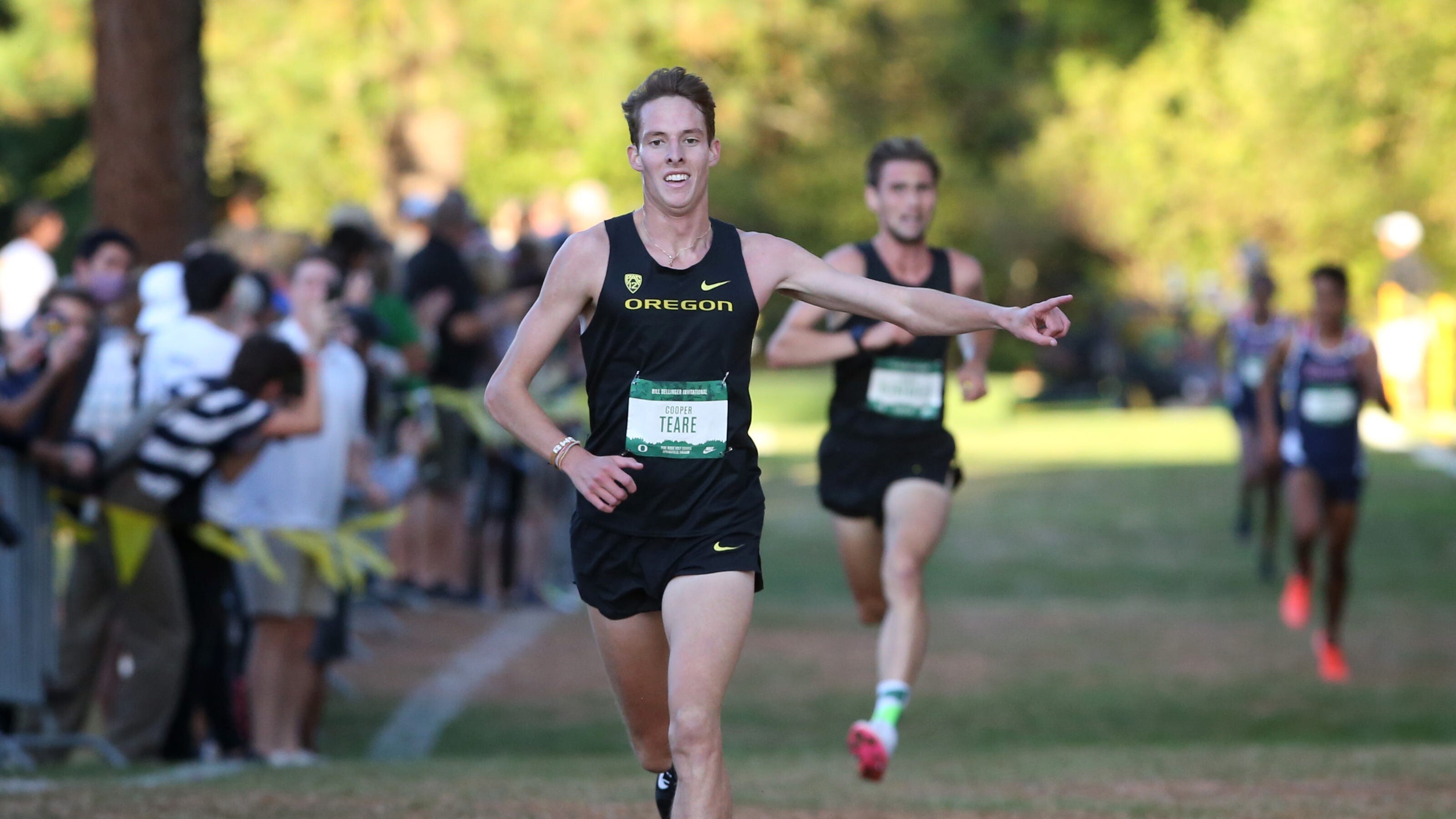
That’s where Teare’s season ended, with a fourth-place finish in the 5,000 meters. Hocker won the 1,500 and finished sixth at the Tokyo Olympics before leaving the Ducks after one season to sign with Nike in September.
Teare said he also had an opportunity to turn pro over the summer, but wanted to run one more cross country season for Oregon as he wrapped up his business degree.
“I’ve sort of been going through the process for months now,” Teare said. “Some people thought I was going to turn pro right after the outdoor track season so it was nice to have a little bit of extra time to go through the motions and talk to the people I had to talk to.”
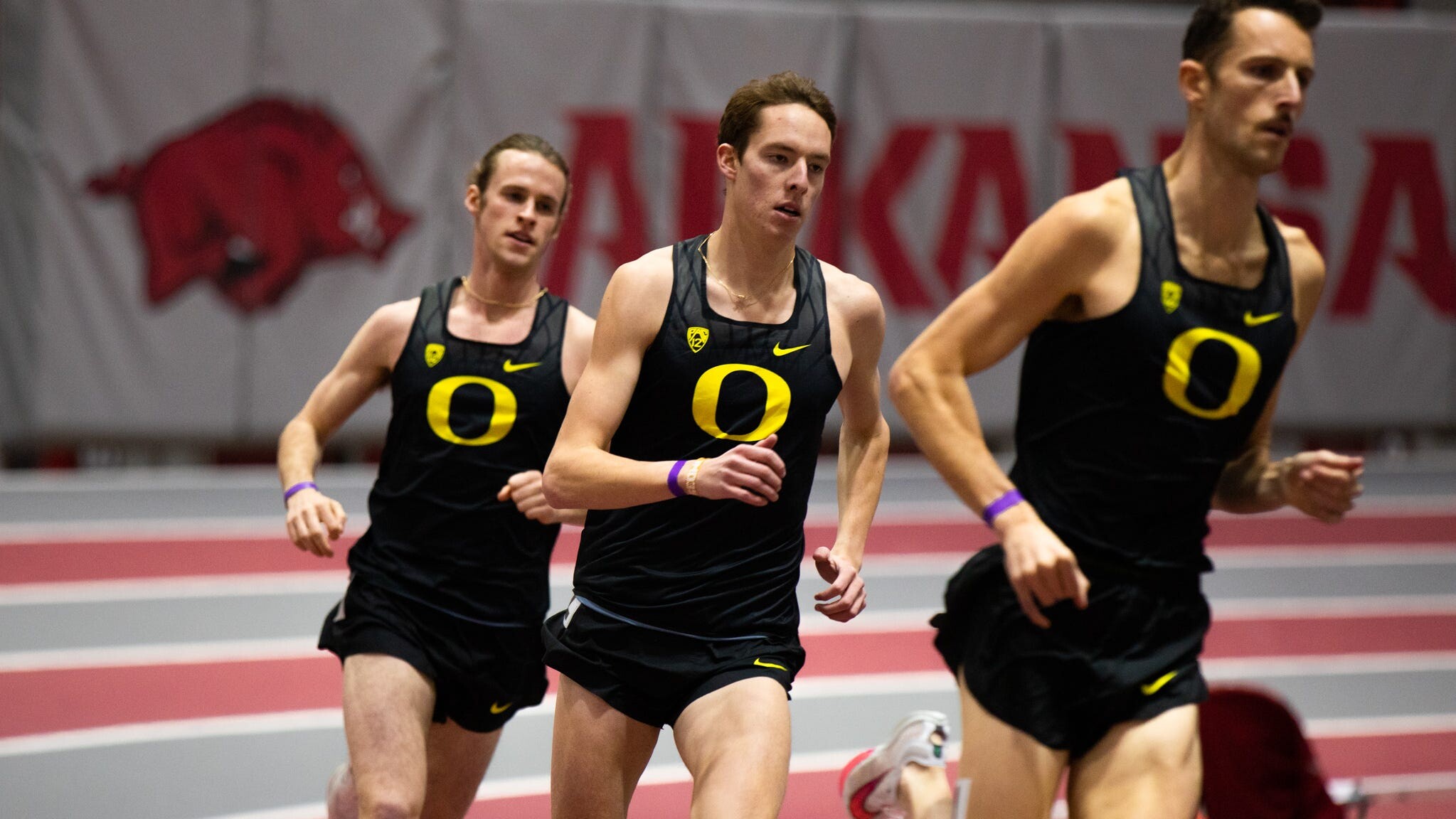
The cross country season opened on a positive note as Teare earned his first collegiate victory at the Bill Dellinger Invitational at Pine Ridge Golf Club in Springfield. He was also the runner-up at the Pac-12 championship meet.
But at the NCAA championships on Nov. 20, Teare’s legs gave out late in the 10,000-meter race and he crawled his way to the end before regaining his balance long enough to collapse across the finish line in 247th place — just three spots out of last.
“I left nothing in the tank and it just wasn’t my day,” said Teare, who was a cross country all-American in 2019 when he finished sixth. He didn’t compete in cross country during the delayed 2020 season.
Teare said it didn’t take long after that race to decide his collegiate days were done.
“That was a hard way to end it off but also I felt it was time to start a new chapter,” he said. “I talked to my coaches and we all got on the same page and everything fell into place and made sense. … I was considering going pro up right up until the start of cross country.
"The nice thing was (Nike) had seen enough of me and I had proven myself to the point where cross country wasn’t going to change much. They were ready to support me no matter what happened.”
His performance at the cross country championships did nothing to dim the track season he had earlier this year, which was highlighted by a collegiate record in the indoor mile at 3:50.39 and winning the outdoor title in the 5,000 when he ran 13:12.27. That is the fastest time ever by an American collegian and second all-time only to Henry Rono’s 1978 record of 13:08.4.
Teare is staying in Eugene to begin his professional career and will continue to be coached by Oregon associate head coach Ben Thomas. Hocker has a similar arrangement and Teare has been able to witness first-hand his training partner’s transition to the pros during the last few months.
“It was kind of nice having Cole as the guinea pig,” Teare said with a laugh. “It’s been kind of cool to see him go about figuring it all out and I think that will make it easier for me as well.”
As Teare wraps up his final days in the classroom, he is mapping out a path to next summer and what it will take to compete in the World Athletics Outdoor Track & Field Championship meet at Hayward Field.
“It doesn’t feel real,” Teare said. “It hasn’t really set in. It’s really hard to get a grasp of, OK, now I’m doing this as my job. I think once I’m done with school here in the next week it’s going to start to feel more real.”
by Chris Hansen
Login to leave a comment
McLaughlin smashes world 400m hurdles record in Eugene with 51.90 and other highlights
In a culture saturated by so many other sports, those in the USA fret about who can be the face of athletics.
Who can be featured on television news? Who can be a crossover figure like gymnast Simone Biles? Who can be a Carl Lewis or a Jackie Joyner-Kersee?
As the 10-day US Olympic Trials closed on Sunday night (27) in Eugene, Oregon, there was a deep reservoir of young candidates – none more so than Sydney McLaughlin. The 21-year-old became the first woman to break the 52-second barrier in the 400m hurdles.
Record temperatures approaching 44C delayed the programme by five hours, but there was no delaying the inevitable: McLaughlin was going to break the world record, and she did so with her time of 51.90.
“I definitely saw it coming,” said Dalilah Muhammad, the world and Olympic champion. “She looked so good in the rounds.”
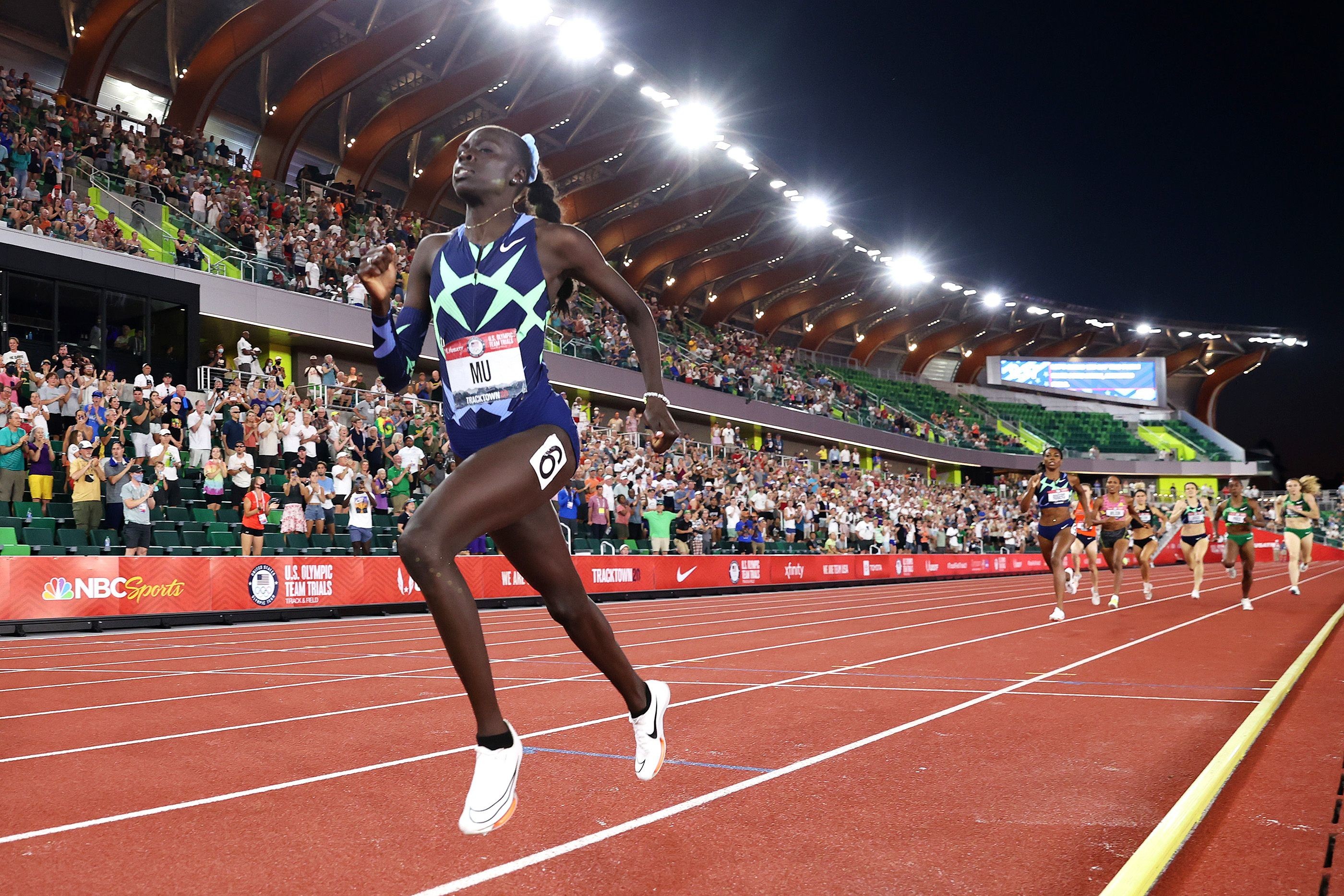
McLaughlin’s time broke the record of 52.16 set by Muhammad at the World Athletics Championships Doha 2019. McLaughlin, second in that race in 52.23, pulled away from Muhammad over the final two hurdles in Eugene.
Even with 2020 lost to the pandemic, the world record has been broken three times in 23 months – twice by Muhammad, once by McLaughlin.
That was the highlight of another historic day of young record-breakers. The trials ended with 11 world-leading marks, five by men and six by women.
Athing Mu, 19, set a trials record in the 800m; Cole Hocker, 20, became the youngest men’s 1500m champion in 110 years; JuVaughn Harrison, 22, became the first to make the US team in the high jump and long jump since Jim Thorpe in 1912; Noah Lyles, 23, ran a world-leading 200m, and Erriyon Knighton, 17, again lowered the world U20 record in the 200m.
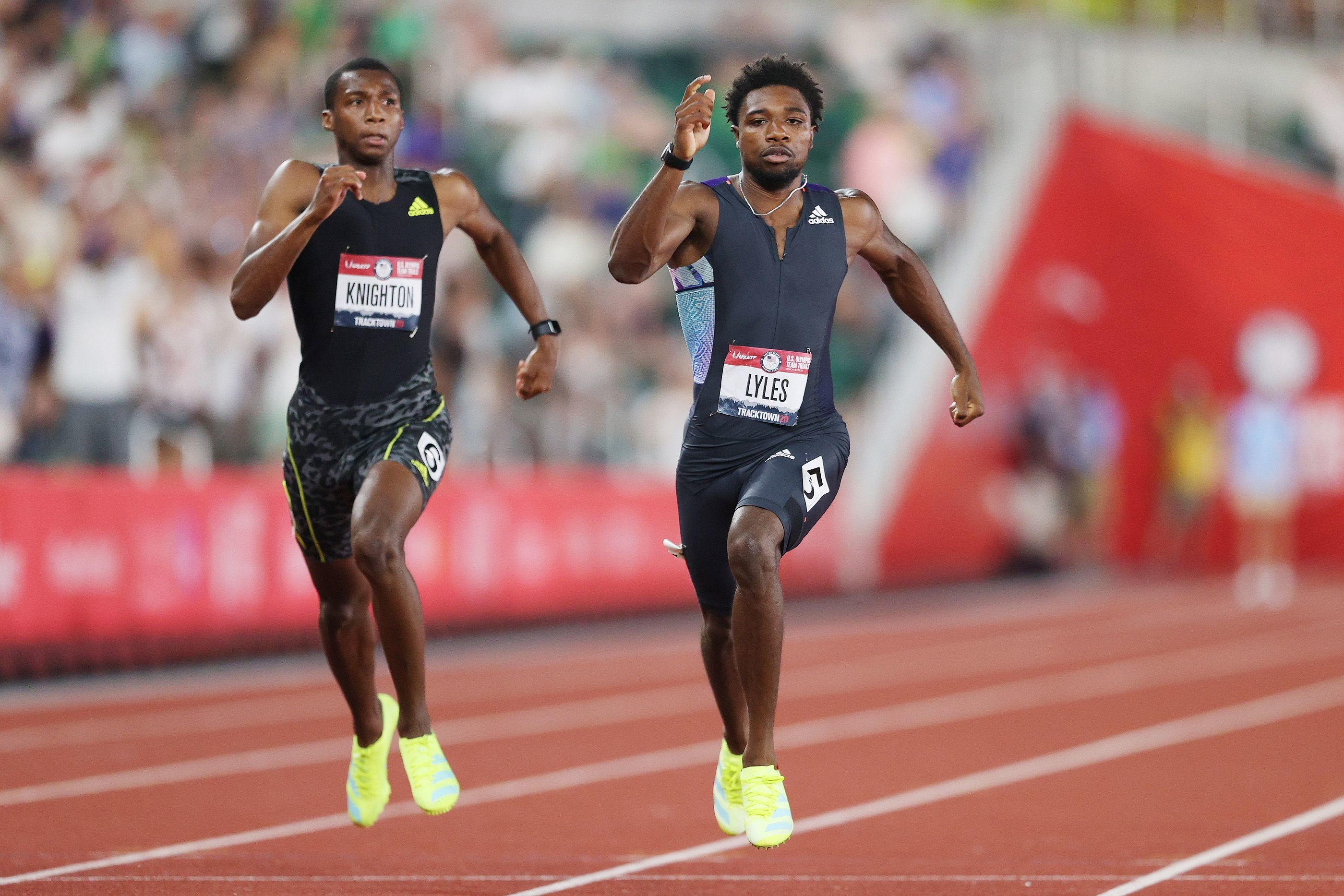
McLaughlin has been projected as the sport’s face in the United States since she made an Olympic team at age 16. After one college season at Kentucky, she turned professional.
“I was growing into my own person,” she said. “My faith is the biggest change. Trusting God and knowing He will carry me through.”
Her record-setting might not be over. Not only could McLaughlin lower her world record at the Tokyo Olympics, she should be named to the 4x400m relay team that could set one – though that mark (3:15.17) is arguably a much bigger ask.
McLaughlin trains in Los Angeles under Bobby Kersee, who also coached Joyner-Kersee.
“Bobby knows how to put things together when the time comes,” McLaughlin said.
Muhammad, who over the past 12 months has had to contend with injuries and a bout of Covid-19, finished second in 52.42, the third-fastest time of her career. NCAA champion Anna Cockrell took the third spot in 53.70, nearly a full second faster than her previous PB, in beating Shamier Little (53.85). Olympic bronze medallist Ashley Spencer stumbled over an early hurdle and finished seventh.
Likely to join McLaughlin in that 4x400m team is Mu, considering earlier this month she set a collegiate record of 49.57 – faster than the winning mark at the USA Trials.
Mu ran a world-leading 1:56.07 to win the 800m, breaking her own North American U20 record. World silver medallist Raevyn Rogers was second in a PB of 1:57.66 and US record-holder Ajee Wilson third in 1:58.39. Not until late did Wilson overtake Michaela Meyer, who was fourth in 1:58.55.
Mu sat in the pack for the first lap, passing through 200m in 27.54 and 400m in a swift 57.53. She then made her move on the second lap, positioning herself at the front with 200 metres to go. She kicked hard as she came off the final bend and, having covered the final lap in 58.54, crossed the line almost two seconds ahead of her nearest opponent.
In the men's 1500m, Hocker was in sixth place with about 150 metres left but used a closing rush to overtake Olympic champion Matthew Centrowitz, 3:35.28 to 3:35.34.
Yared Nuguse, 22, was third in 3:36.19, overtaking the most recent national champion, Craig Engels, who is also this year’s fastest US man (3:33.64).
Hocker put a finger to his lips past the finish as if to shush critics. An “in-the-moment thing”, he said.
“Last year I wasn’t at this level. I was nowhere near this level,” he said. “This whole year, I felt like I was proving myself to the world, but also proving my talent to myself. There’s a lot of negative talk out there, and I wanted to silence everyone.”
Hocker has not met the 3:35 Olympic standard but has a world ranking that looks sufficient to secure his spot on the US team.
He is the youngest US Olympian in the men’s 1500m since Marty Liquori, then 19, in 1968. And he is the youngest national champion in the men’s 1500 or mile since 1911, when Abel Kiviat won a few days after turning 19.
Hocker has run 23 races since 29 January. Thirteen were PBs. Of the 10 others, eight were prelims and one an NCAA indoor title.
“I’m impressed that he’s been able to do that since January and is showing no signs of letting up,” said Centrowitz.
Harrison won the high jump at 2.33m, beating Darryl Sullivan on countback. Olympic medallist Erik Kynard was fourth.
The delay allowed Harrison more rest for the long jump, in which he jumped a PB of 8.47m, completing the best ever one-day jumps double.
“It just gave my legs more time to recover and gave me a chance to eat something,” Harrison said. “I was ready to go earlier, even though they said it was too hot.”
Marquis Dendy, the 2016 world indoor champion, was second at 8.38m and Steffin McCarter third with 8.26m. Olympic champion Jeff Henderson was sixth with 8.08m, meaning he won’t defend his title in Tokyo.
In a competition that showcased newcomers, it was appropriate that the last athlete to secure an Olympic berth was Knighton. He is the youngest man on the US team since Jim Ryun in 1964.
World champion Lyles won the 200m in a world-leading 19.74, followed by Kenny Bednarek, 19.78, and Knighton, 19.84. Knighton broke his own world U20 record of 19.88 from Saturday’s semifinals. He set a world U18 record of 20.04 in Friday’s first round, then twice broke that.
Lyles was fourth in the 200m at the 2016 trials as an 18-year-old.
“Ever since then, the mind-set of being an Olympian has been on my mind,” said Lyles. “Having the pause on 2020 has probably been my hardest yet. I don’t think anyone can prepare you for the lion you have to slay at the Olympic Trials.”
In the heptathlon, the year’s top three scores were posted by Annie Kunz (6703), Kendall Williams (6683) and Erica Bougard (6667). Kunz, whose previous best was 6153, did not have the Olympic standard until this week.
Kunz broke or was close to her PBs in all seven disciplines. She started with a marginally wind-assisted 12.95 in the 100m hurdles and followed it with 1.81m in the high jump, an outdoor PB. She then threw 15.73m in the shot put, which moved her into the lead overall – a position she maintained after clocking a PB of 23.71 in the 200m to end the first day at the top of the leader board.
She started the second day with a huge PB of 6.50m in the long jump, but briefly relinquished her lead after the javelin (45.06m). Kendell Williams, who ended the first day in third place, was having a strong second day with marks of 6.73m in the long jump and 47.41m in the javelin. It meant Williams went into the final event with a two-point lead over Kunz.
But Kunz ensured she stayed ahead of Williams in the 800m, eventually clocking 2:15.24 to retake the lead with a score of 6703, moving to fifth on the US all-time list. Williams, who finished second with a PB of 6683, is now sixth on that list.
Taliyah Brooks, in fourth place through five events, had to withdraw because of the heat.
“I have grown immensely since 2019,” said Kunz, who finished 13th at the 2019 World Championships. “It feels like the sky’s the limit now.”
The men’s 5000m, held in the morning to escape the worst of the heat, was won by Olympic silver medallist Paul Chelimo. He gradually veered from the rail to inside of lane four to force out Bowerman Track Club’s Grant Fisher and Woody Kincaid.
Chelimo was first in 13:26.82, followed by Fisher (13:27.01) and Kincaid (13:27.13). Their respective closing laps were 52.83, 52.99 and 52.74. Cooper Teare was fourth in 13:28.08 off a 53.97 last lap.
Fisher and Kincaid became the first pair to finish in the top three of 5000m and 10,000m at the same US Trials. Qualifying in both had been done previously, but never two at the same trials.
by World Athletics
Login to leave a comment
The lights are back on at Hayward Field, but Cole Hocker steals the spotlight
There weren’t any extra bells or whistles for the grand opening of Hayward Field Friday night, no pageantry or fireworks for the debut of Oregon’s new $200 million facility.
But there was track and field, and after nearly three years of no home meets, that was more than enough.
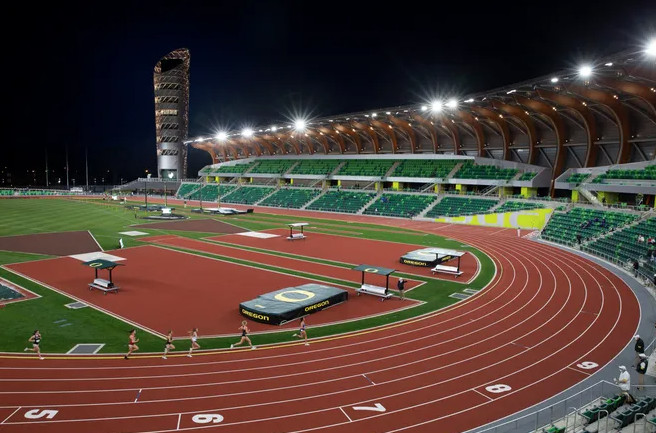
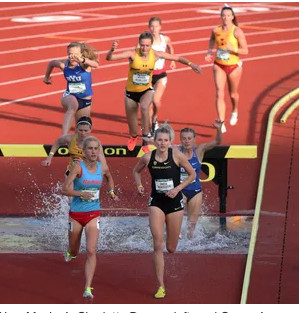
“This has been a long time coming for us here and our program,” Oregon coach Robert Johnson said after Day 1 of the multi-team Hayward Premiere, the Ducks’ first meet since June of 2018. “It’s been a surreal moment today. … Thankful, blessed, happy. I woke up this morning excited and giddy and couldn’t wait to shoot off the gun.”
Oregon picked up four wins and had several impressive performances, though none stood out more than Cole Hocker’s late surge to win the men’s 1,500-meter Invitational in the first home meet of his Oregon career.
The sophomore from Indiana, who captivated the running community with his national titles in the mile and 3,000 meters at the NCAA Indoor Track & Field Championship meet in March, looked sharp as ever Friday, winning in 3 minutes, 38.99 seconds.
“It was definitely different and even though it wasn’t a full stadium, there was something different about the energy especially with other teams being in there and in the mix,” Hocker said. “They definitely put on a good race, too. It was fun.”
It was also close, as Hocker went into the home straight with challengers right on his heels. But one last burst of speed gave him all the separation he’d need to get the win.
“Yeah I’m really happy with (the race),” he said. “I just went in with one goal to win and I executed that. I’m really happy about it because of where we are in training and completely training through this race and not really prepping specifically for this. I’m happy with the result.”
Talem Franco of BYU was second in 3:39.79 and Iowa State’s Festus Lagat was third in 3:39.93. Oregon’s Reed Brown was fifth in 3:40.90.
Cooper Teare was entered in the race but didn’t run. The Oregon senior, who set the collegiate record in the indoor mile in February, did pace the men’s 10,000 Invitational through the first 4K. He’s also entered in the 800 Saturday.
A sparse crowd of family and close Oregon associates were sprinkled throughout the stadium, as were members of all the participating teams.
It wasn’t loud, but for an opening night in the era of COVID-19 restrictions, it was still special.
“The feeling was unreal,” said Oregon senior hammer thrower Austin Tharp, a Sheldon High graduate who has a childhood worth of memories competing at the previous Hayward Field. “Just walking in with all the officials and other competitors, it felt like Hayward Magic was back. I’m from Eugene and my last home meet was the Oregon Twilight in 2018 so it was really nice to have family watching me compete at Hayward again for the first time in a few years.”
Tharp finished third Friday night, throwing a PR 195-feet.
For the trivia books, senior distance runner Jack Yearian was the Ducks’ first winner in the new stadium, as he ran a 40-second PR with a time of 14:1122 in the men’s open 5,000 race.
Tori Sloan was Oregon’s first field event winner, as the junior set a big PR with a mark of 19-5 1/4. Her previous best was 17-11 1/2.
Aneta Konieczek made her long-awaited outdoor debut for the Ducks with a second-place finish in the women’s steeplechase in a PR 9:59.42, making her the third-fastest performer in Oregon history and only the fourth Duck to run under 10 minutes.
“It was amazing to be out there today and have a pretty good opener,” Konieczek said. “I was just really excited, not only because it’s been awhile but also, it’s our track and I’d never raced at Hayward (Field) before. You could hear everyone and even with the smaller crowd, the magic was there.”
Konieczek transferred to Oregon in 2019 from Division II Western State in Colorado where she was a steeplechase all-American with a 10:01.02 PR. During the recently completed indoor season, Konieczek placed seventh in the mile at NCAA championship meet.
New Mexico senior Charlotte Prouse was the winner in a collegiate-leading 9:54.65. The two-time NCAA runner-up took the lead from Konieczek with two laps to go and slowly separated from the Oregon redshirt junior.
“After indoor nationals, there was some down time and I hadn’t really done any hurdle work coming into today but I thought everything felt pretty good," Konieczek said. "I didn’t really know what to expect especially in my first (steeplechase) race in three year but it helped to have Charlotte Prouse in the race so we could work together.”
Oregon’s Matt Wisner, a senior transfer from Duke, set a six-second PR of 3:42.95 in his victory in the men’s open 1,500.
Carmela Cardama Baez, the 2019 NCAA outdoor runner-up, finished third in women’s 10,000 Invitational in 32:57.01, nearly topping her PR of 32:55.50. Boise State’s Clare O’Brien won in 32:43.70, and Weber State’s Lexie Thompson was second in 32:49.62.
Oregon State’s Lindsay McShane and Sydney Guthrie-Baker went 1-2 in the women’s hammer. McShane won with a throw of 208-03 and Guthrie-Baker threw 195-07.
Login to leave a comment
3 Key Reasons Why Records Keep Getting Broken in 2021
It’s not just the shoes. But they certainly help.
The times have been spectacular across the globe.

In Europe, four men broke the previous world half marathon record in December in Valencia, Spain. Earlier this month, Gudaf Tsegay of Ethiopia set a world record for the indoor 1500 meters on February 9, running 3:53.09 at a meet in Liévin, France.
Closer to home, Americans Sara Hall, Keira D’Amato, Martin Hehir, and Noah Droddy reshuffled the list of top 10 Americans in the marathon.
On the track, Donavan Brazier, Bryce Hoppel, Elle Purrier, and Grant Holloway have set American or world records.
High school and college athletes are in on the action, too. Hobbs Kessler set the high school indoor mile record with his 3:57.66, and Cooper Teare of the University of Oregon took almost 2 seconds off the collegiate mile record when he ran 3:50.39. Athing Mu at Texas A&M, who was thought to be an 800-meter runner, has been turning in world-class 400-meter splits and anchored her teammates to a collegiate record in the 4x400 meters.
What’s going on with all these fast times? Yes, there is new shoe technology, but it goes well beyond that for these record-shattering runners.
Shoe technology that changed road racing is now changing track racing
Back in 2017, when Eliud Kipchoge attempted for the first time to break two hours in the marathon on a racetrack in Monza, Italy, he wore a new type of shoe from Nike, the Zoom Vaporfly Elite. The shoes promised a 4 percent efficiency benefit, through a combination of a new type of foam, which was lighter and more responsive than previous foams, and a stiff carbon fiber plate to stabilize the foam and move the foot as it pushes off the ground.
Nike’s innovative design has evolved since 2017 and has been emulated, with varying degrees of success, by other shoe brands, like Saucony and Adidas. Now the same technology—better foam with a stiff plate inside—has moved into track spikes, said Geoff Burns, a post-doctoral fellow at the University of Michigan who is researching biomechanics and sport performance.
“The absolute effect may be a little bit smaller,” he said. “But because of the controlled environment and frequency of racing on a track, it’s much more apparent.”
Burns said that although Nike’s competitors are closing the gap, he hesitates to say that they’ve caught up. He praises Adidas and Saucony road shoes, and Adidas and New Balance for track spikes. “But if I were getting on a starting line, for a marathon or a track race, I would be in the Nike shoes,” he said.
Races are set up in near-perfect conditions
With the pandemic, the traditional lineup of road races and track meets has gone out the window, as race organizers have grappled with how to stage events safely.
In their place, pro runners, needing to race, have turned to time trials. And many of these are set up according to exact specifications.
Take The Ten, a track meet on February 20 in San Juan Capistrano, California. In two 10,000-meter track races, athletes—almost exclusively from the Bowerman Track Club in Portland, Oregon—were paced to try to get the Olympic standard in the event, which is 27:28 for men and 31:25 for women.
In the women’s race, Vanessa Fraser and Courtney Frerichs (the American record holder in the steeplechase), set a perfect pace, running 74- or 75-second laps. Fraser led for the first two miles, Frerichs took over and set the pace through four miles, 16 of the 25 laps. Her teammates could turn off their brains and follow behind. In the end, Elise Cranny won in 30:47 and five women hit the standard, four from Bowerman plus Eilish McColgan of Great Britain. The results of the men’s race were similar: Evan Jager and Sean McGorty paced, Marc Scott won in 27:10, and five runners achieved the Olympic standard.
“We are fortunate to have [teammates] who can pace a race for three or four miles,” said Marielle Hall, a Bowerman runner who finished fifth in 31:21. “That doesn’t happen that often. We’re pretty lucky.”
The Marathon Project, on December 20 in Chandler, Arizona, was similar in some ways. Organizers picked a perfectly flat U-shaped loop. Runners went up one side of a 2.1-mile stretch of road and back down the other. Pacers for the top men and women kept a steady pace through 18 miles. In the end, Martin Hehir ran 2:08:59, and Sara Hall ran 2:20:32. Hehir is now eighth on the list of fastest U.S. marathoners; Hall is second among women.
Athletes have benefited from long training blocks—and now they’re itching to race
In a typical season, many college runners race too frequently. They compete in three seasons—cross country, indoor and outdoor track. They might travel the country every other week, chasing top-level competition and in track, qualifying marks for nationals.
But that’s not the case this year. Last March, just as the pandemic was spreading across the country, the NCAA canceled indoor nationals. (Many athletes were already at the meet.) The outdoor season was quickly called off, and the cross-country season, which was supposed to happen in the fall of 2020, was pushed to winter.
The result? College runners have had long blocks of uninterrupted training time with little or no racing outside of team time trials. They’re eager to race again, and they’re reaping the benefits of the extended period of training.
Pros, too, may have benefitted from less racing than usual. And many have the feeling that finally, now that racing is back in some form, it’s time to run fast, especially in the buildup to the Olympic Trials. “The pent-up demand to have races — that definitely has something to do with it,” said Mark Coogan, coach of Team New Balance Boston, who coached Elle Purrier to a 9:10.28 American record in the two mile on February 13.
In a sense, track athletes have been forced to train as marathoners do, with long blocks of dedicated training toward one event, Burns said. “I think there could be enormous gains to track and field performances by taking the same approach: Hunker down and focus.”
Marielle Hall said that training and limited racing through the pandemic has been “all been just one giant experiment.” Bowerman workouts, designed by head coach Jerry Schumacher, are getting harder. Splits they aim for during interval workouts are faster. They do more reps. “Those kinds of things are constantly evolving, changing to fit people’s new fitness level,” she said. “It looks a lot more effortless than it is.”
by Runner’s World
Login to leave a comment
University of Oregon student Cooper Teare clocks 3:50.39 mile in Fayetteville
University of Oregon student Cooper Teare made a huge breakthrough on the first day of the Tyson Invitational in Fayetteville on Friday (12), smashing his outright mile PB with 3:50.39 to move into the world indoor all-time top 10.
There were huge PBs across the board as his teammates Cole Hocker (3:50.55) and Charlie Hunter (3:53.49) finished second and third.
In an all-Oregon line-up, Angus Folmi and Reed Brown set the early pace, going through 600m just inside 1:26 and 1000m in 2:24.3. Teare, Hocker and Hunter maintained that tempo for the final two laps with 21-year-old Teare kicking to victory in a collegiate record of 3:50.39. His time ranks him seventh on the world indoor all-time list, just behind fellow US athletes Bernard Lagat and Johnny Gregorek, but ahead of Olympic champion Matthew Centrowitz.
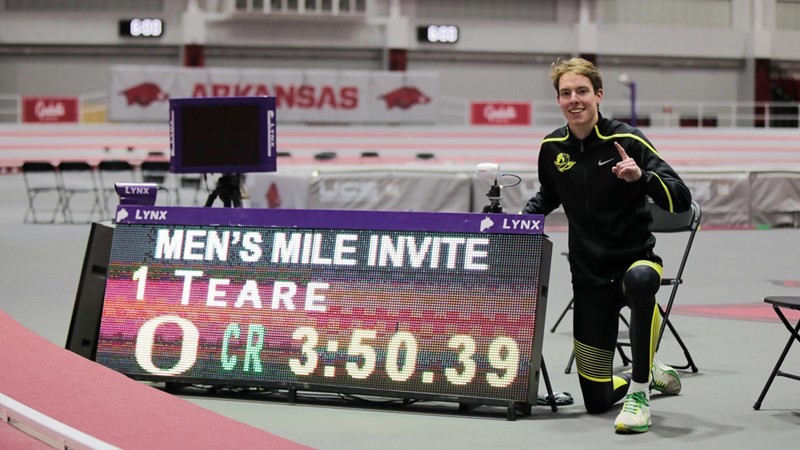
Hocker, aged just 19, crossed the line in 3:50.55 – the fastest indoor mile ever recorded by a teenager and good enough for eighth on the world indoor all-time list. Hunter’s 3:53.49, meanwhile, took a second off his own Australian indoor record, set just two weeks prior on the same track.
The en-route 1500m splits of 3:35.46, 3:35.63 and 3:36.94 respectively were also outright PBs for all three men.
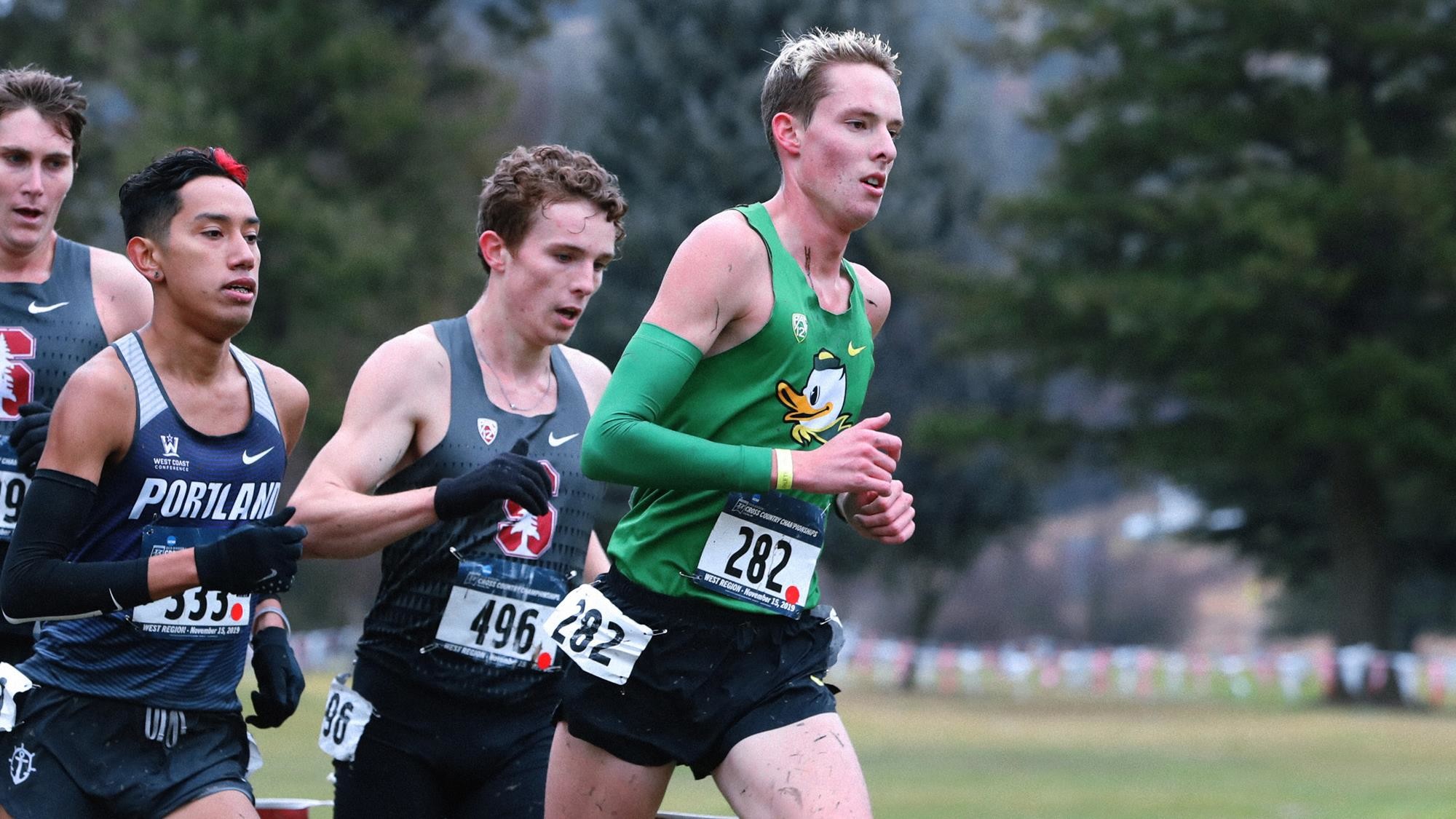
Isaac Grimes produced another world-leading mark in Fayetteville. The 23-year-old long jumper went out to 8.04m in round two then improved to a lifetime best of 8.27m in round five. He went even farther in the final round, sailing out to 8.33m. He now ranks just outside the US indoor all-time top 10. JuVaughn Harrison was second with 8.09m.
Elsewhere in Fayetteville, Bryce Deadmon sped to an indoor 400m PB of 45.22, the third-fastest time in the world this year, to win comfortably from Champion Allison (45.99).
The sprint hurdles finals were swift, too, with teenager Grace Stark winning the women’s race in 7.96 from Pan-American Games silver medallist Chanel Brissett (7.98), while former world U20 record-holder Trey Cunningham ran 7.55 to win the men’s event.
Fast 400s were the highlight of the first day of the Tiger Paw Invitational in Clemson on Friday (12). 20-year-old Randolph Ross won the fastest heat in a PB of 45.21, finishing just ahead of Jacory Patterson (45.24) and Trevor Stewart (45.55). Trinidad and Tobago’s Dwight St Hillaire took the second heat in 45.64 with 400m hurdles specialist Kyron McMaster placing second in 45.92.
Jamaica’s 2015 world champion Danielle Williams won the 60m hurdles in 7.87, while Tavarius Wright was the men’s 60m flat winner in 6.57.
At the Texas Tech Shootout in Lubbock, world U20 silver medallist Twanisha Terry trimmed her 60m PB to 7.13, while Brendon Stewart won the men’s short sprint in 6.58. Teenager Bailey Lear set an outright PB of 51.94 to win the women’s 400m.
by World Athletics
Login to leave a comment


